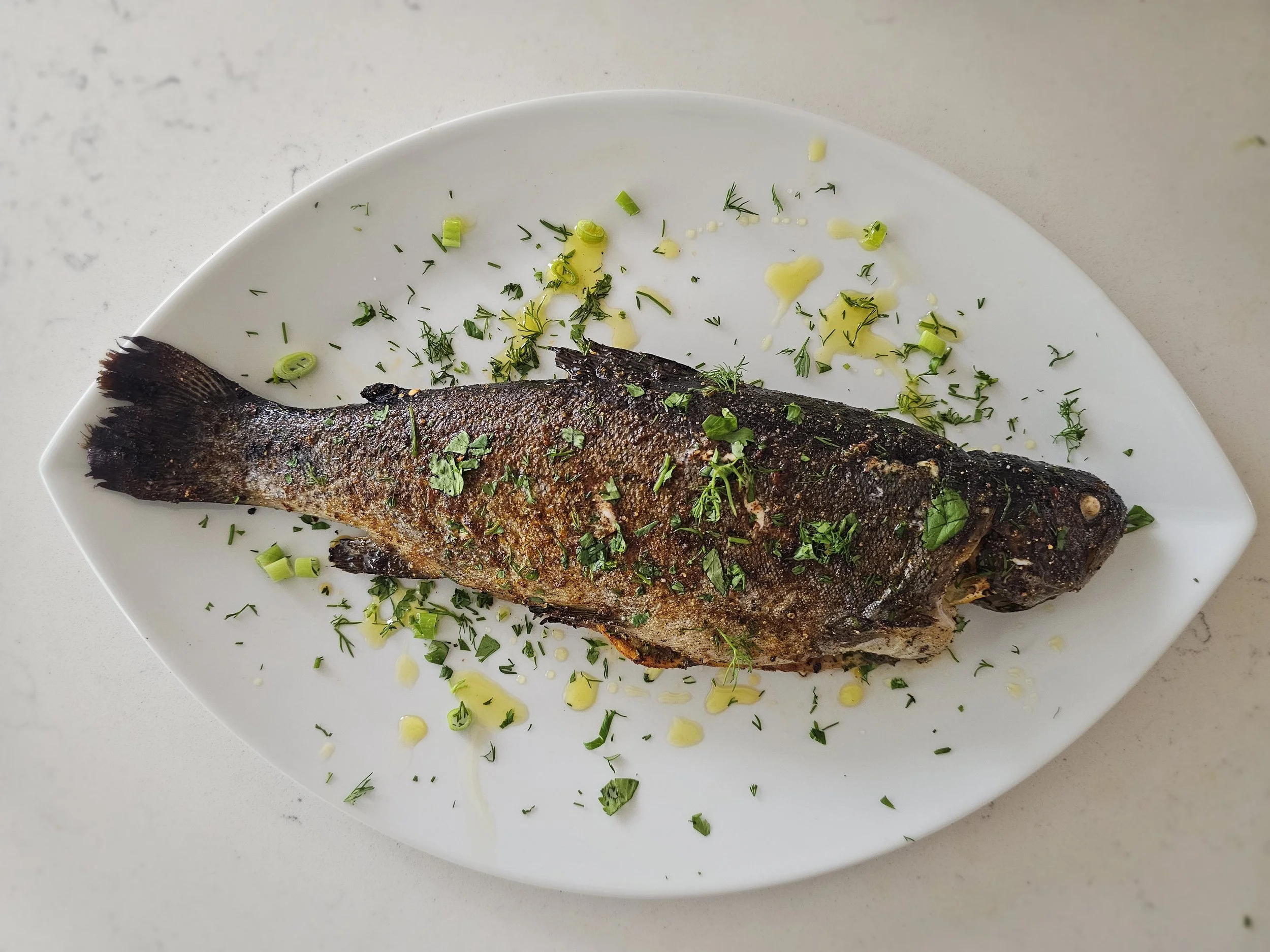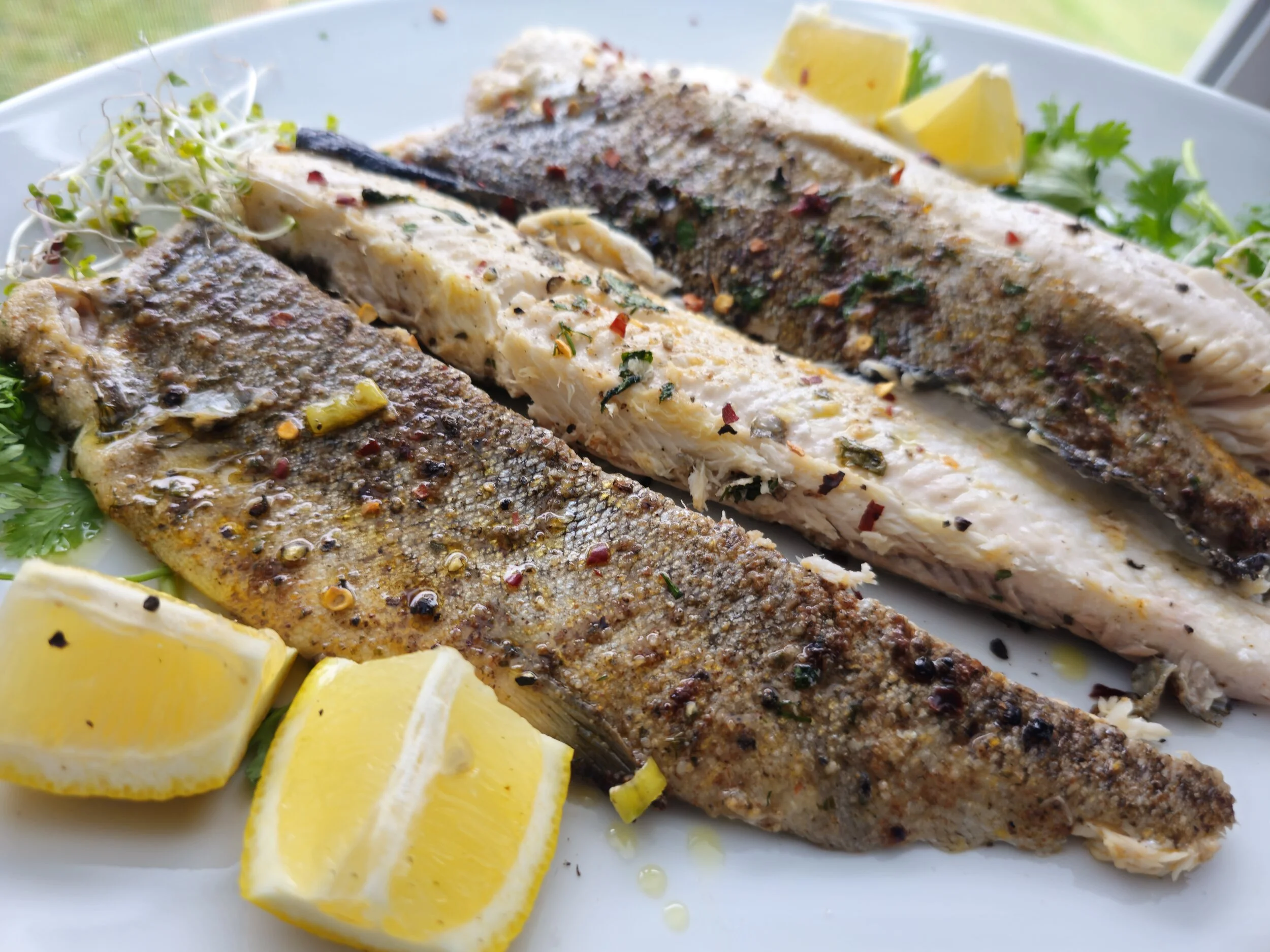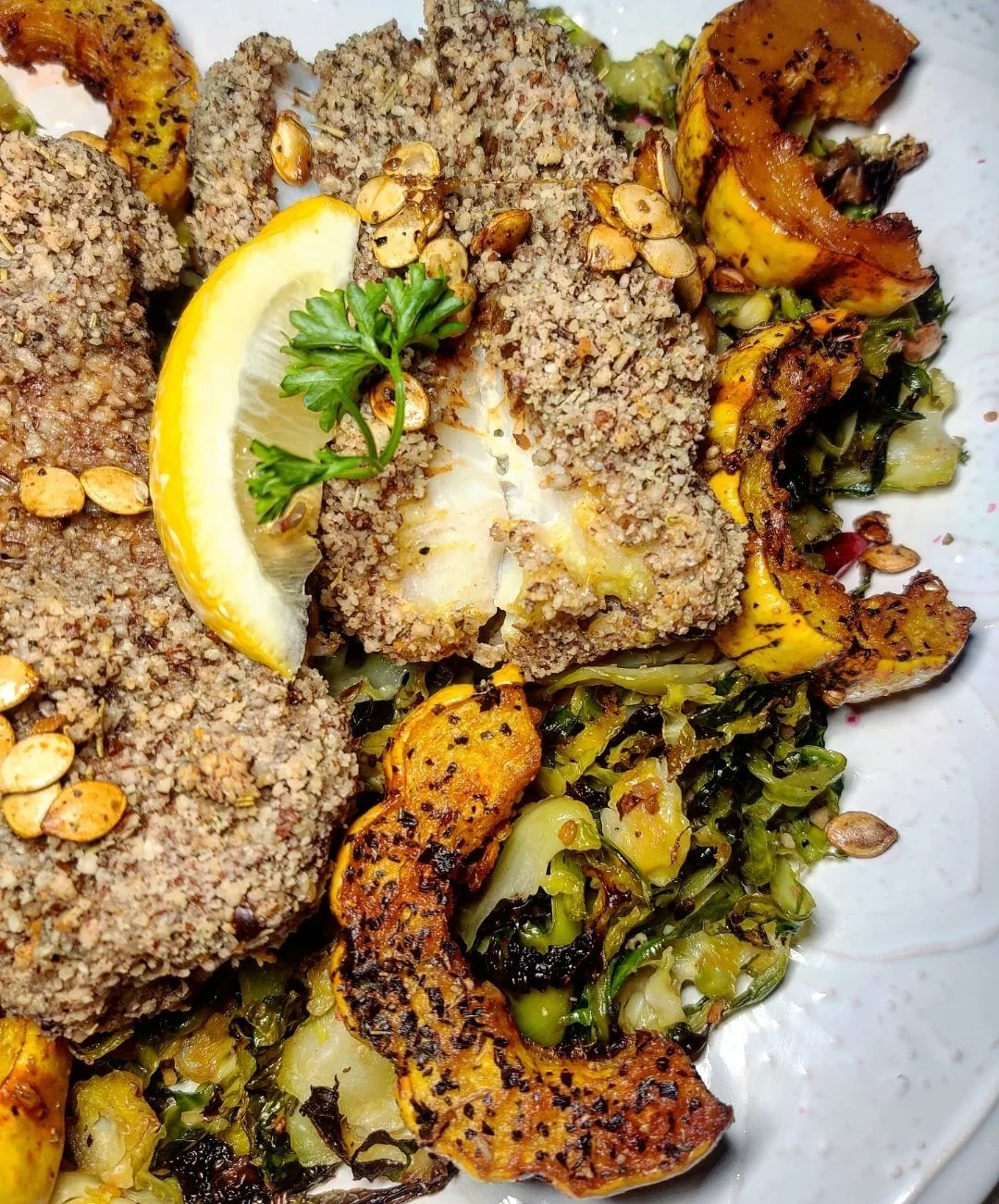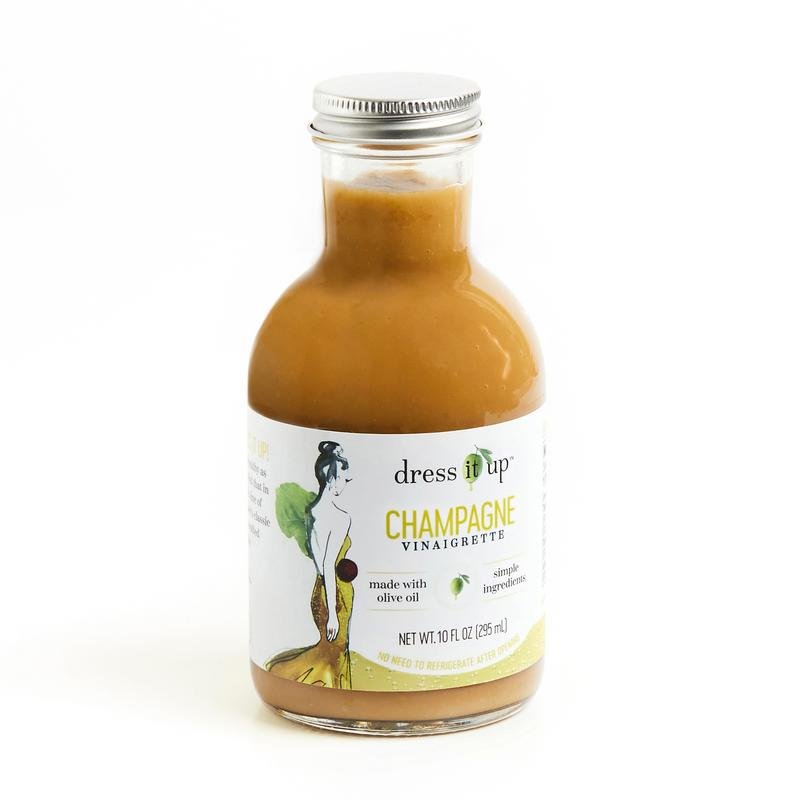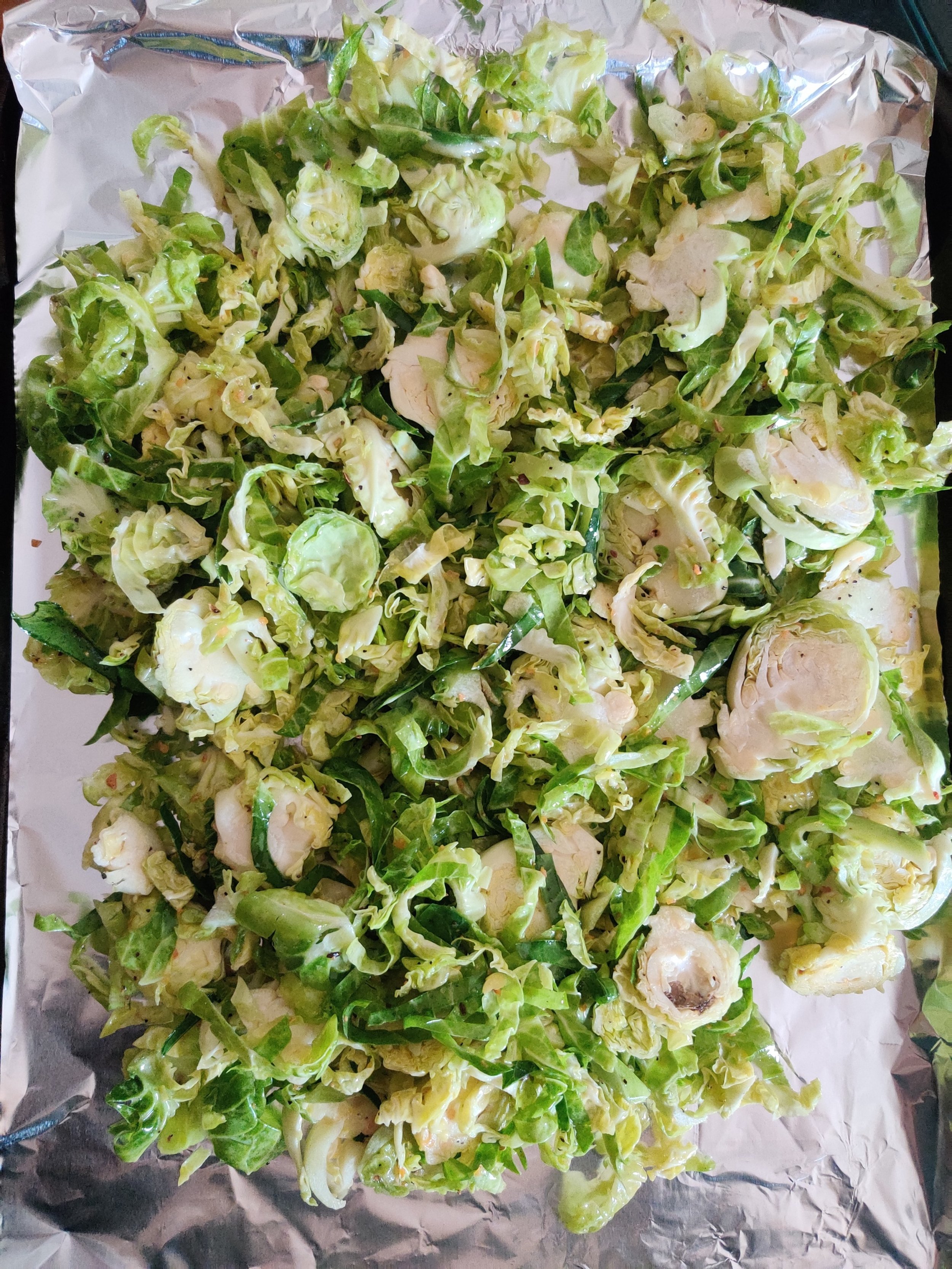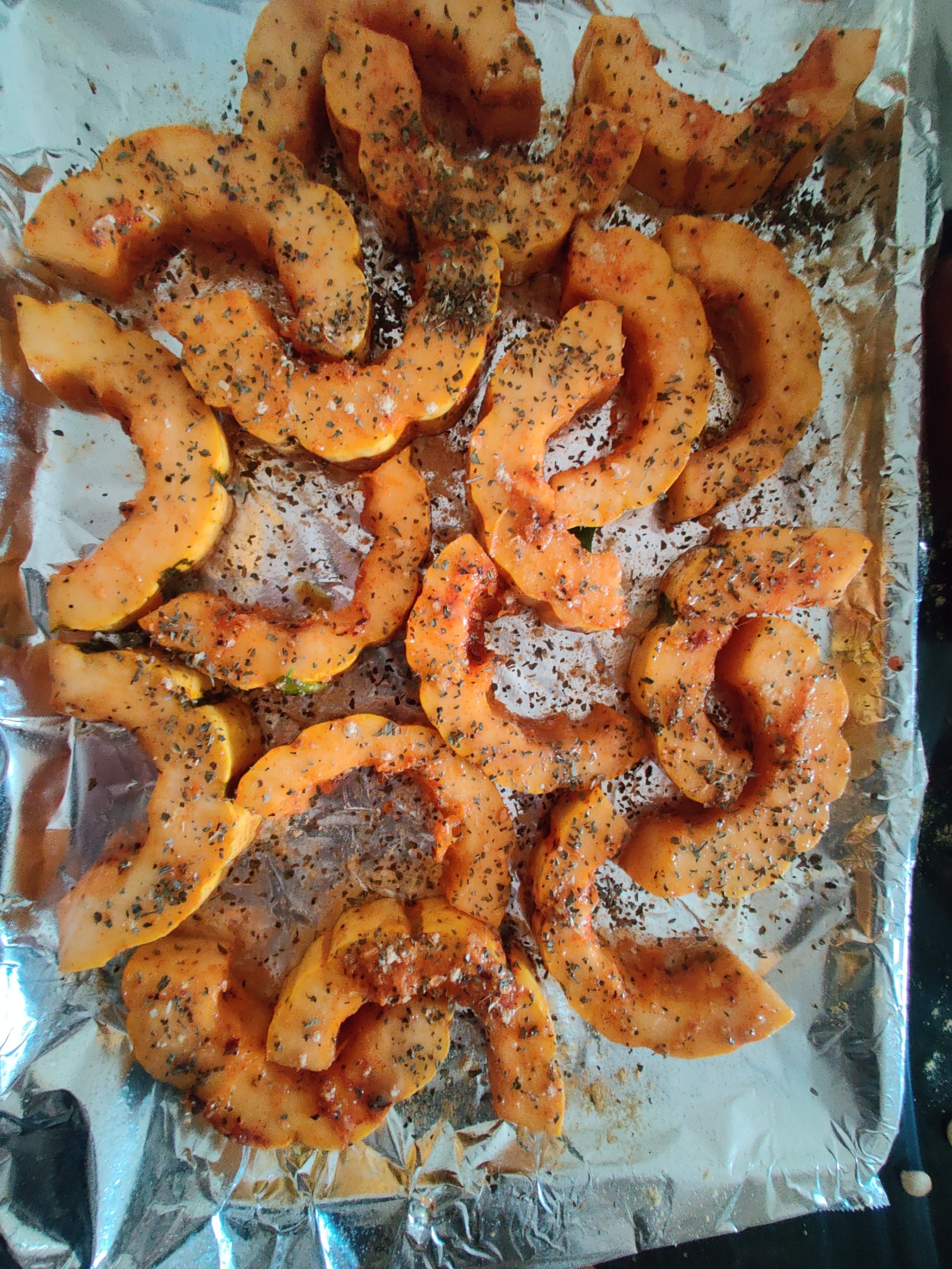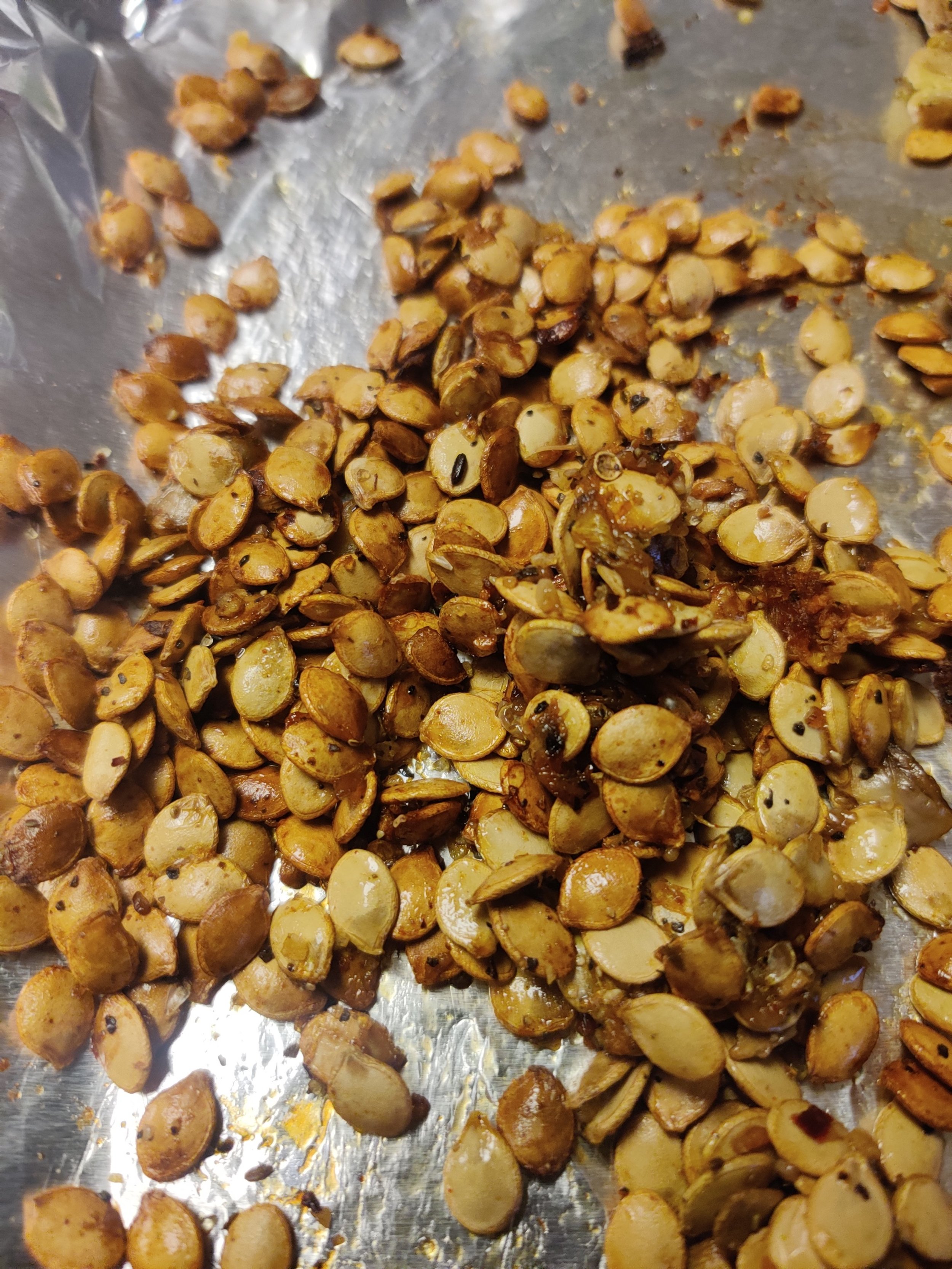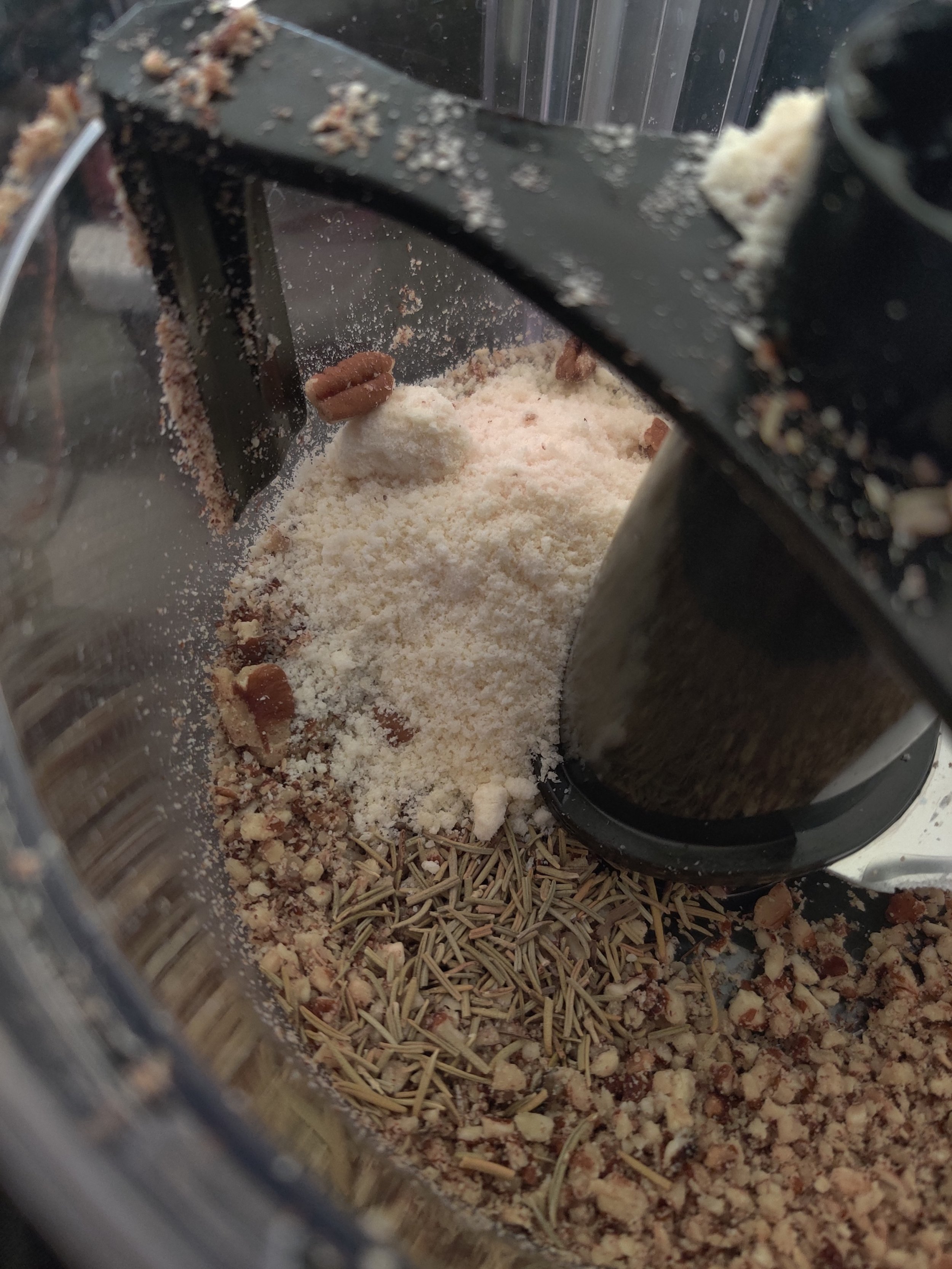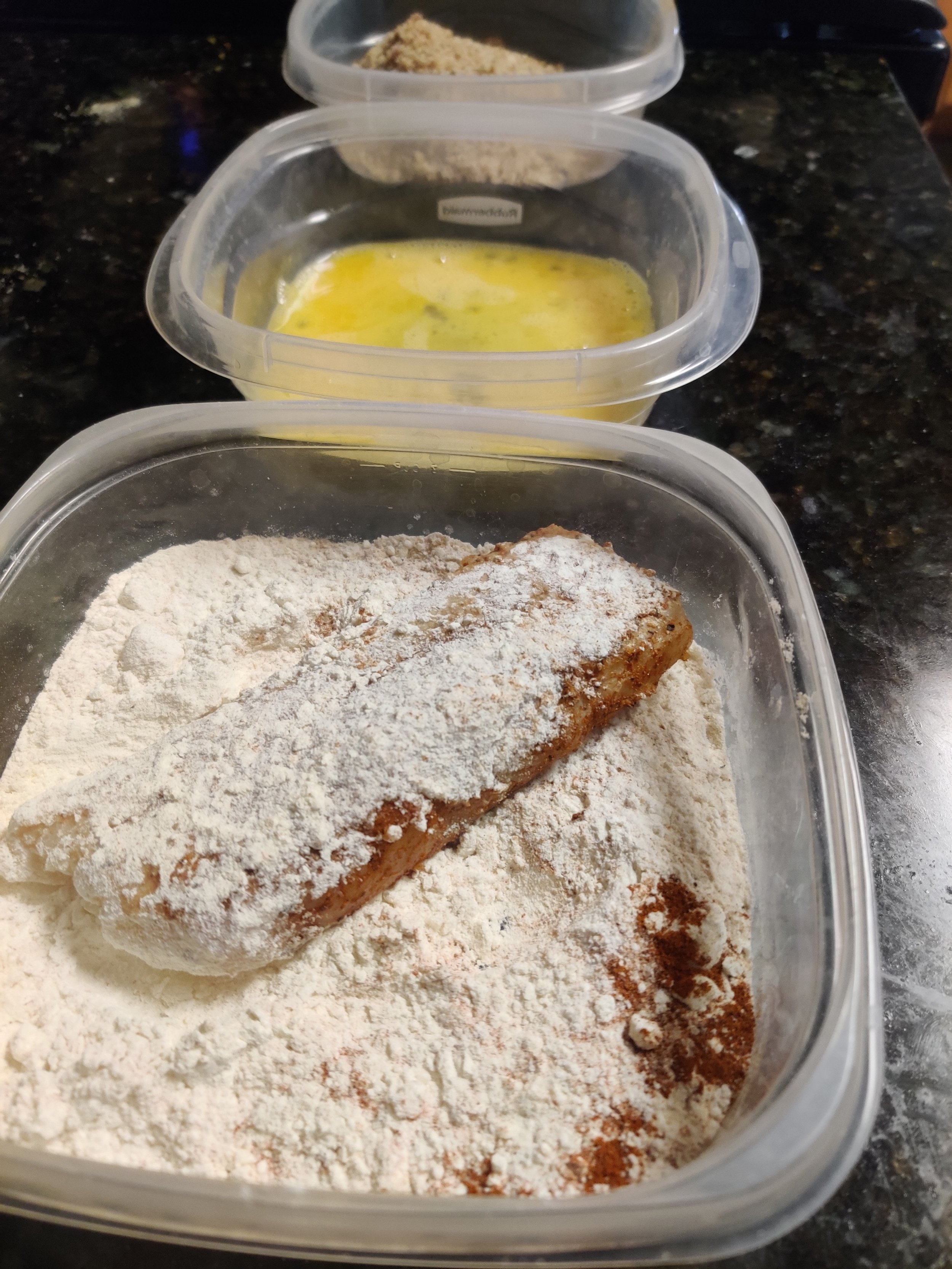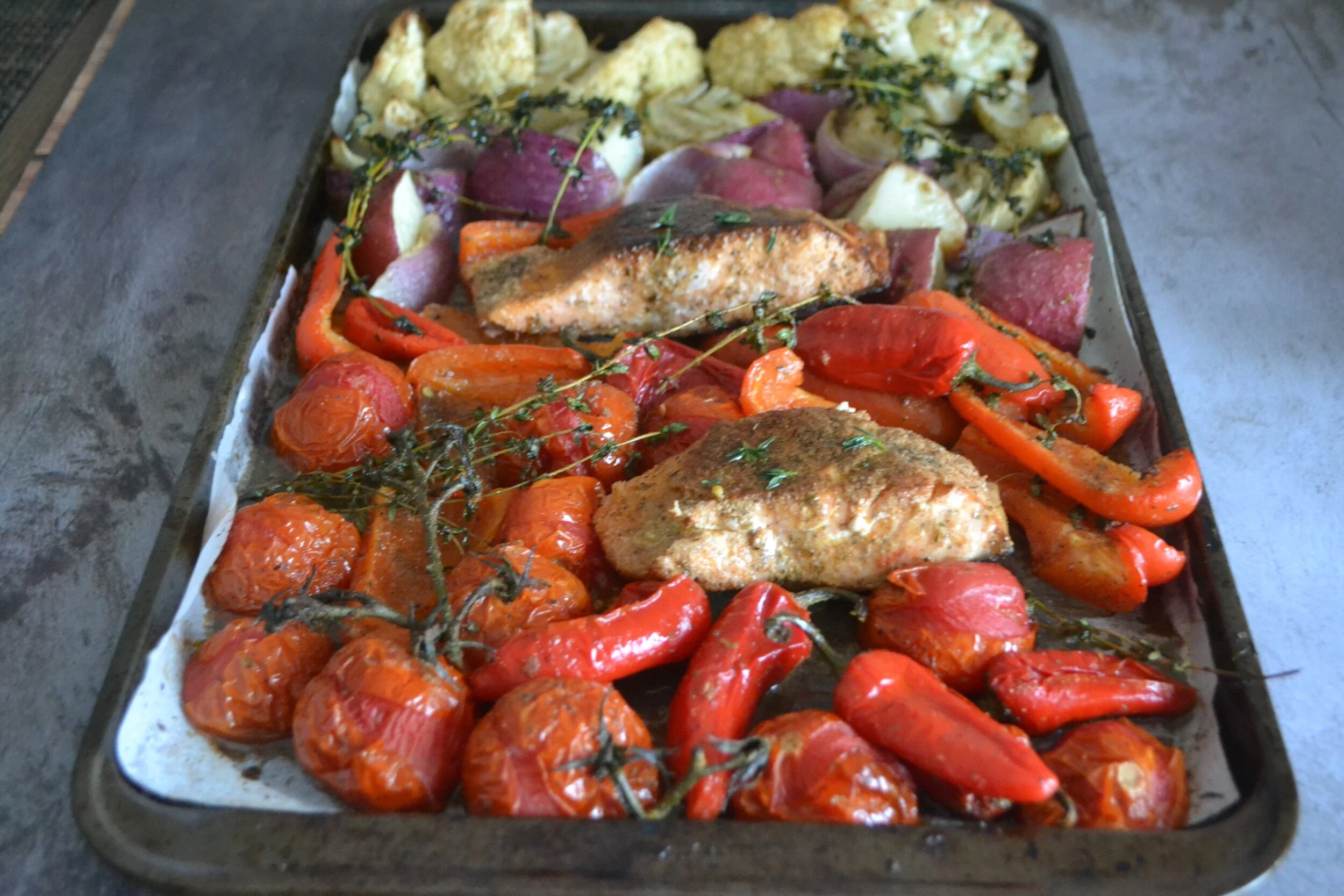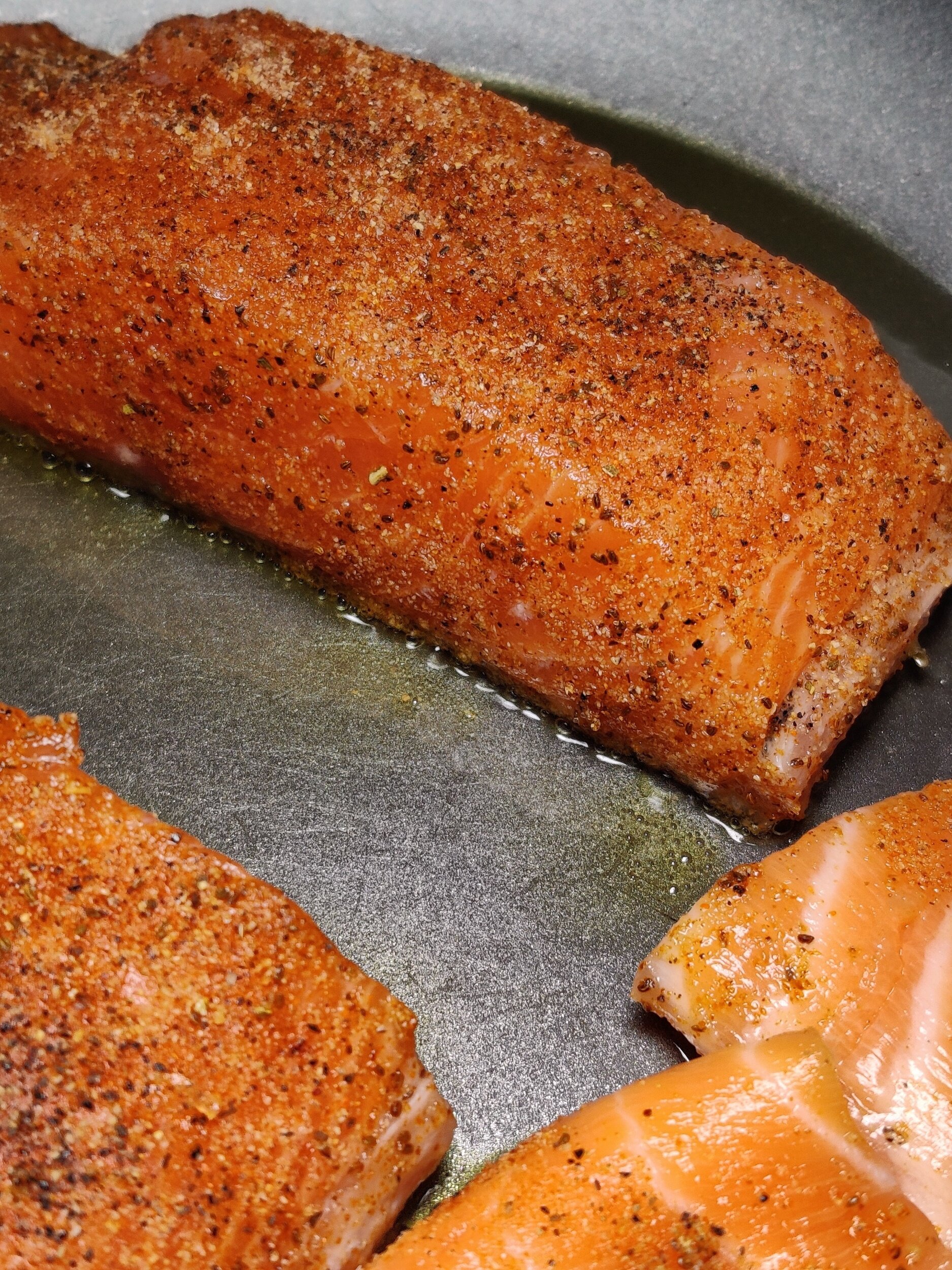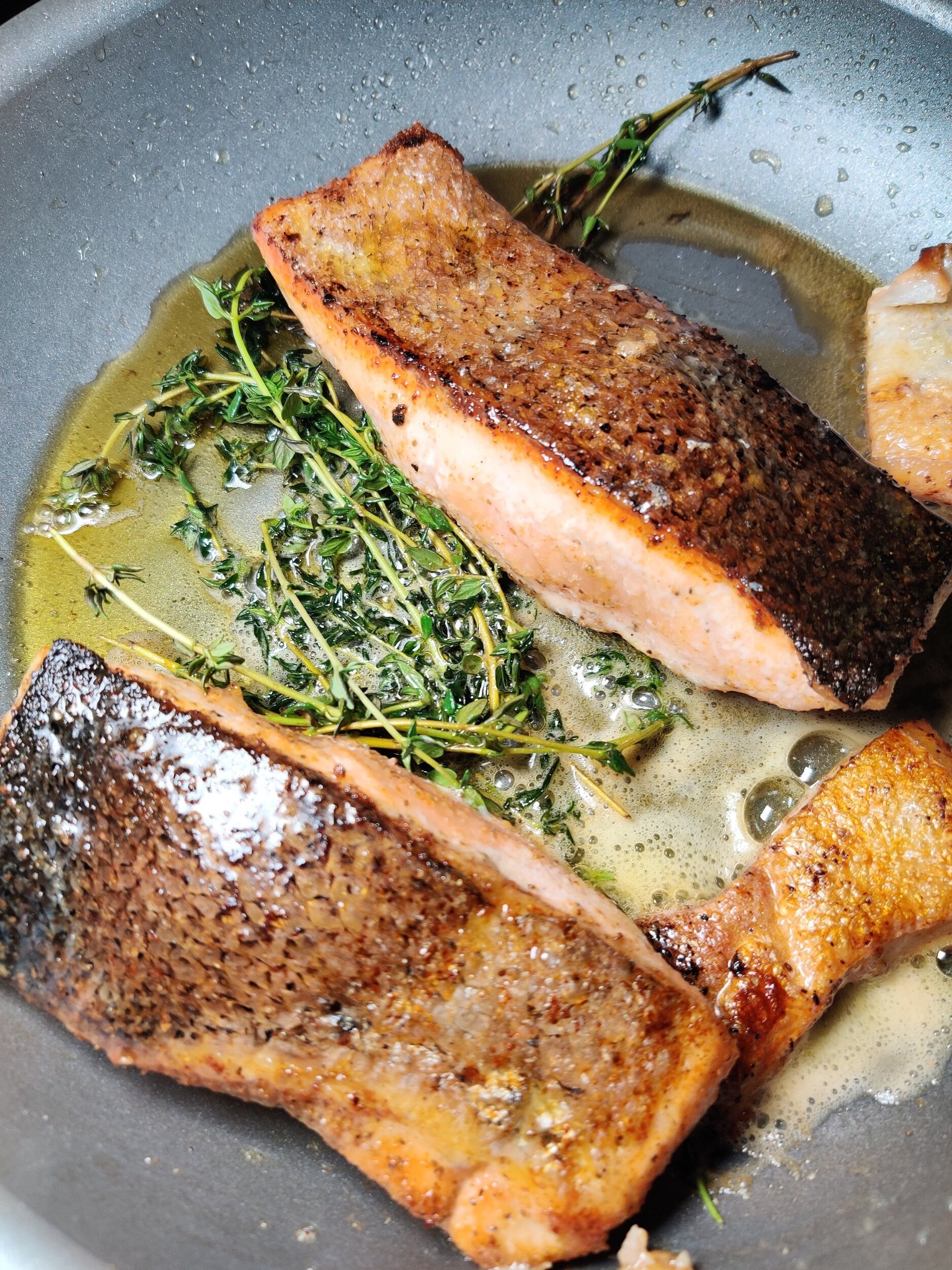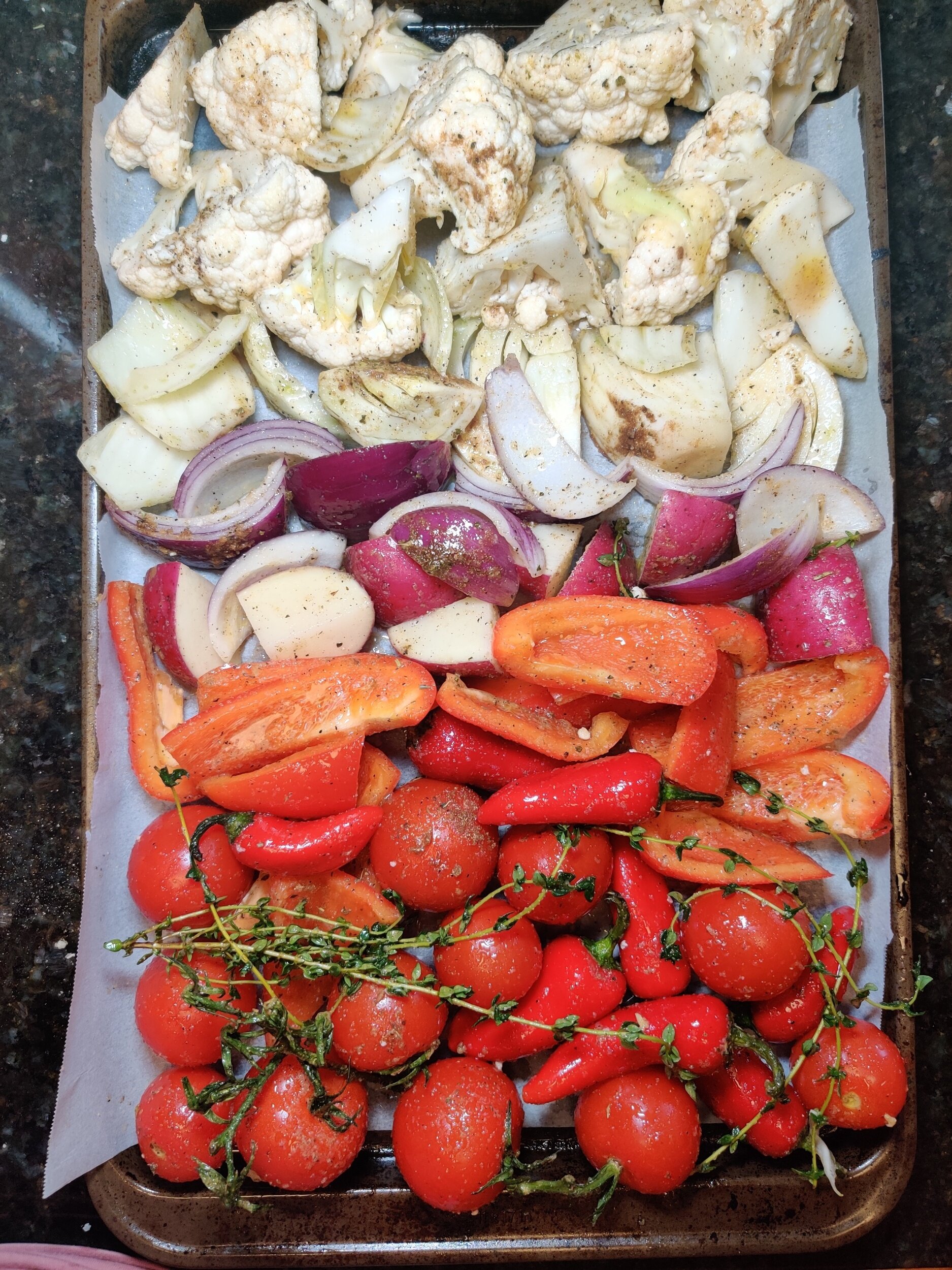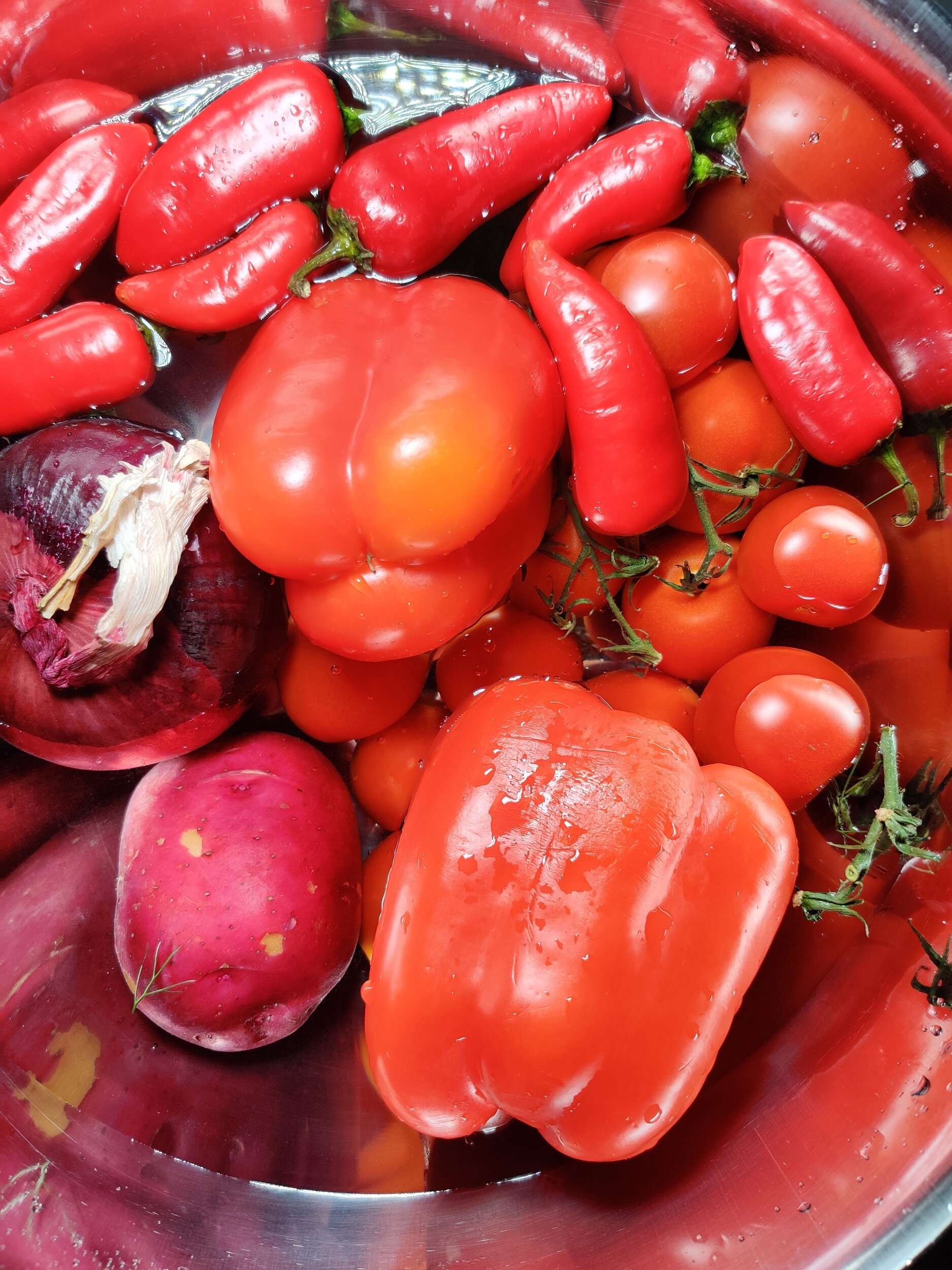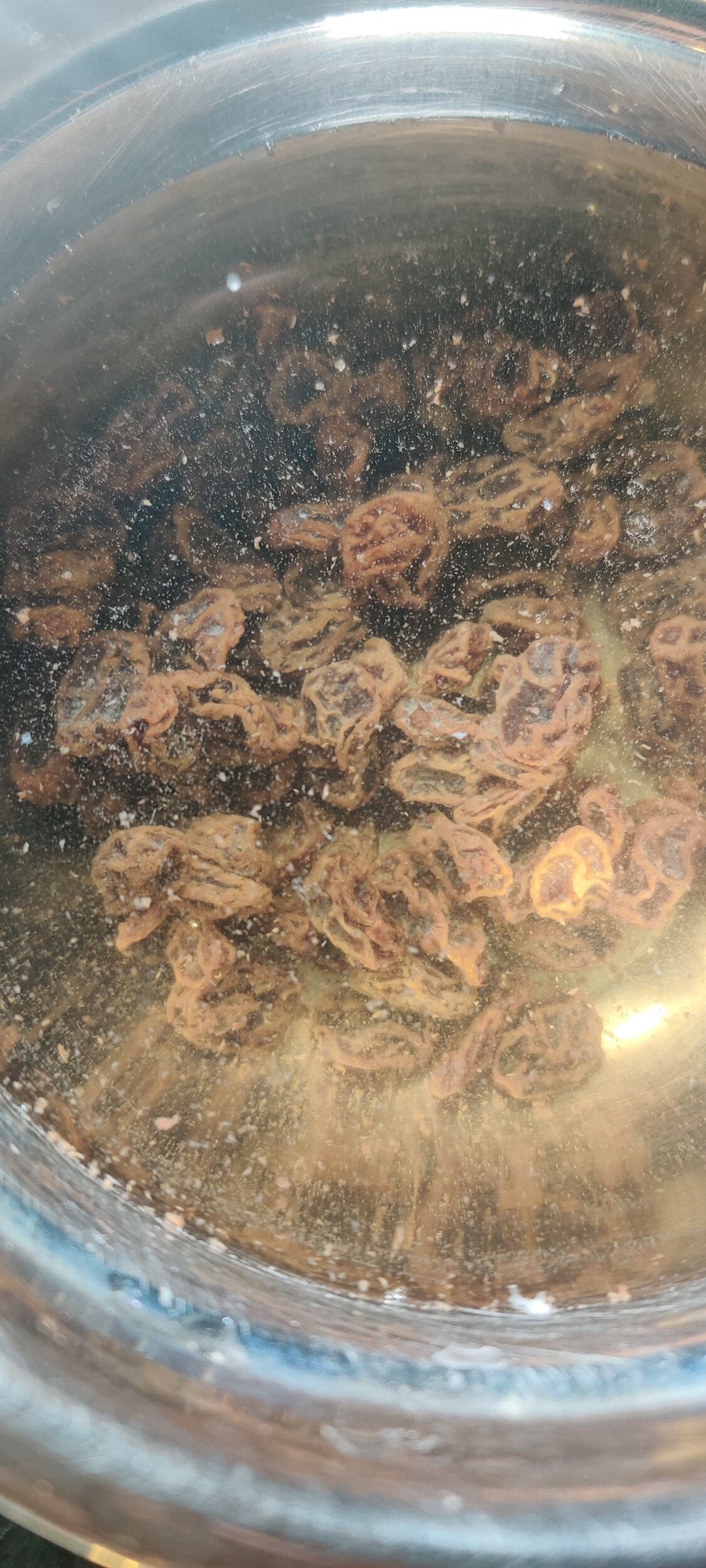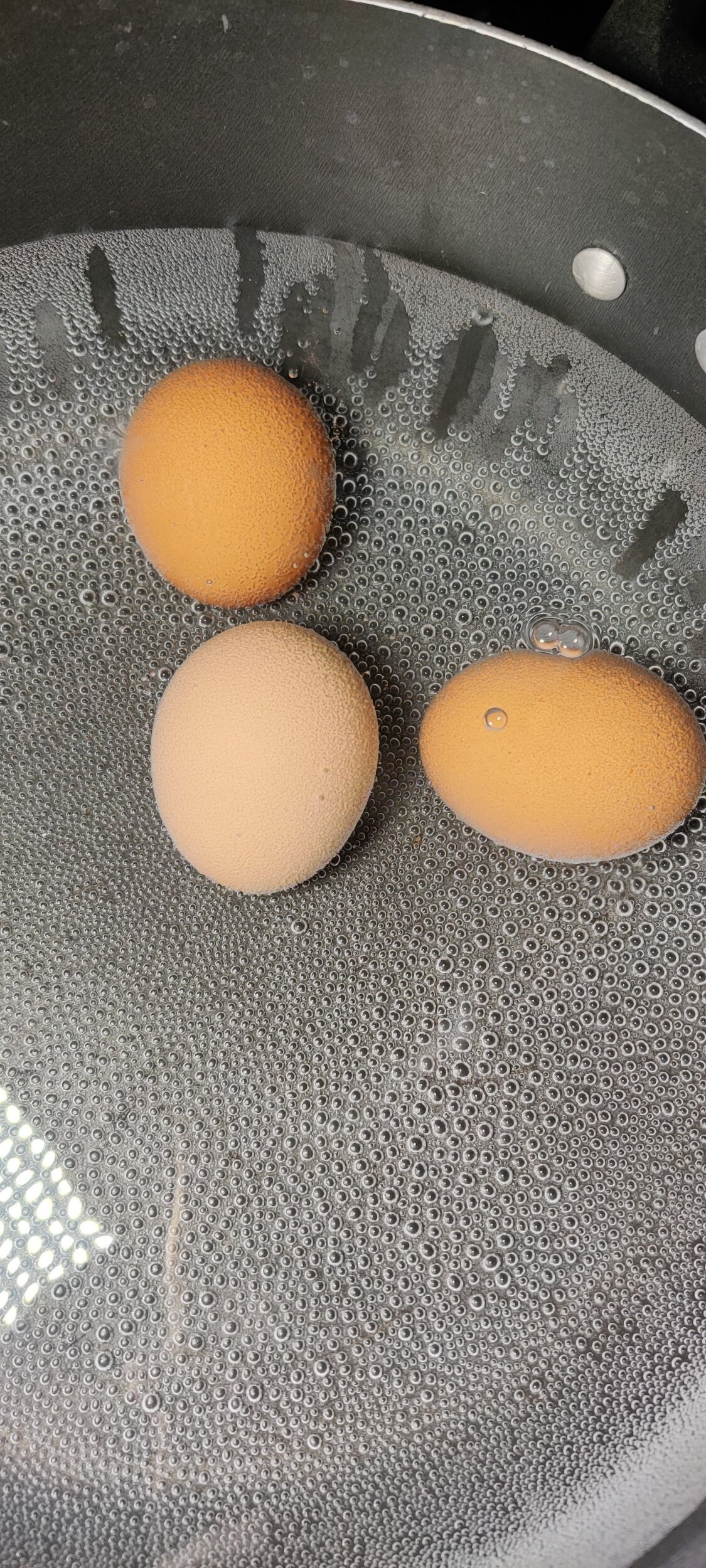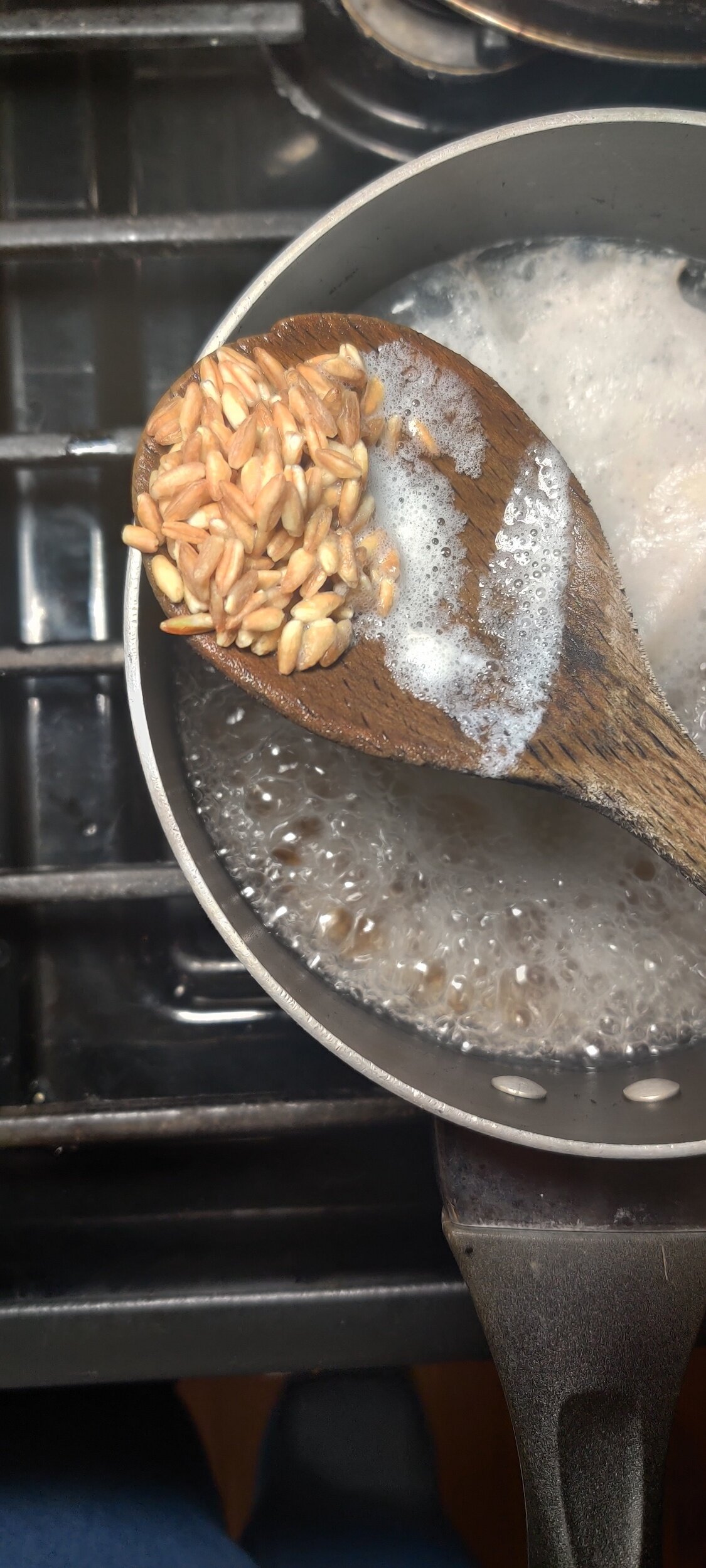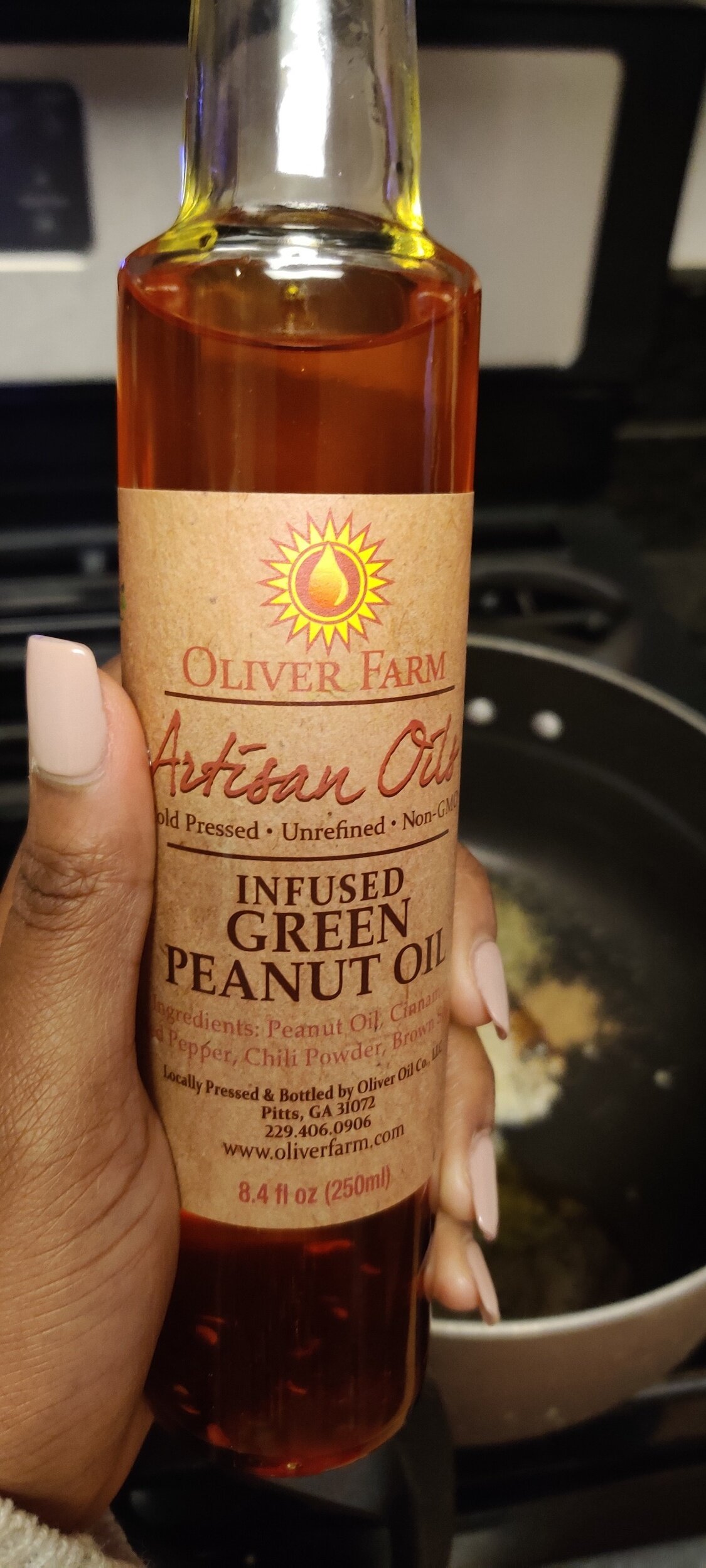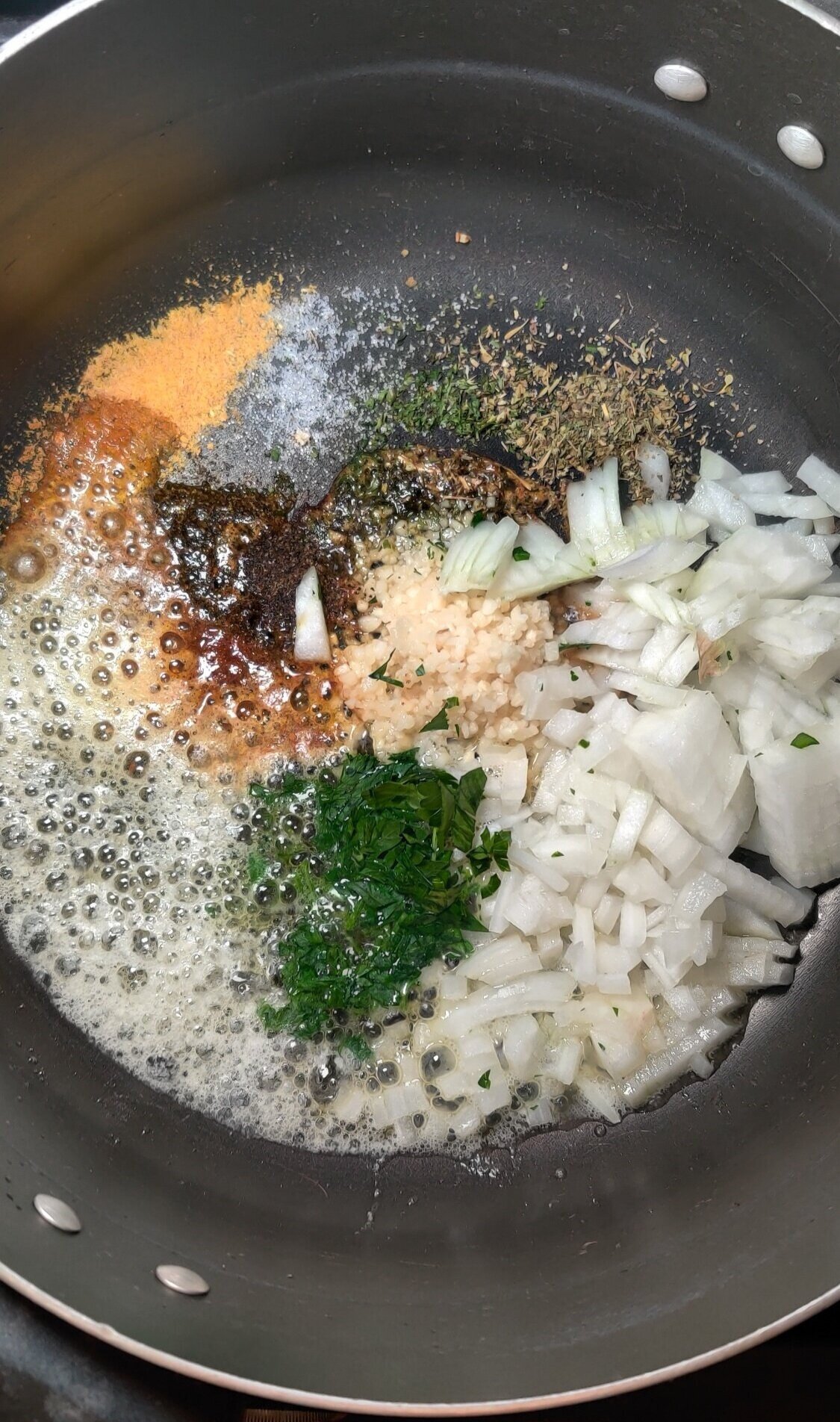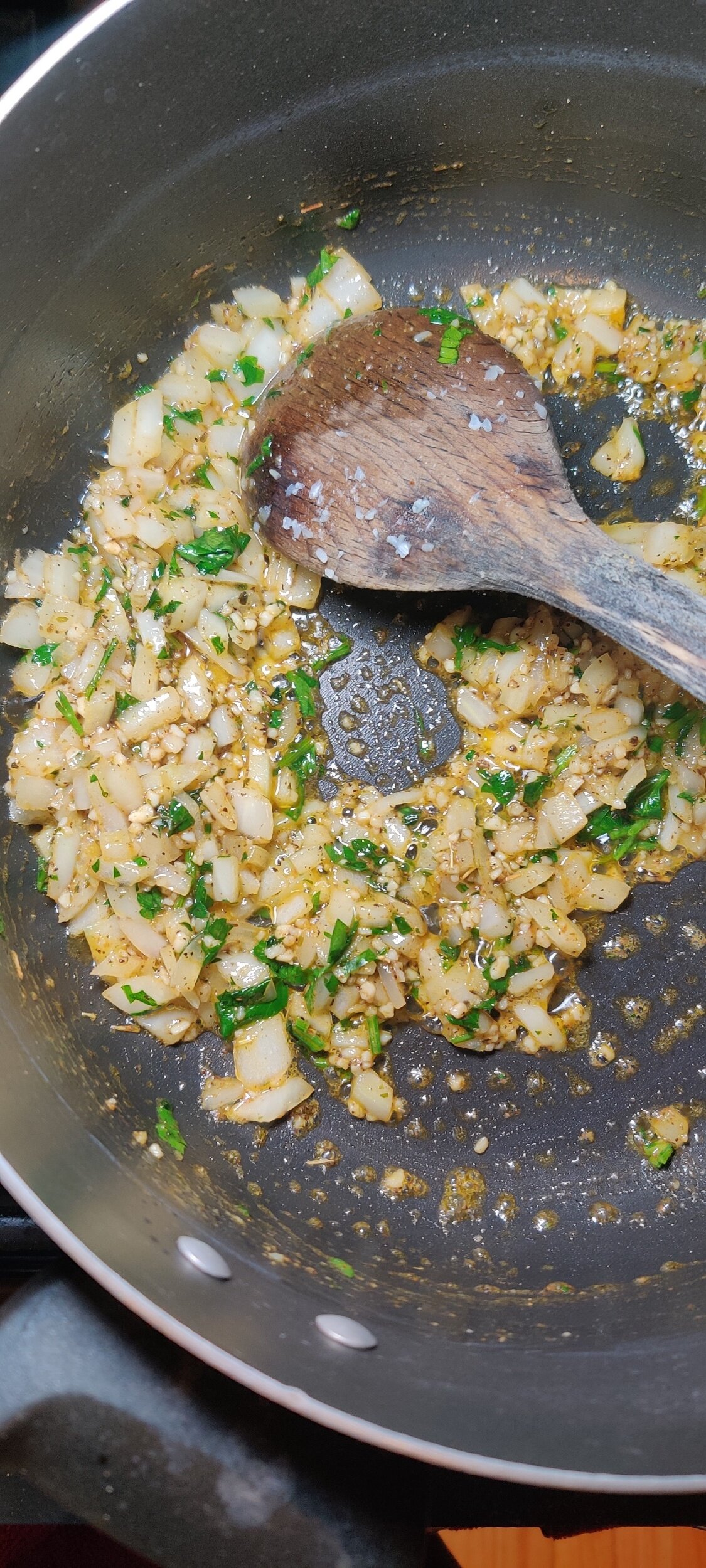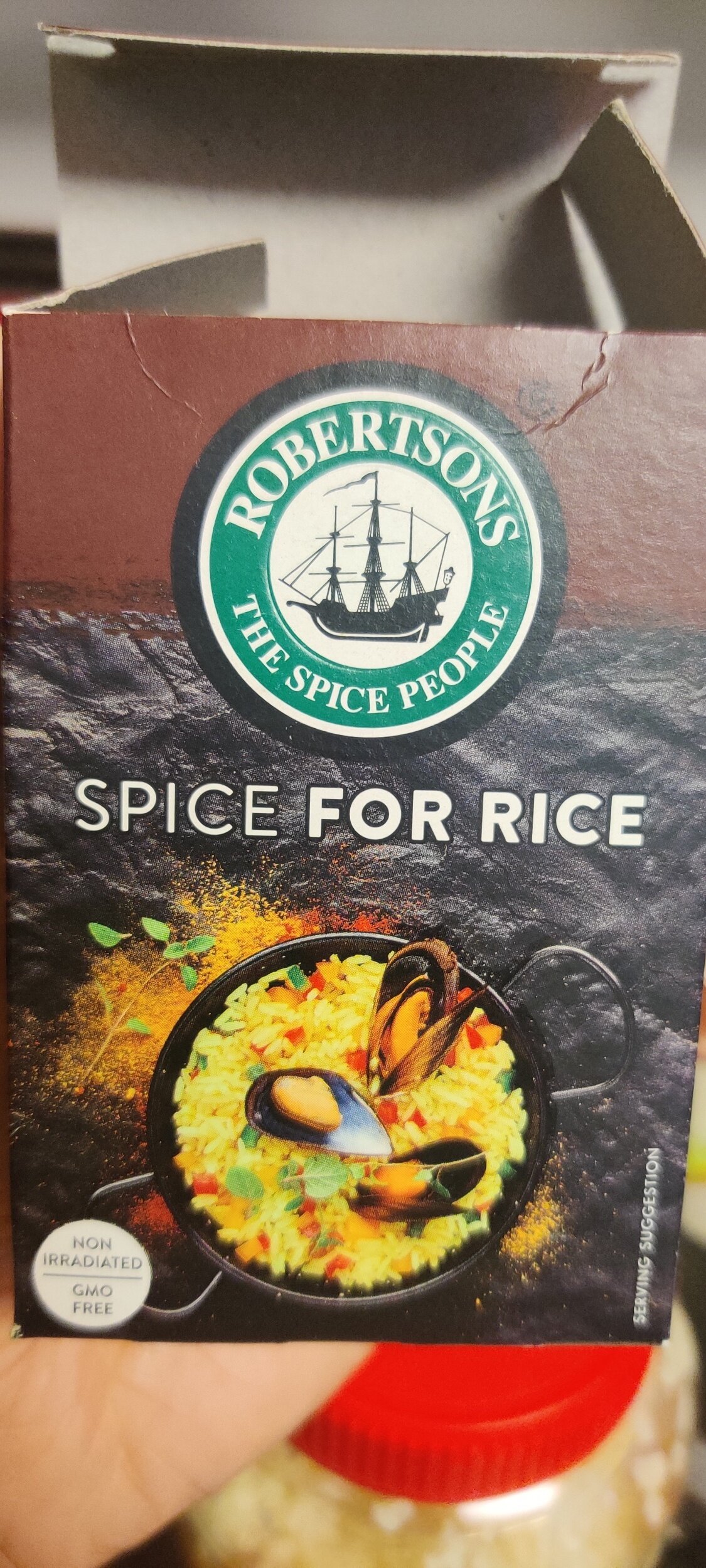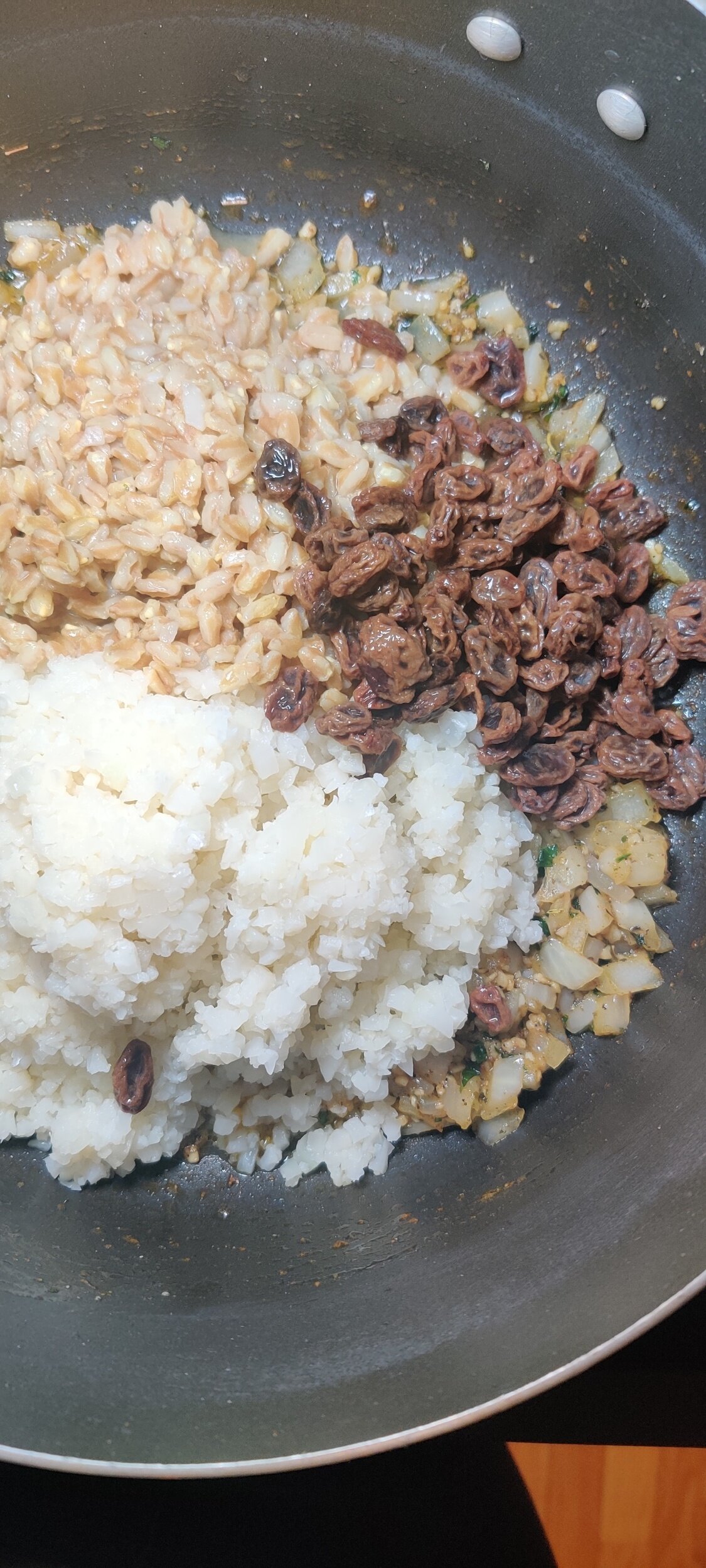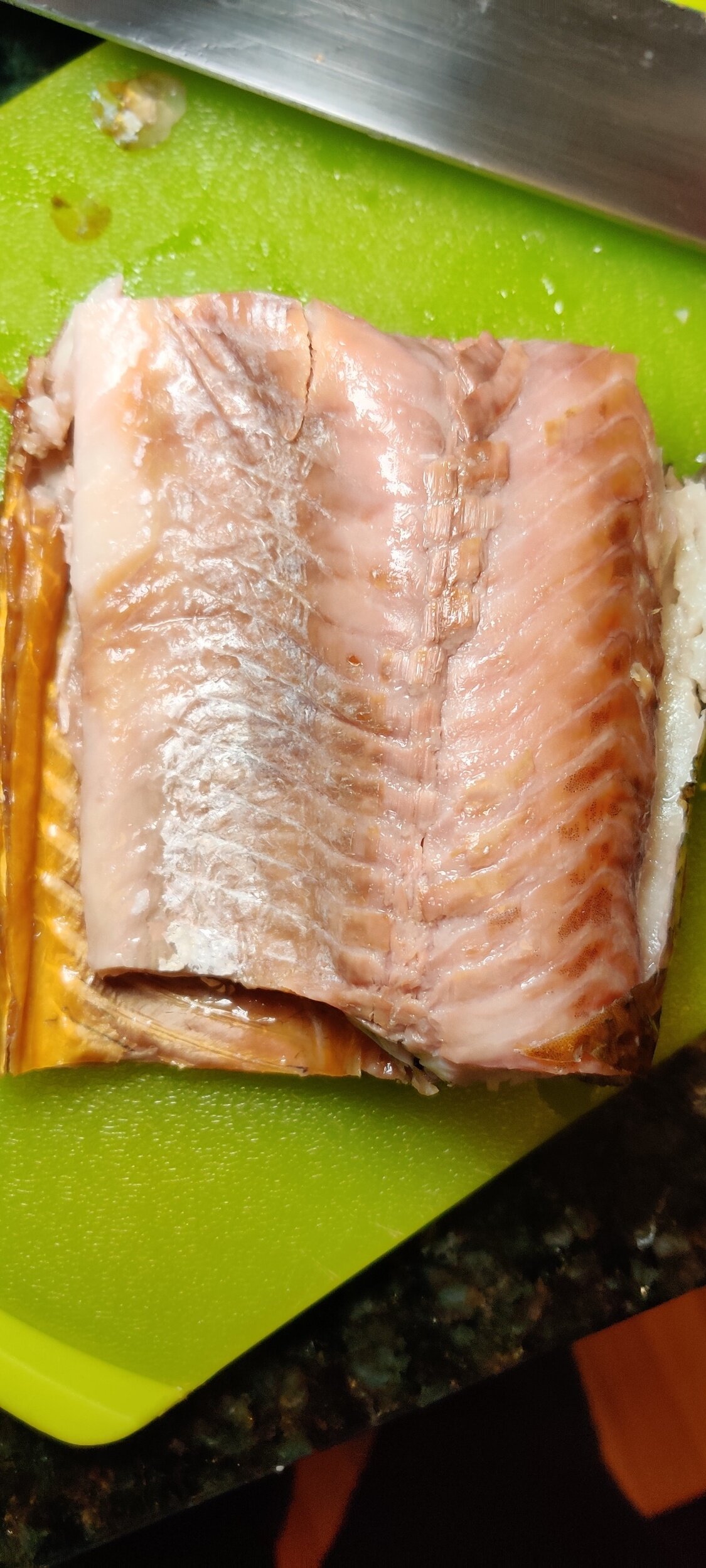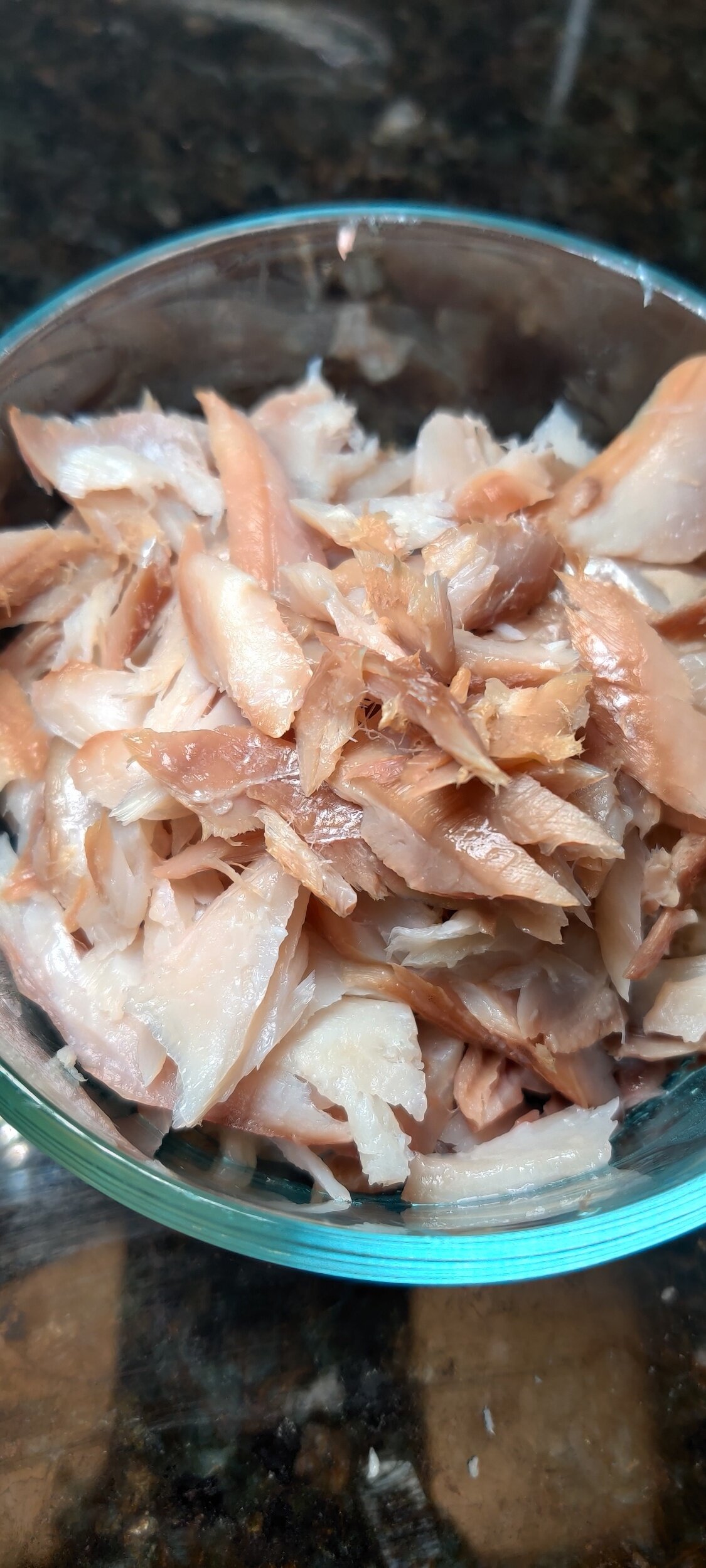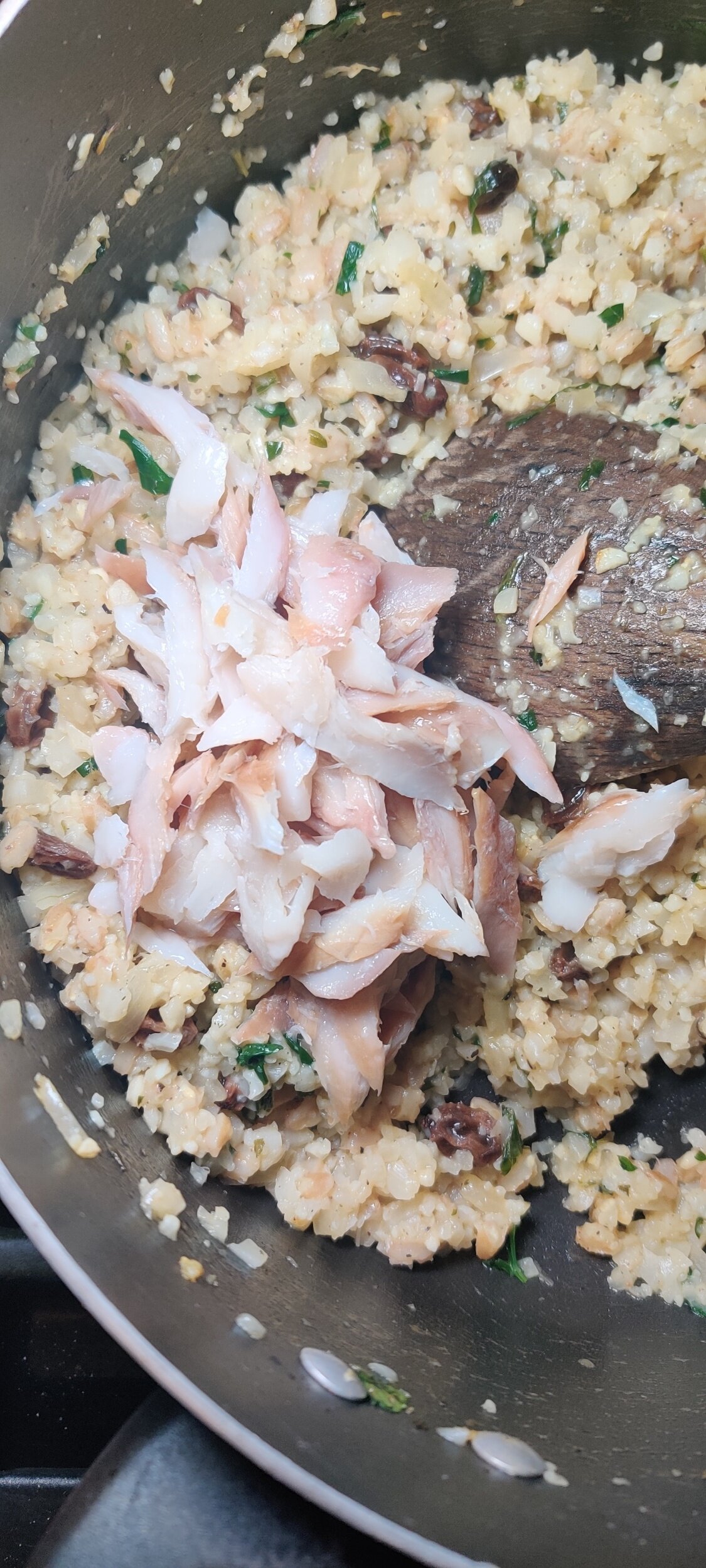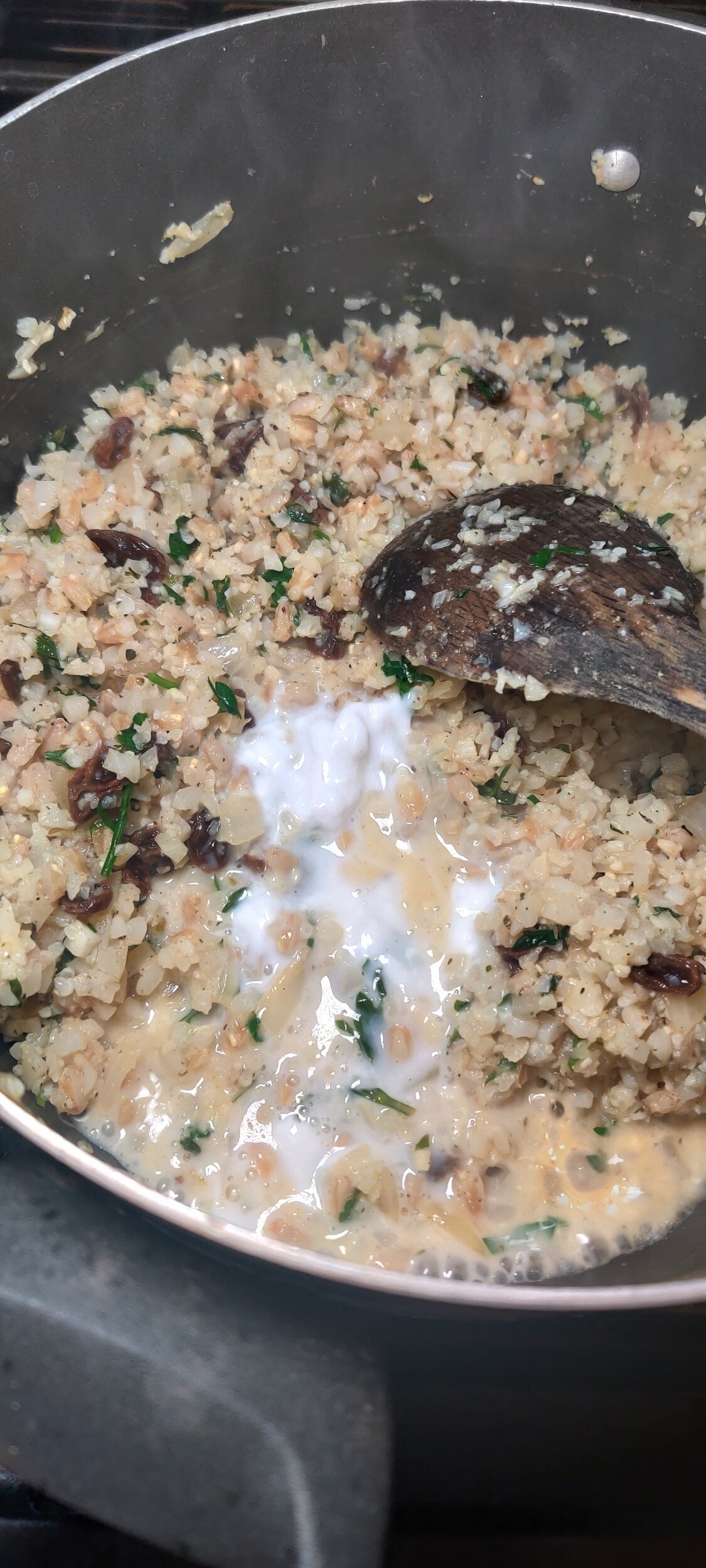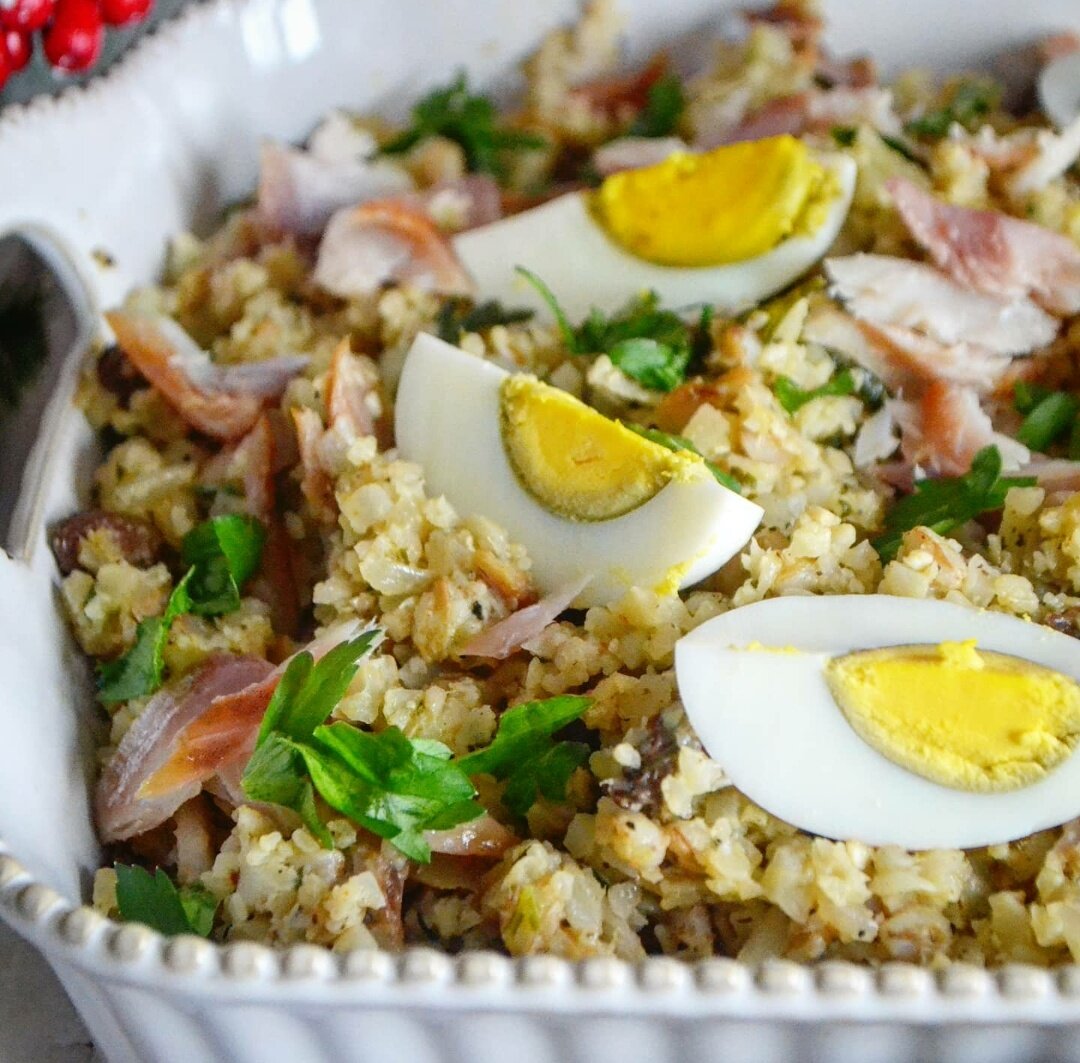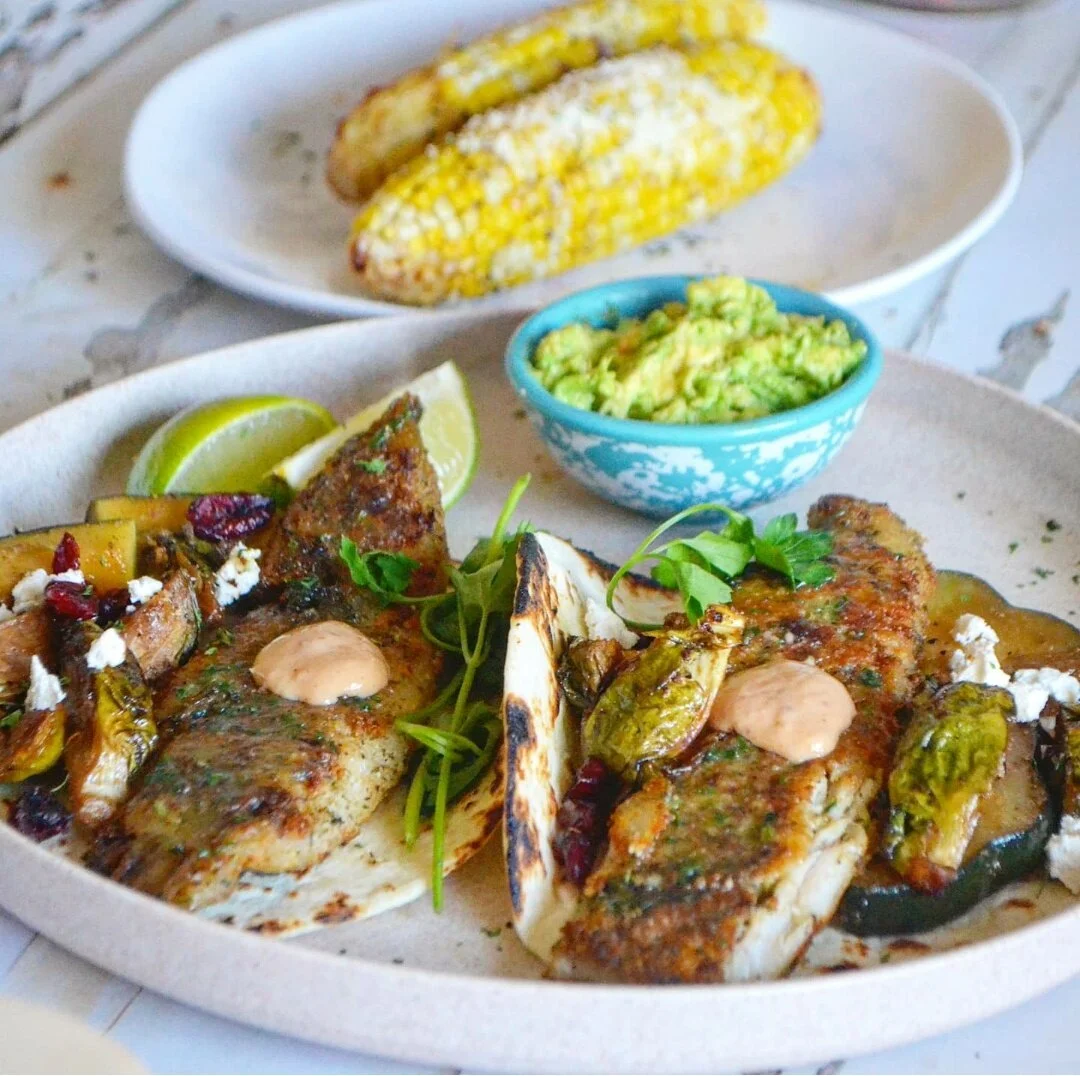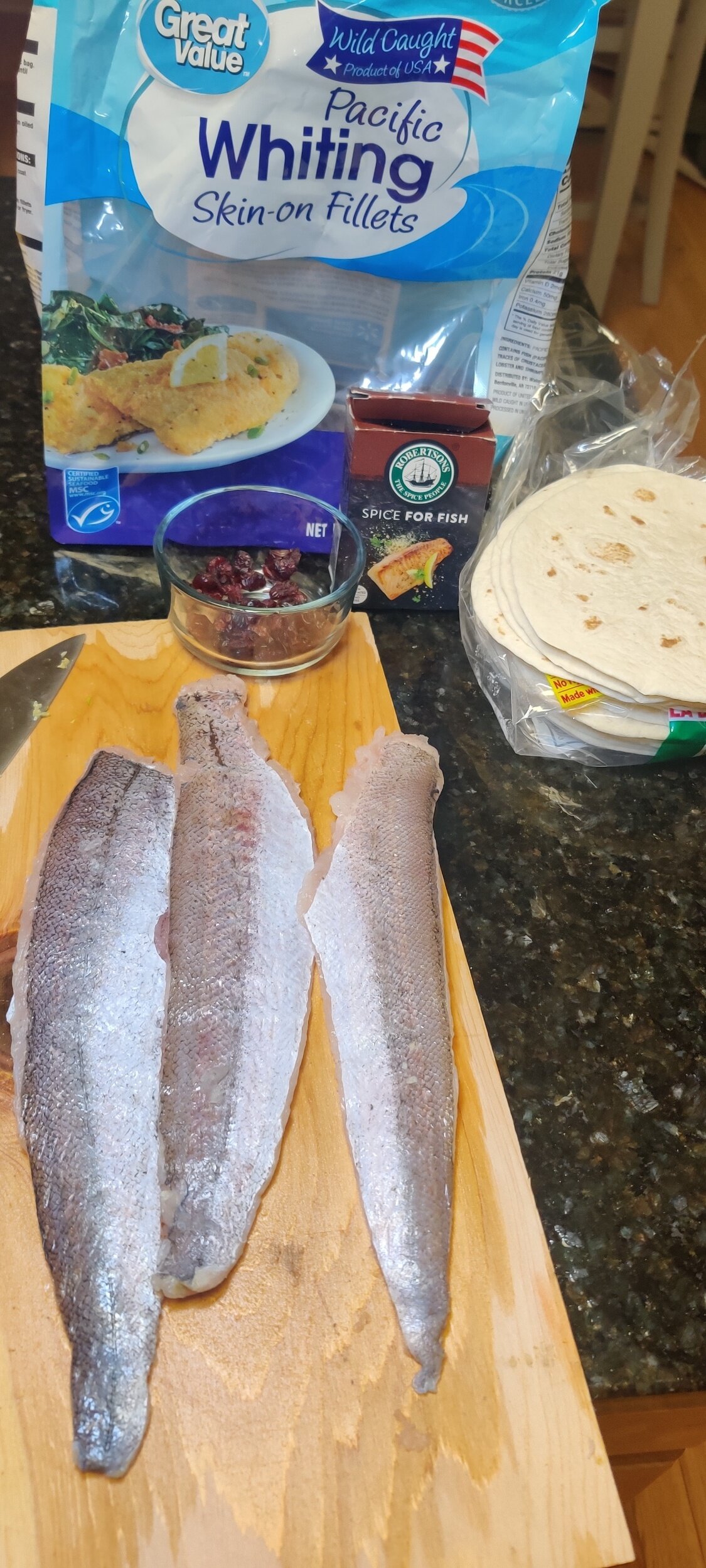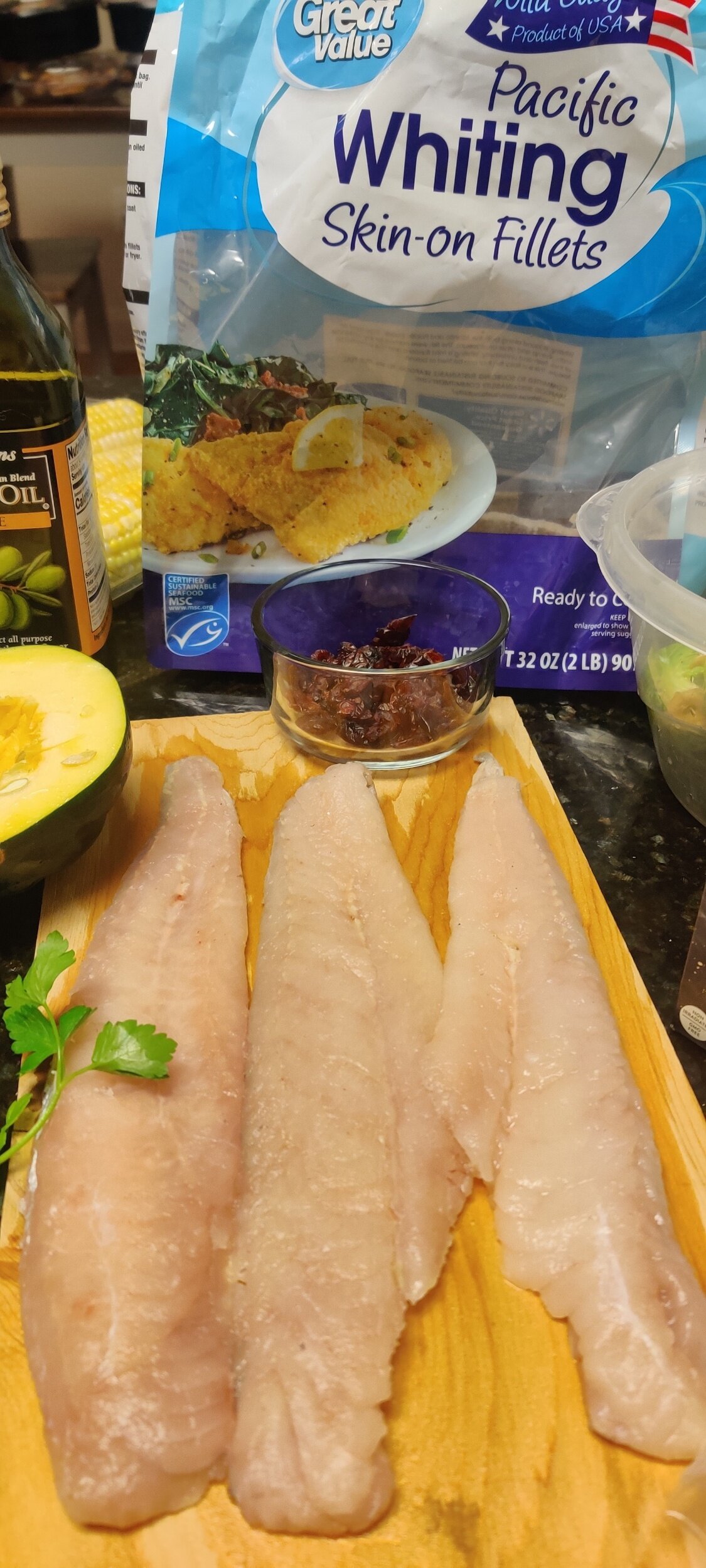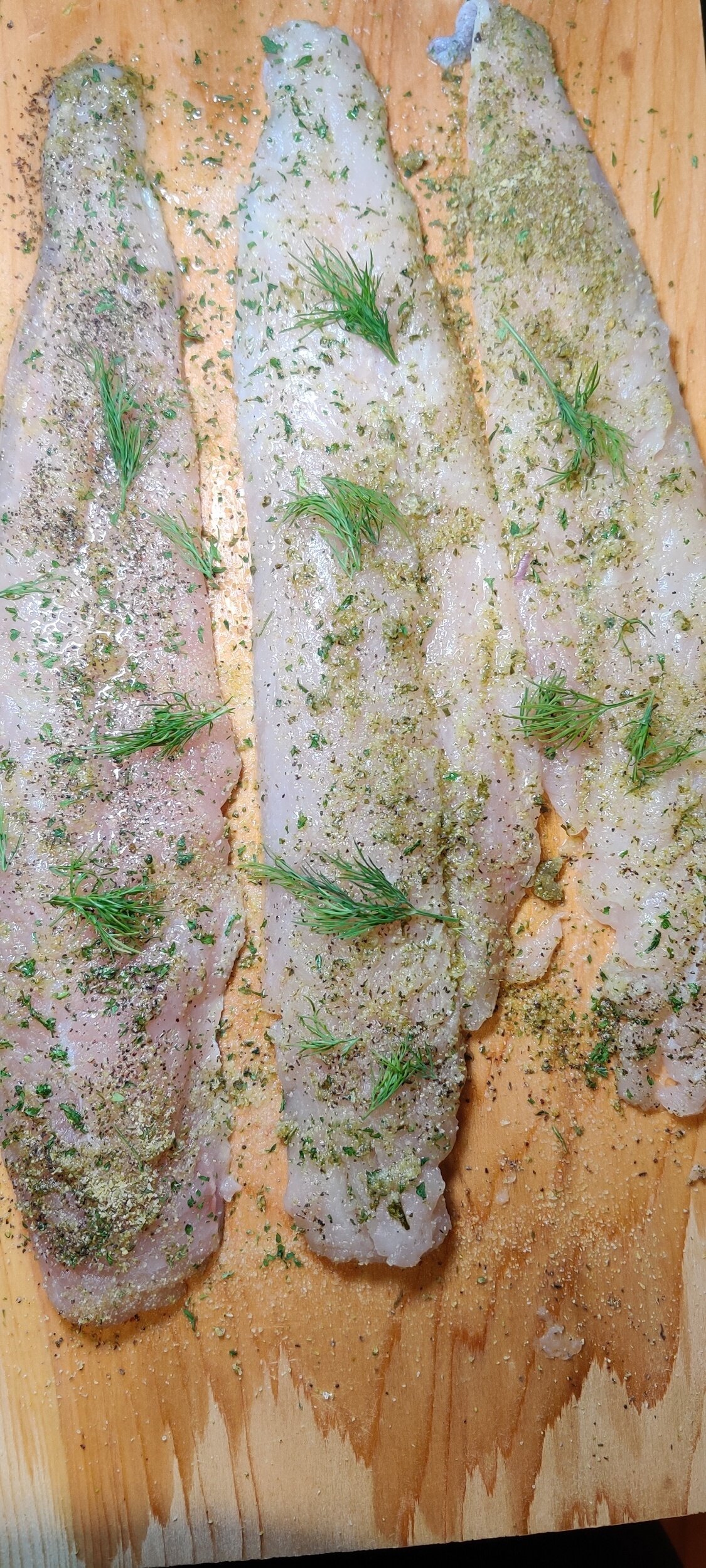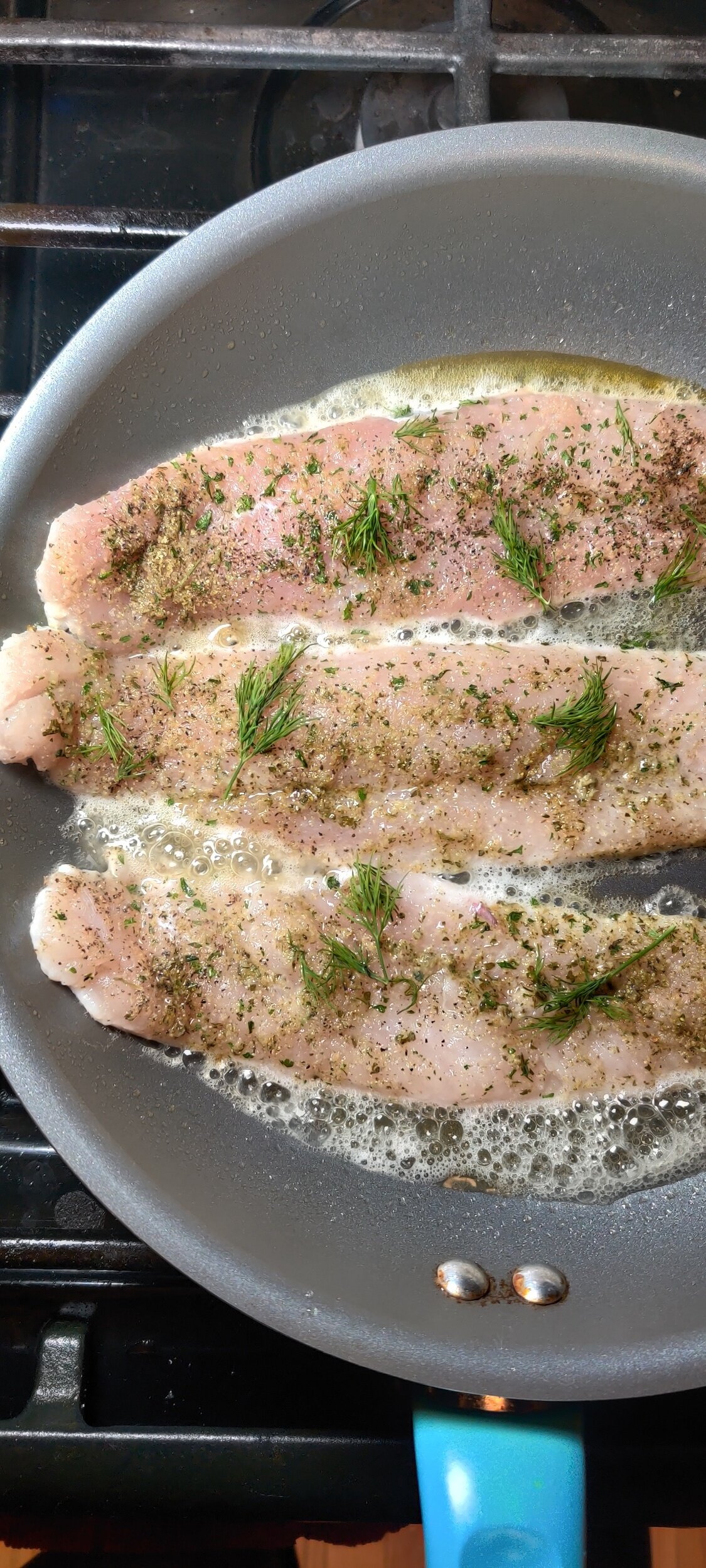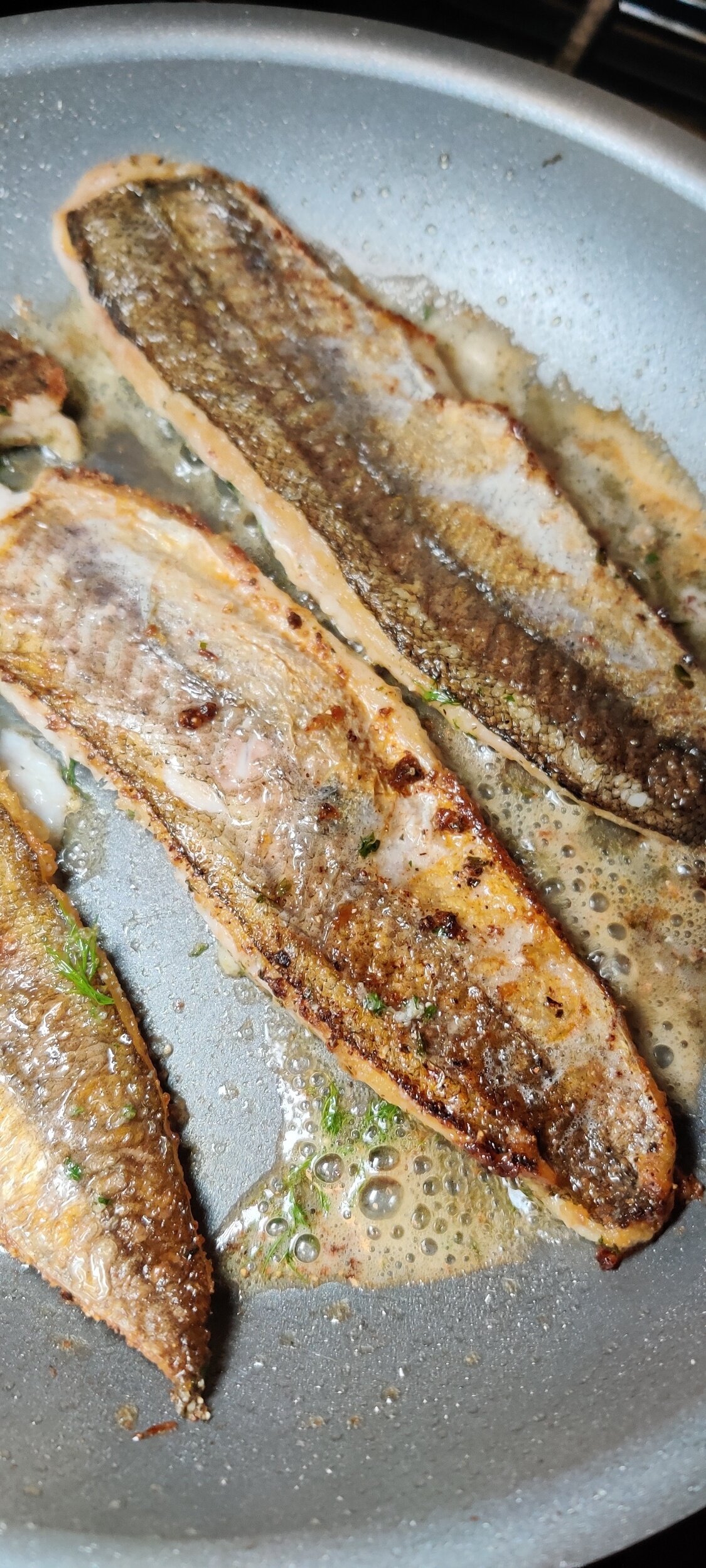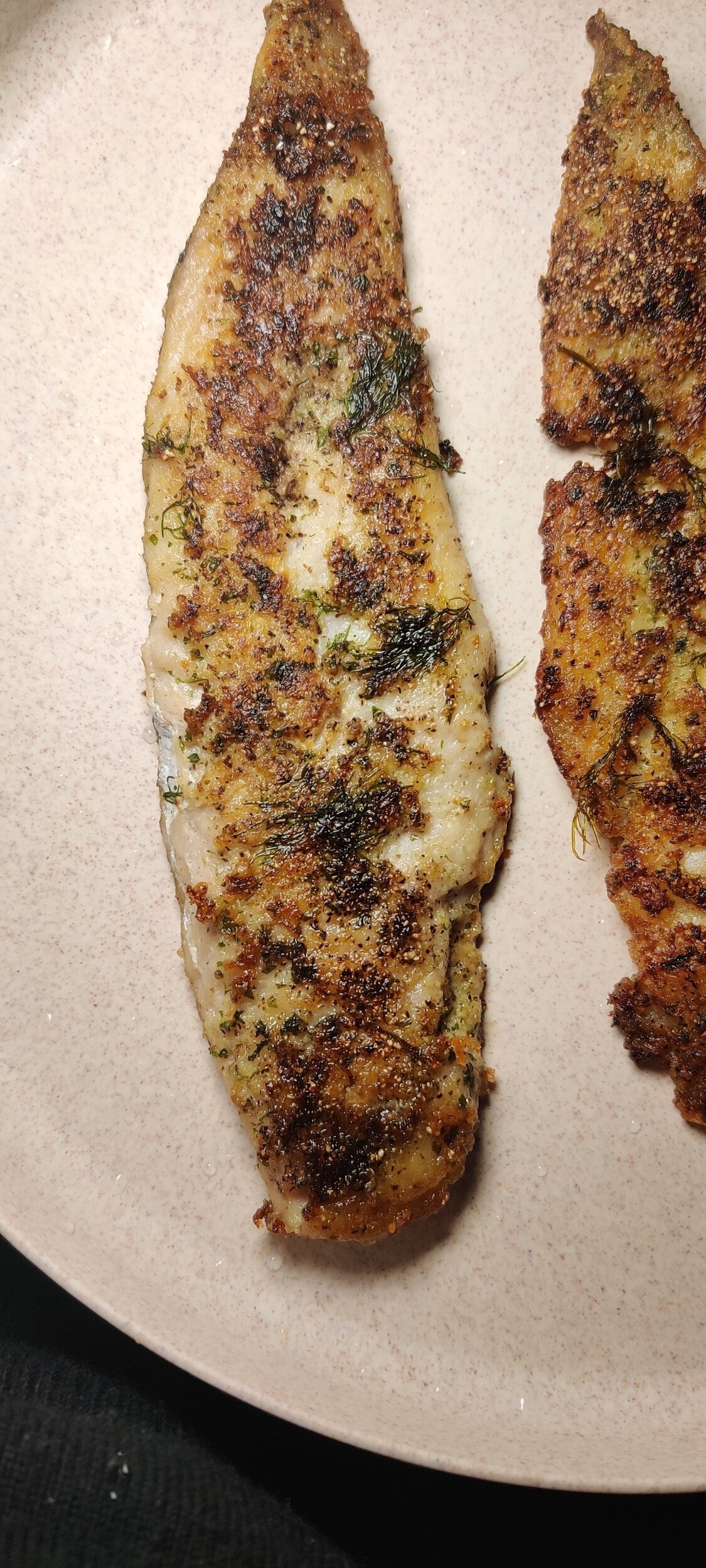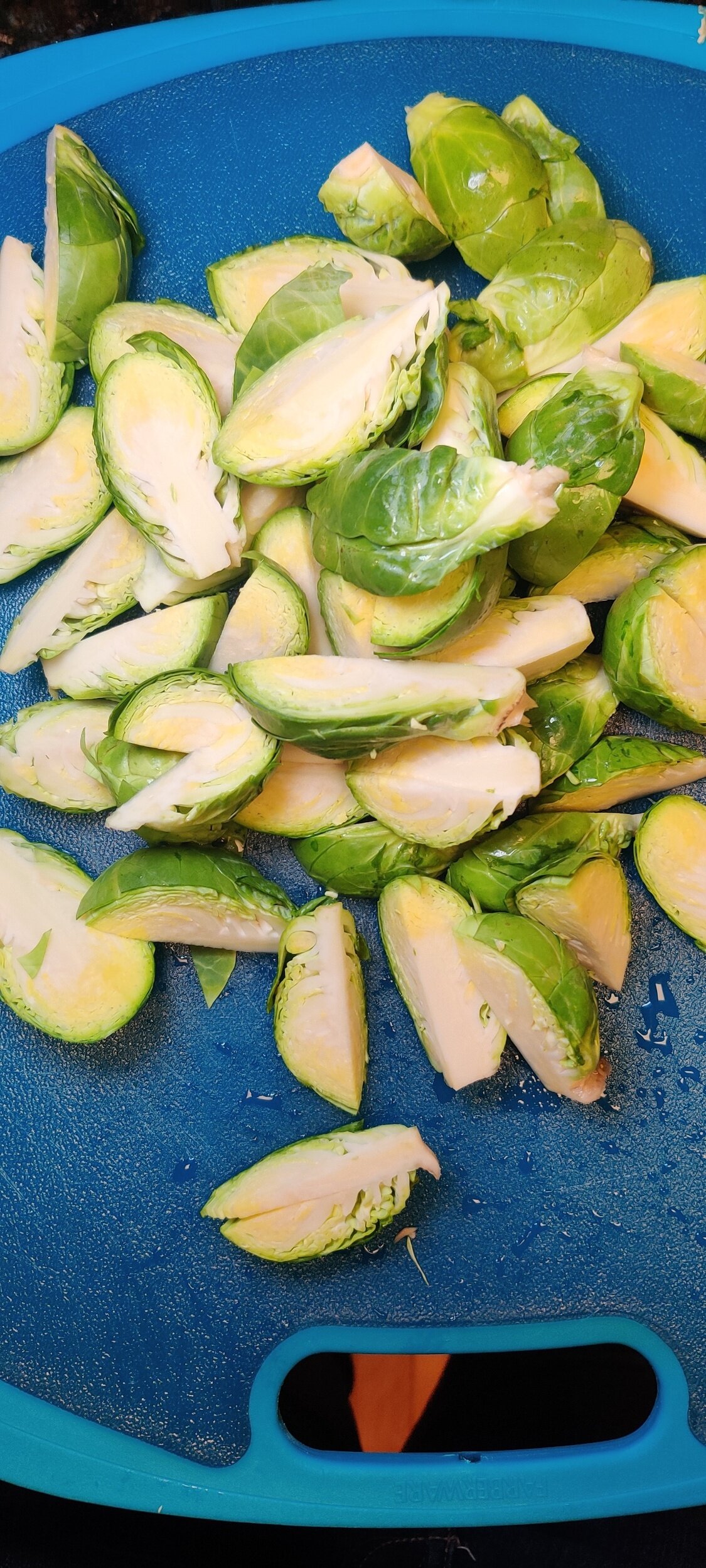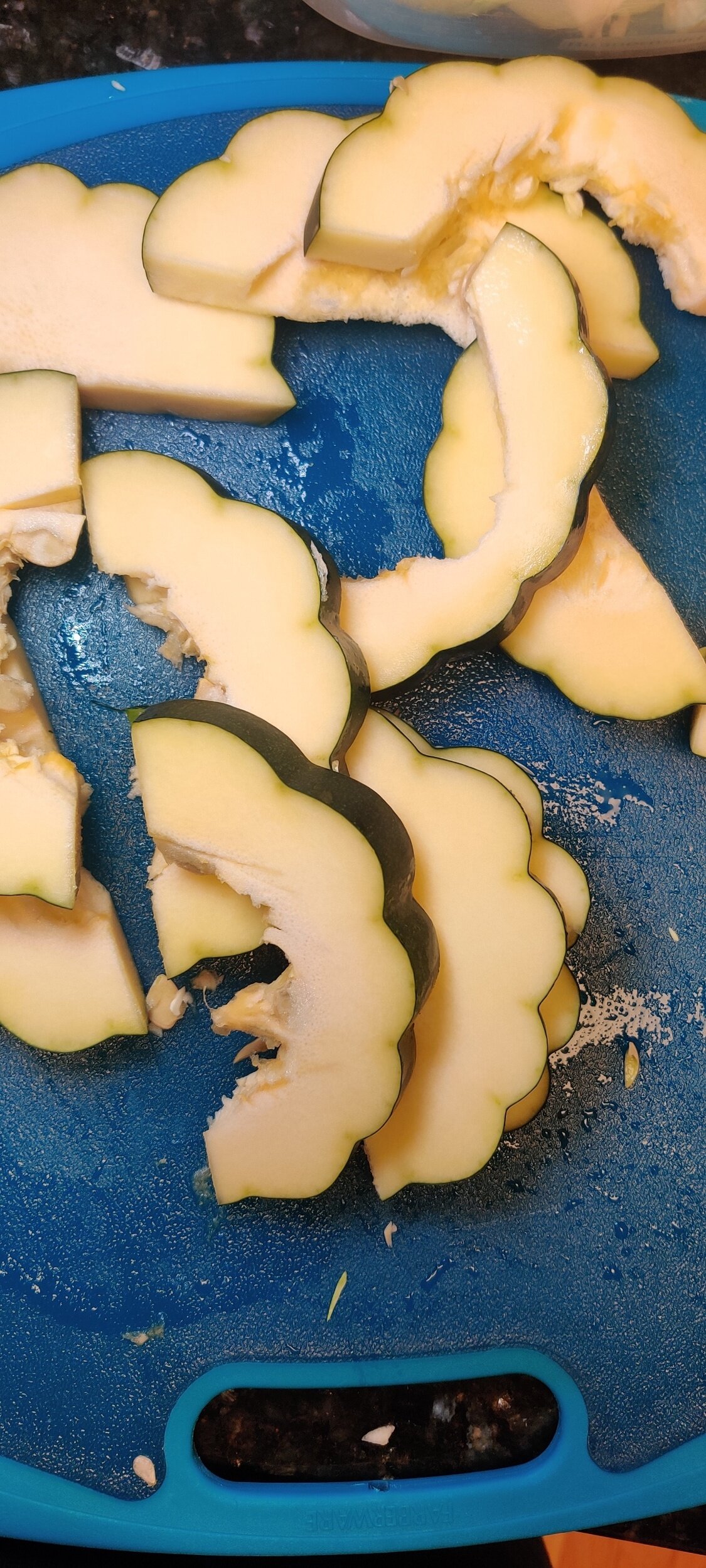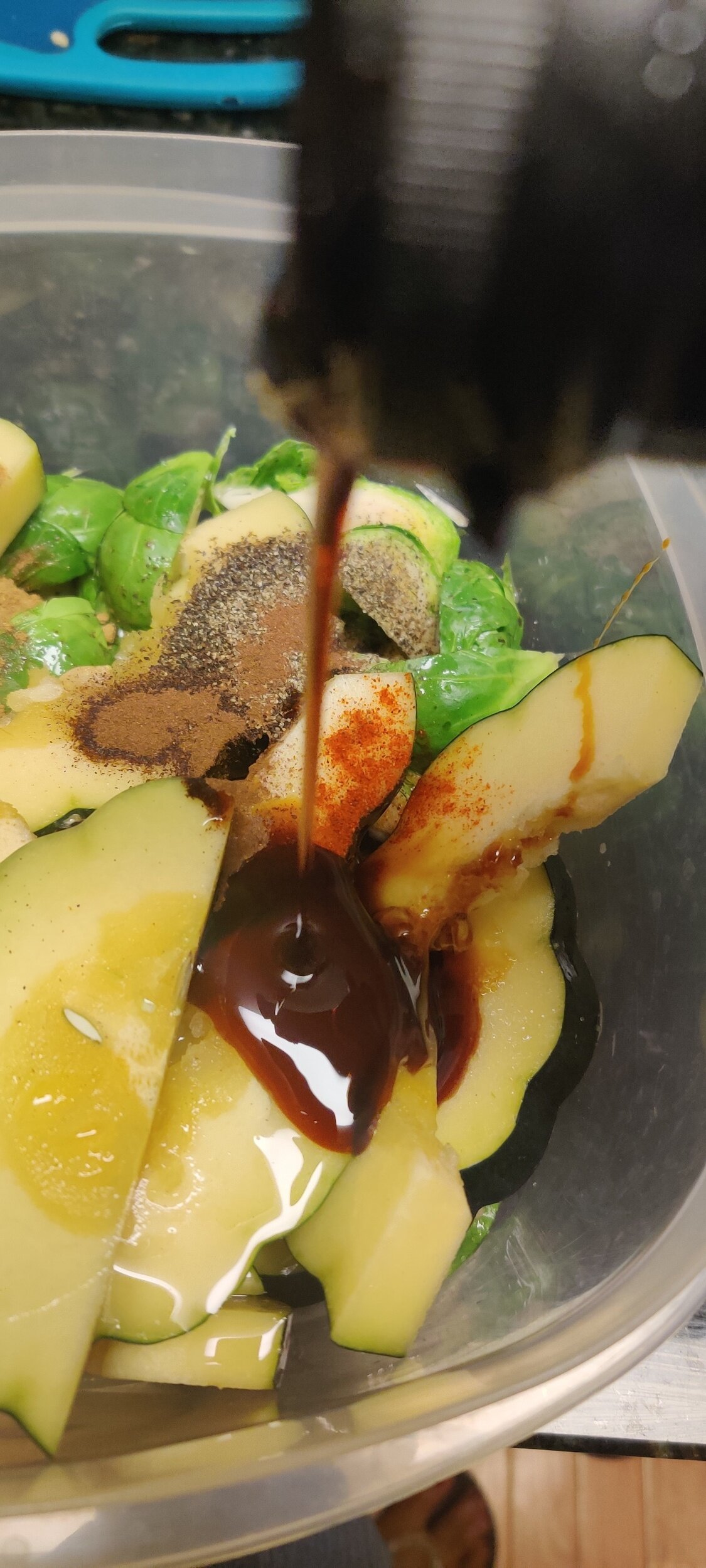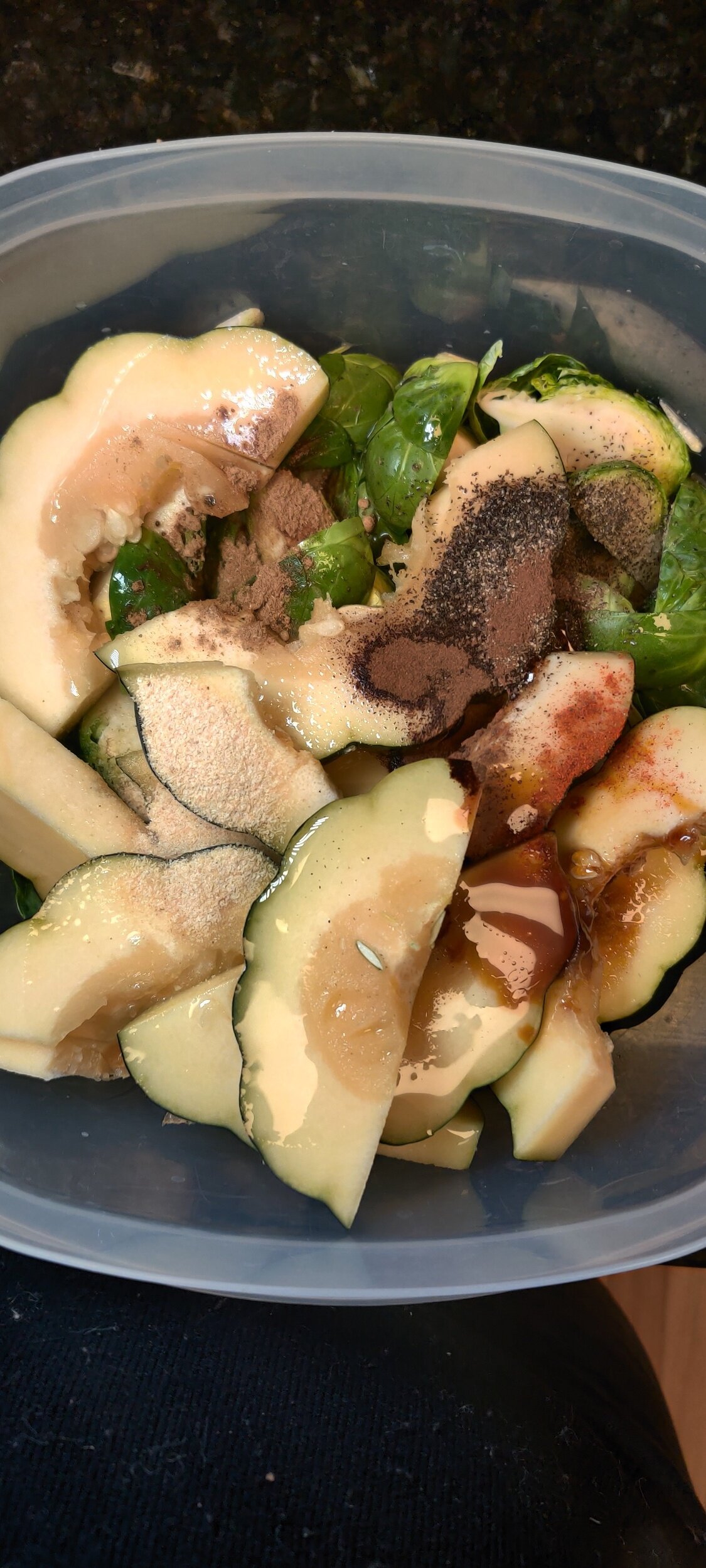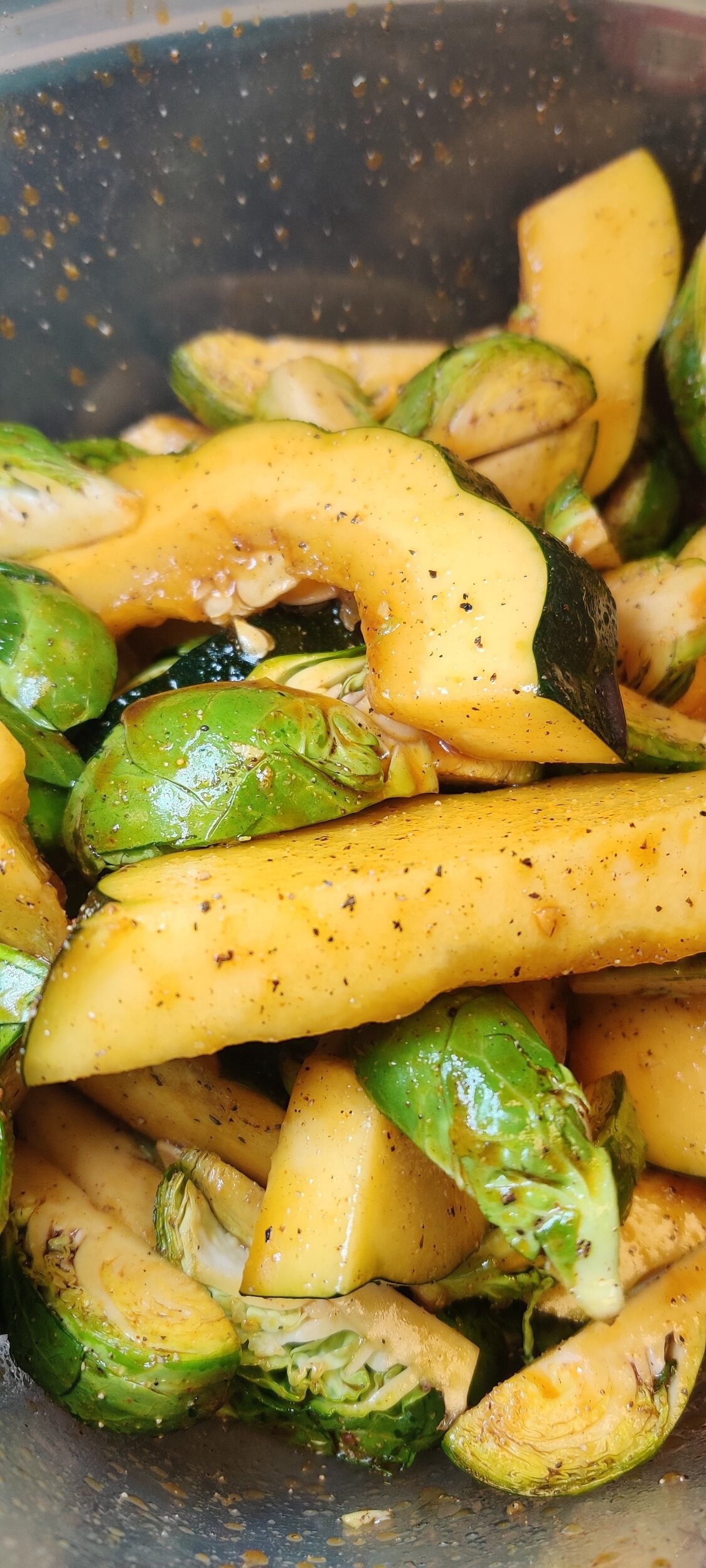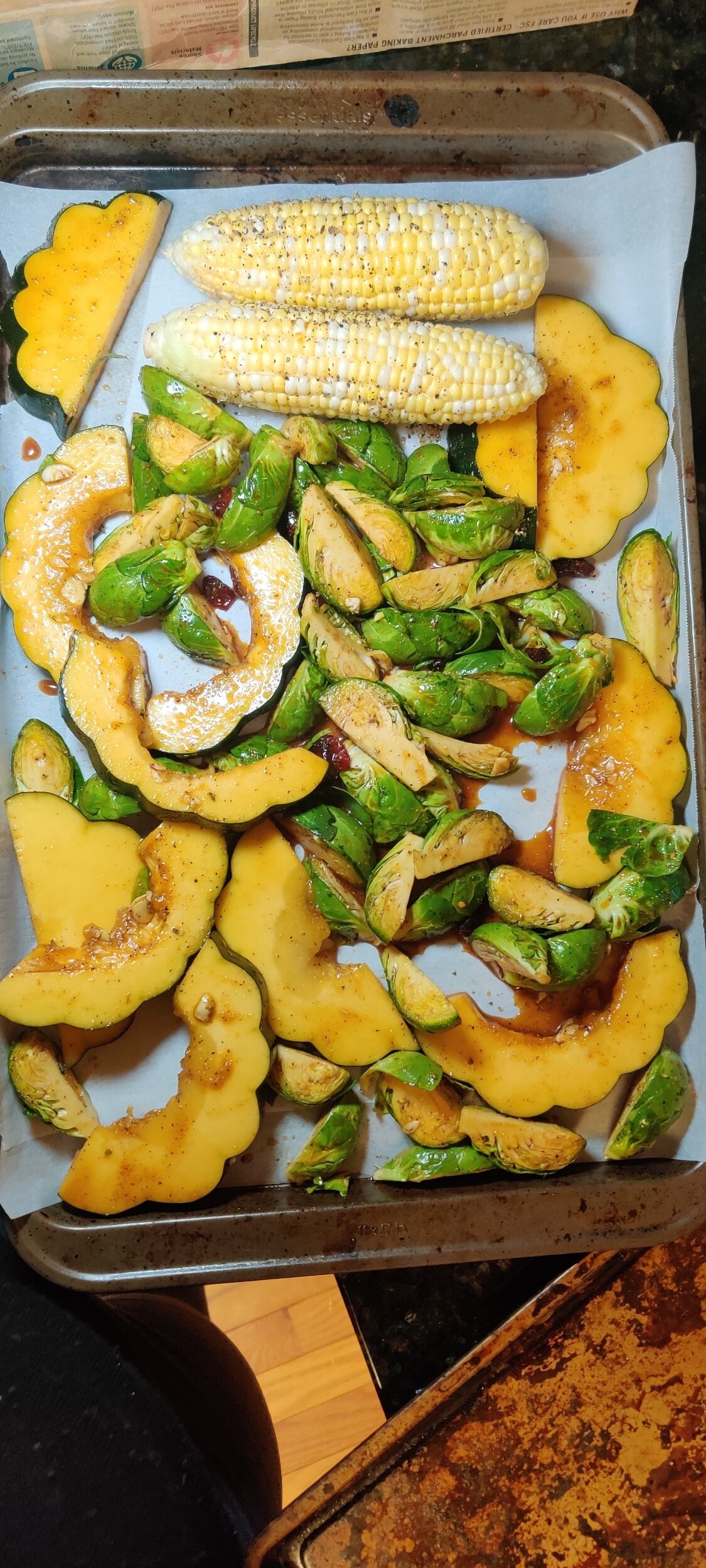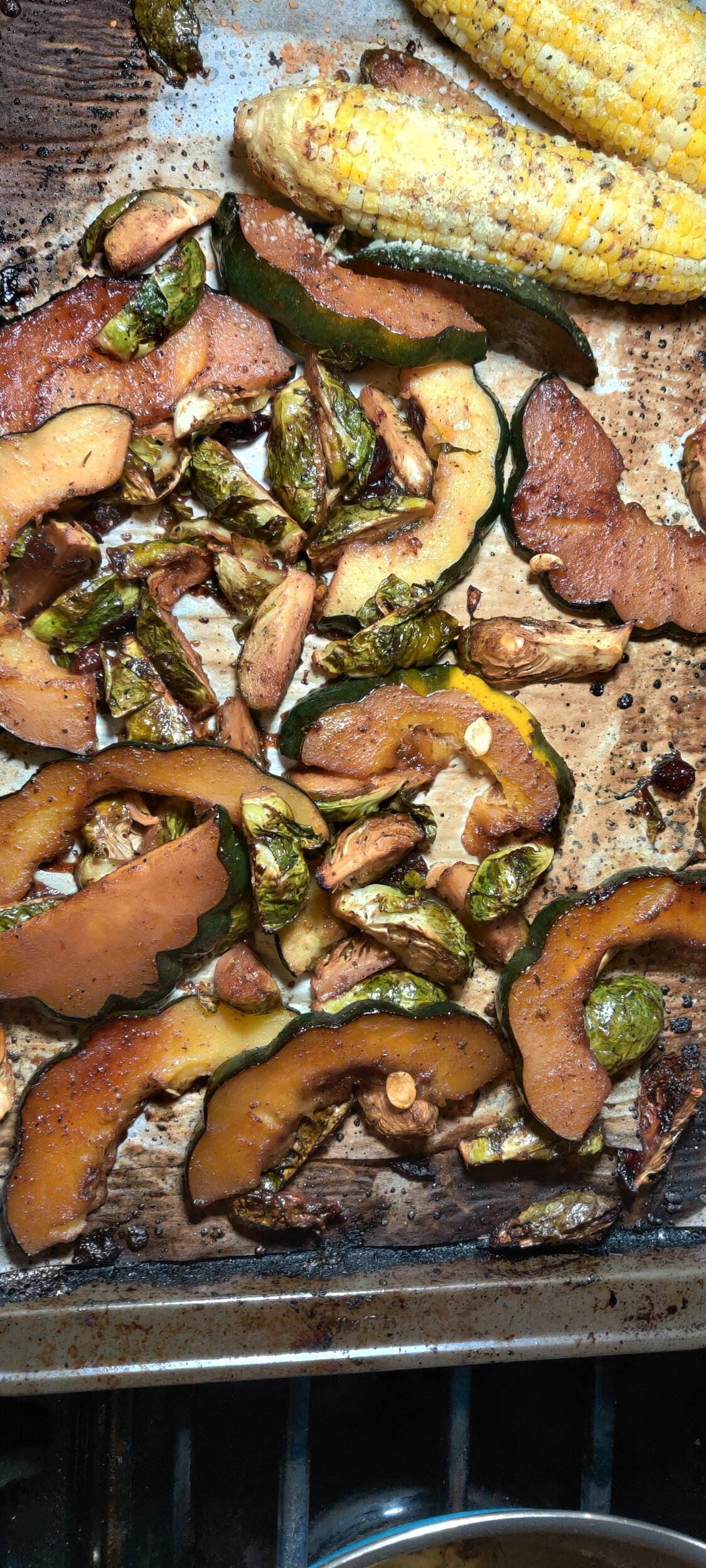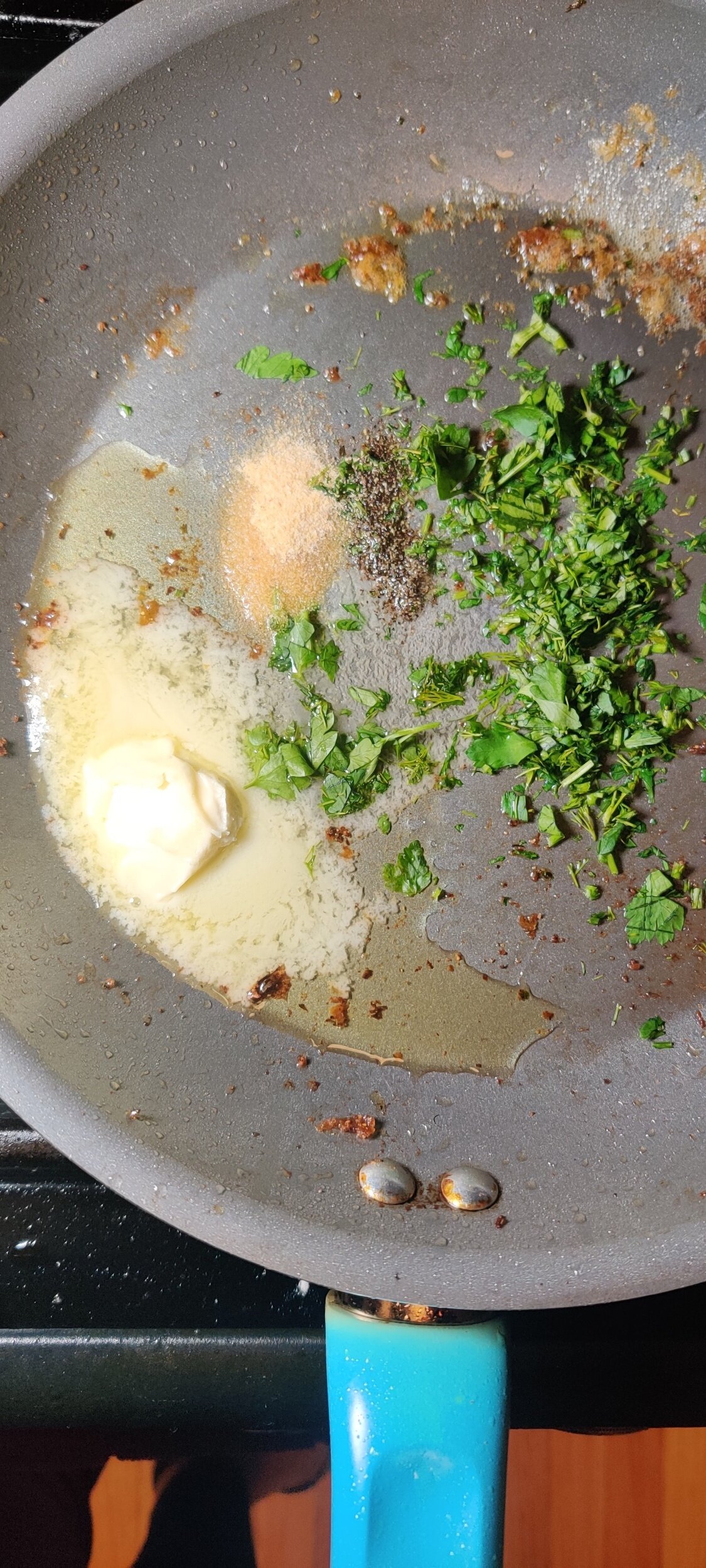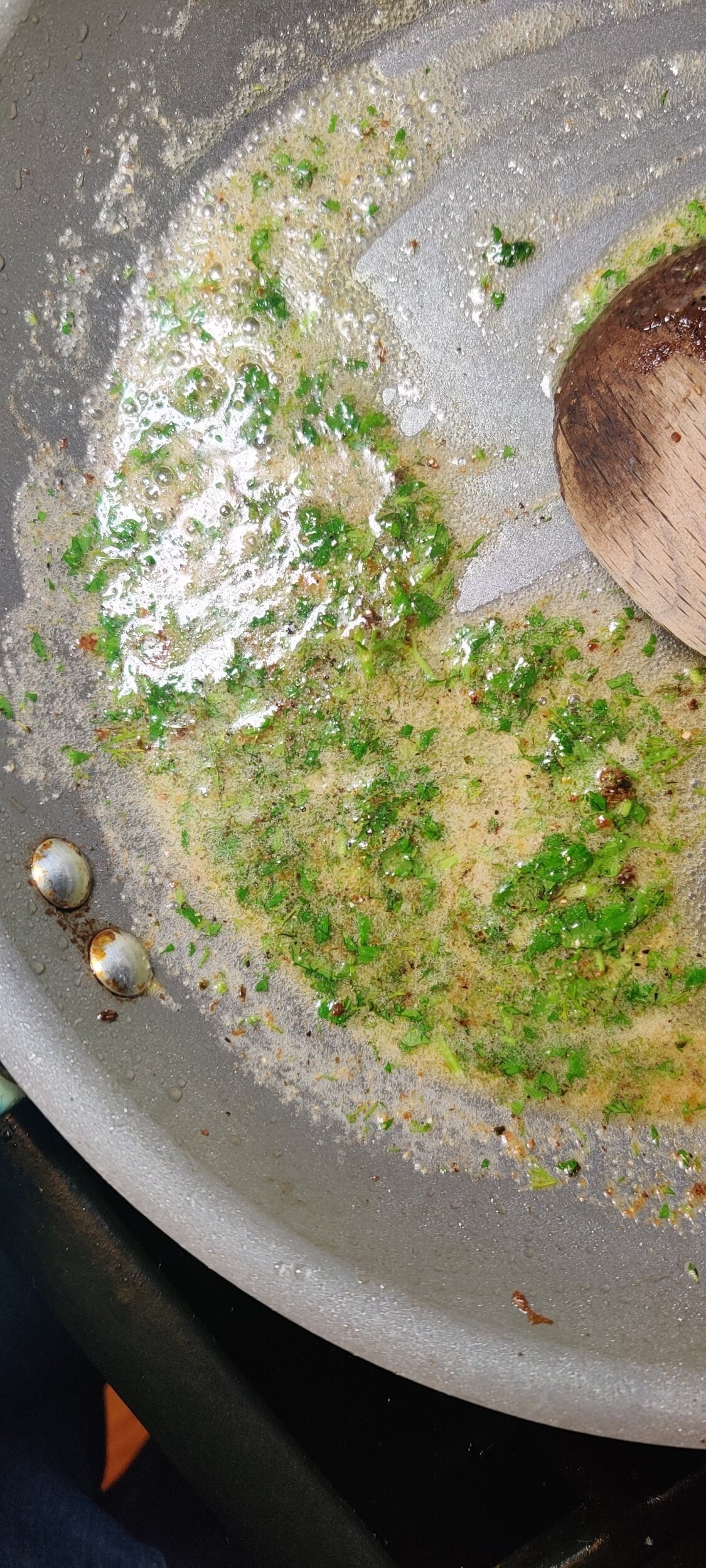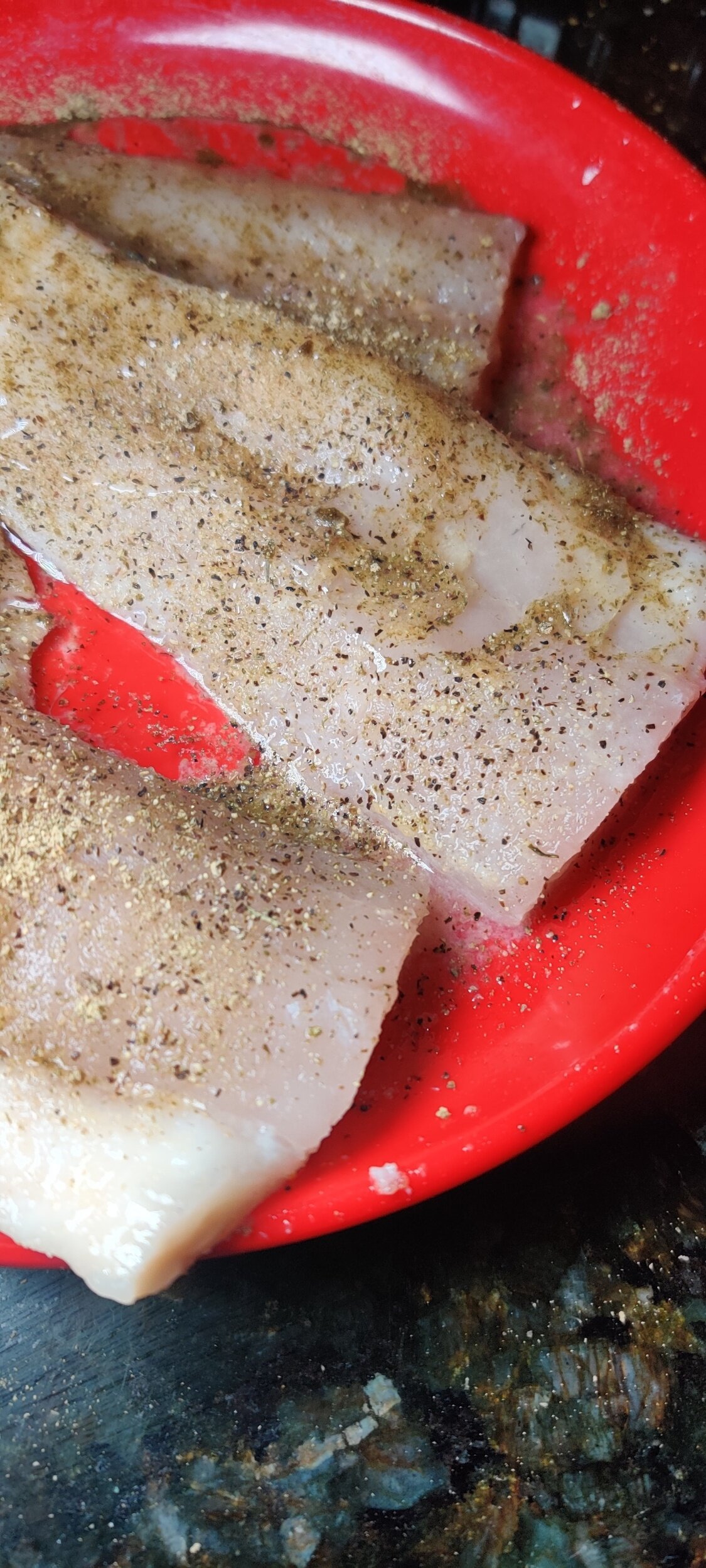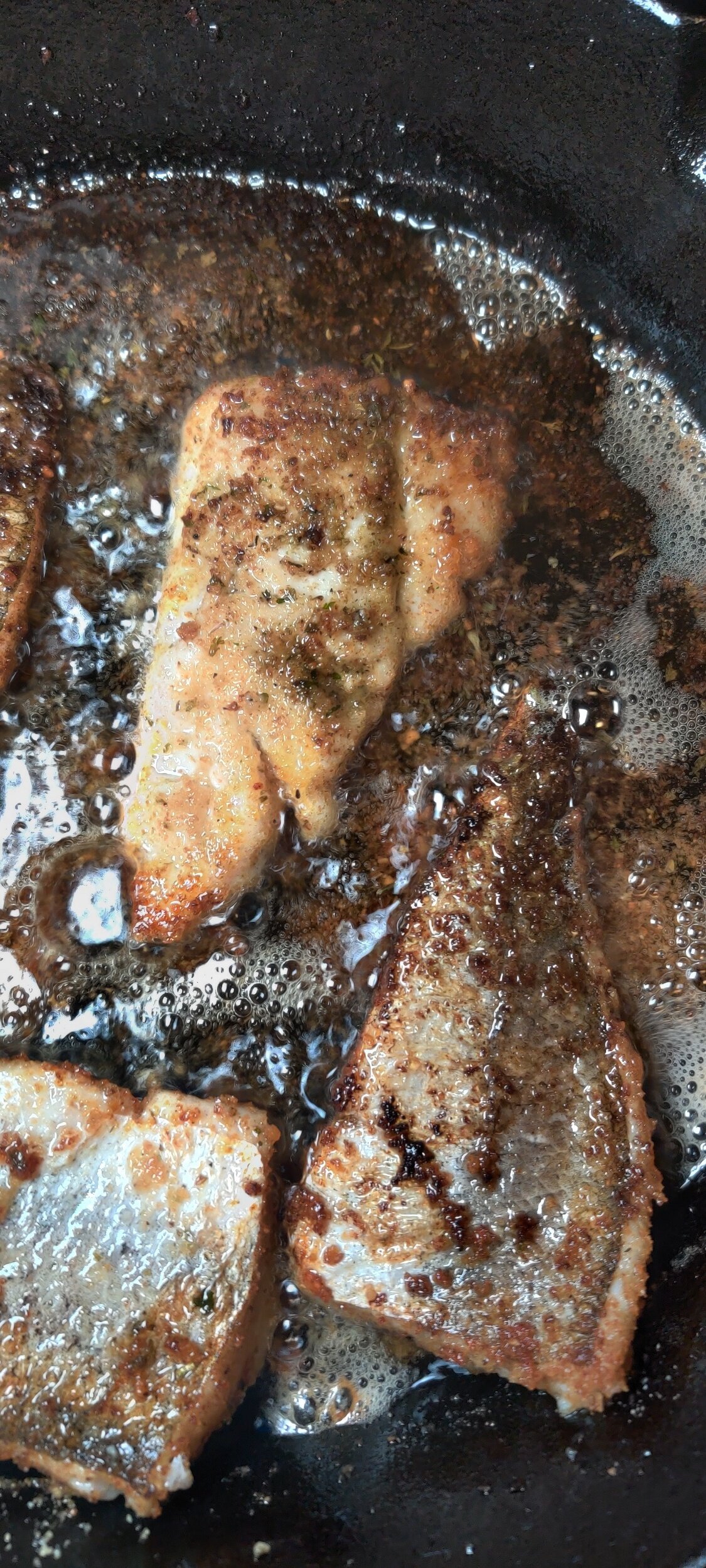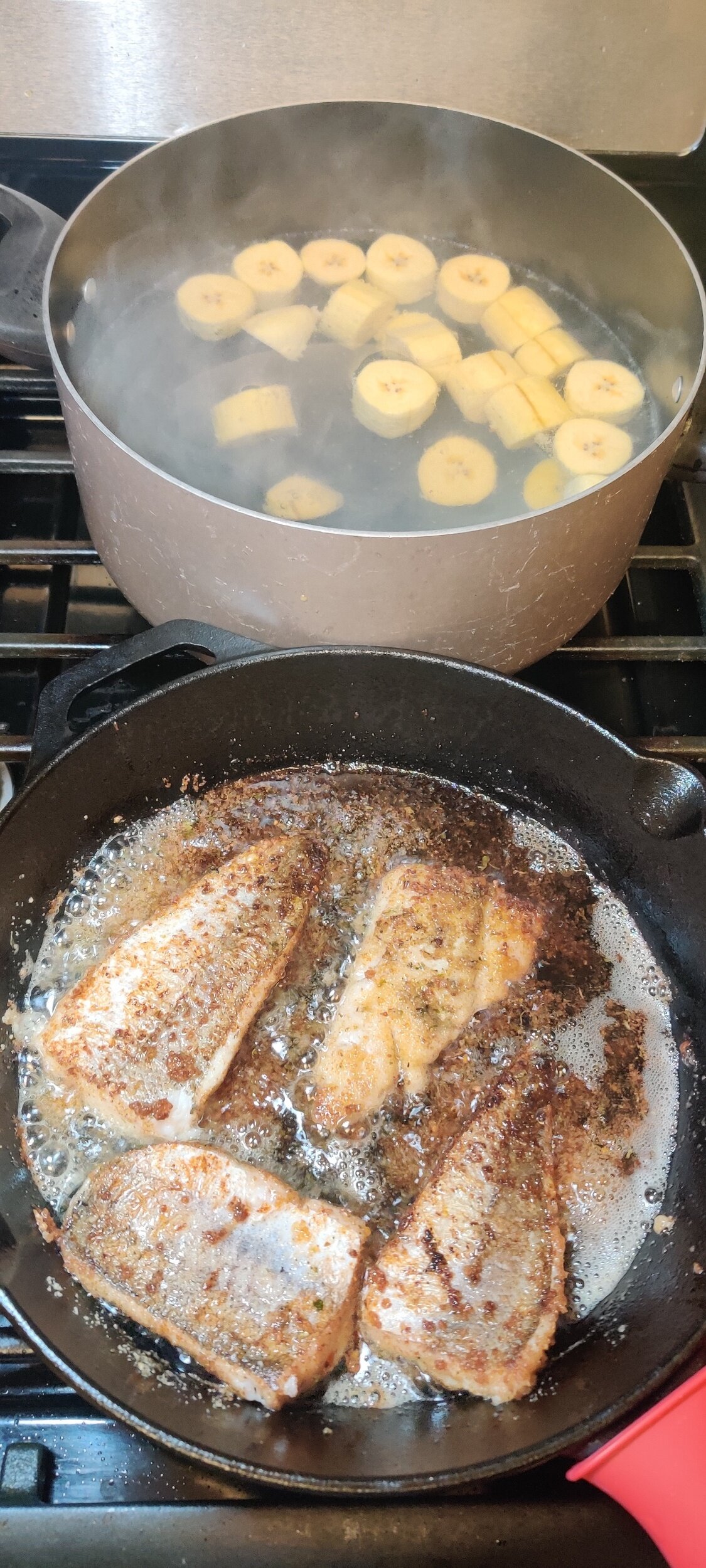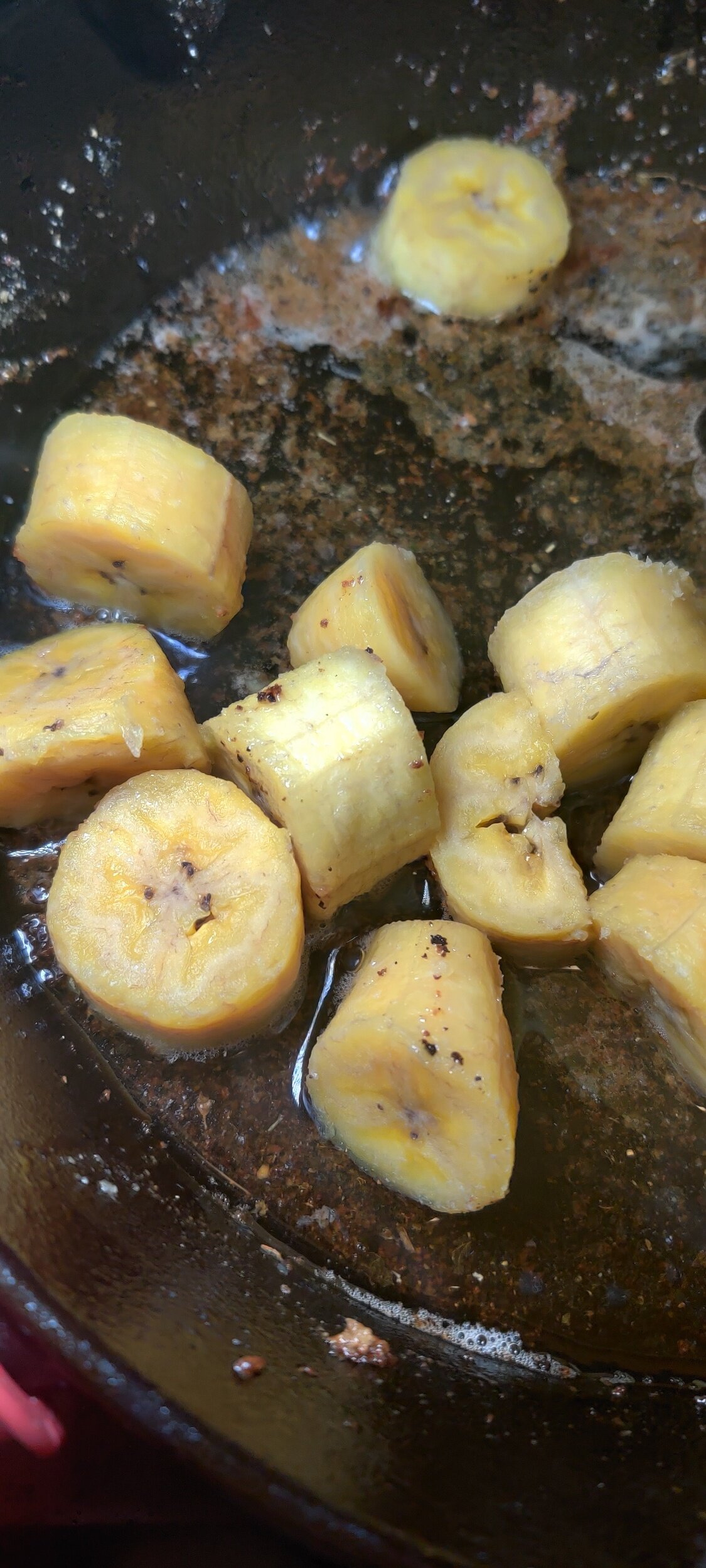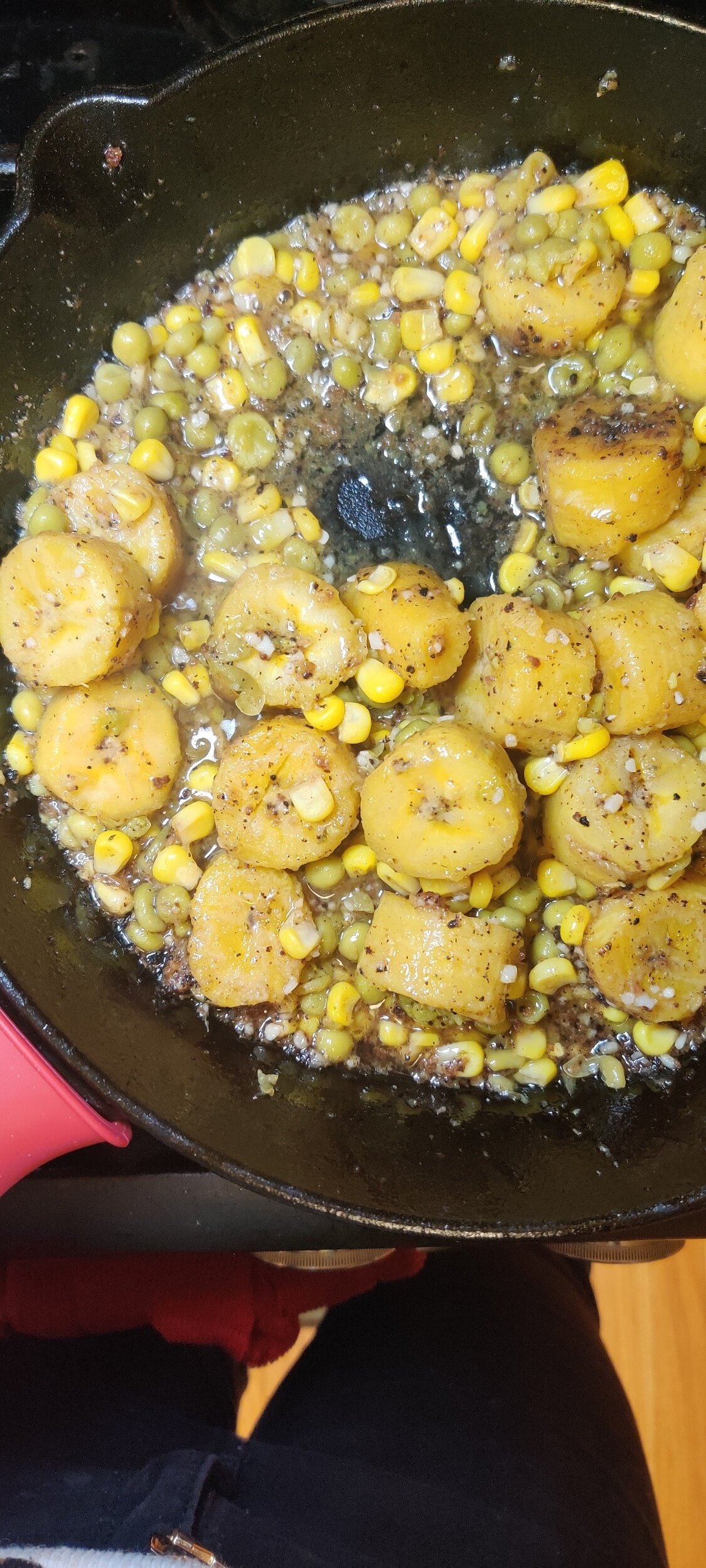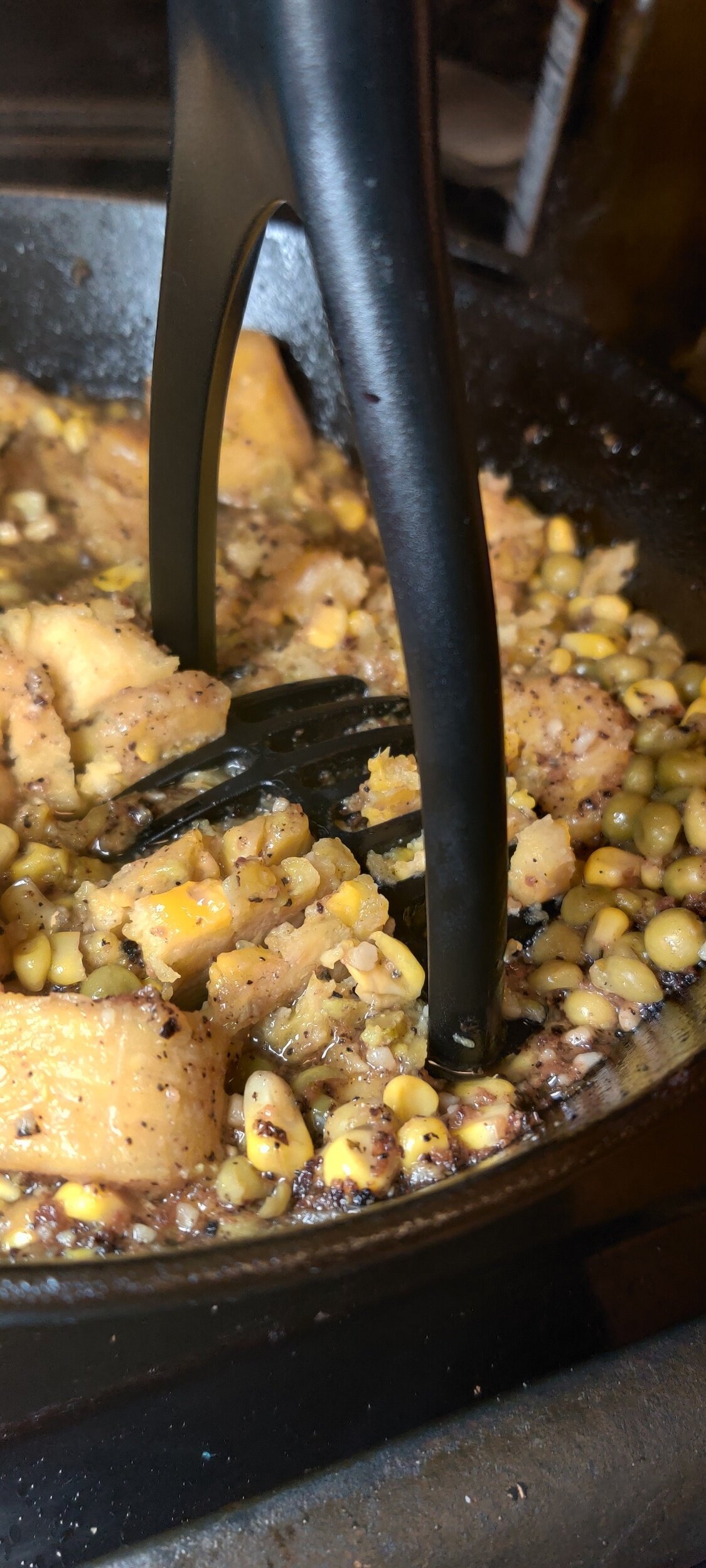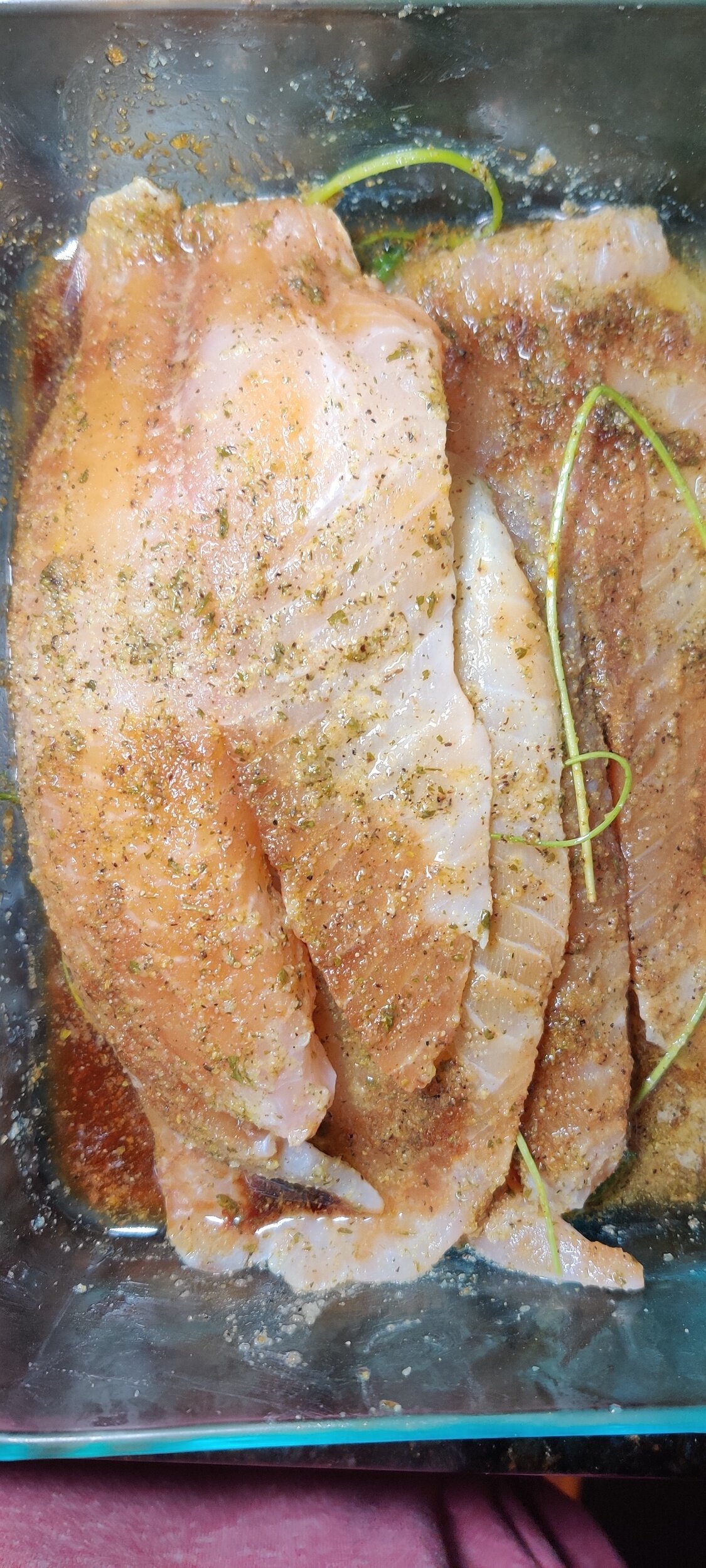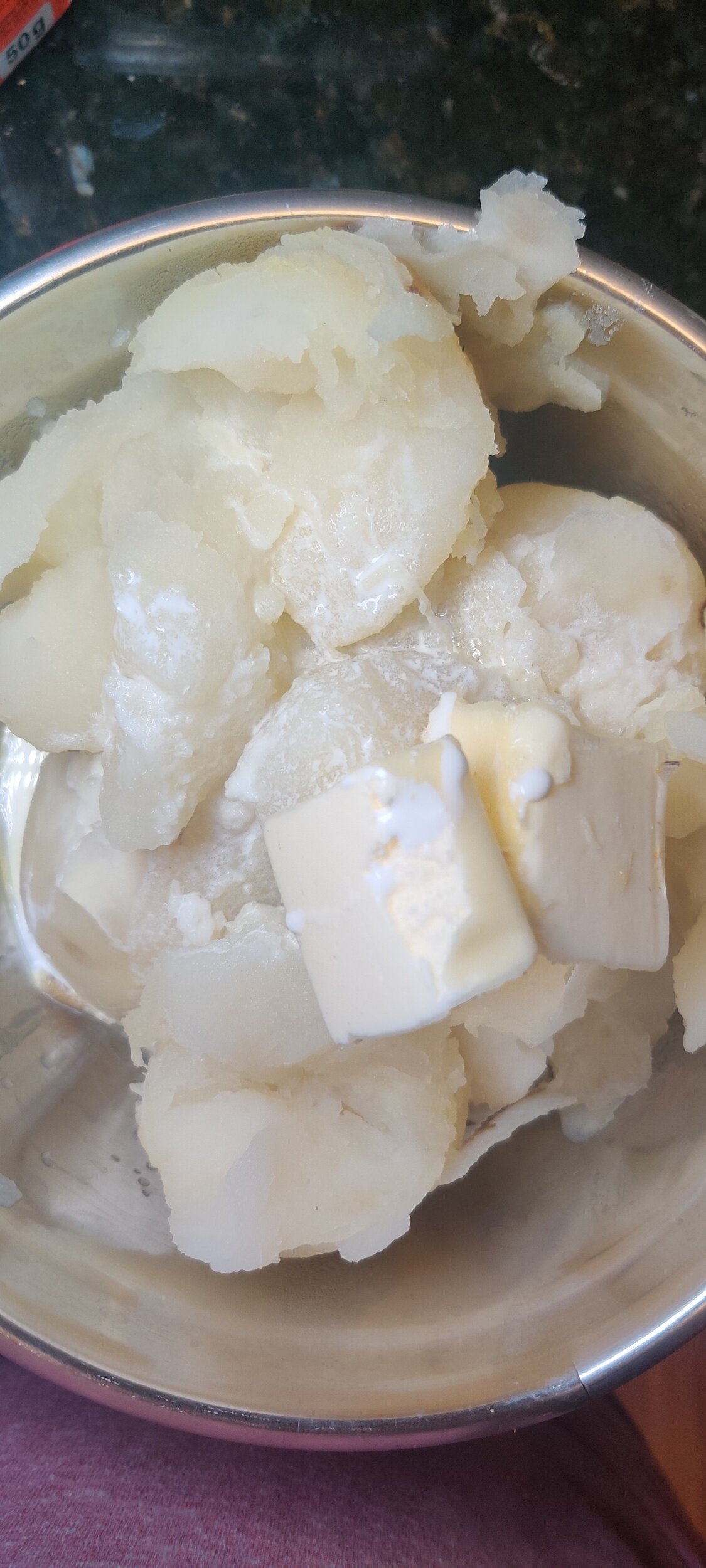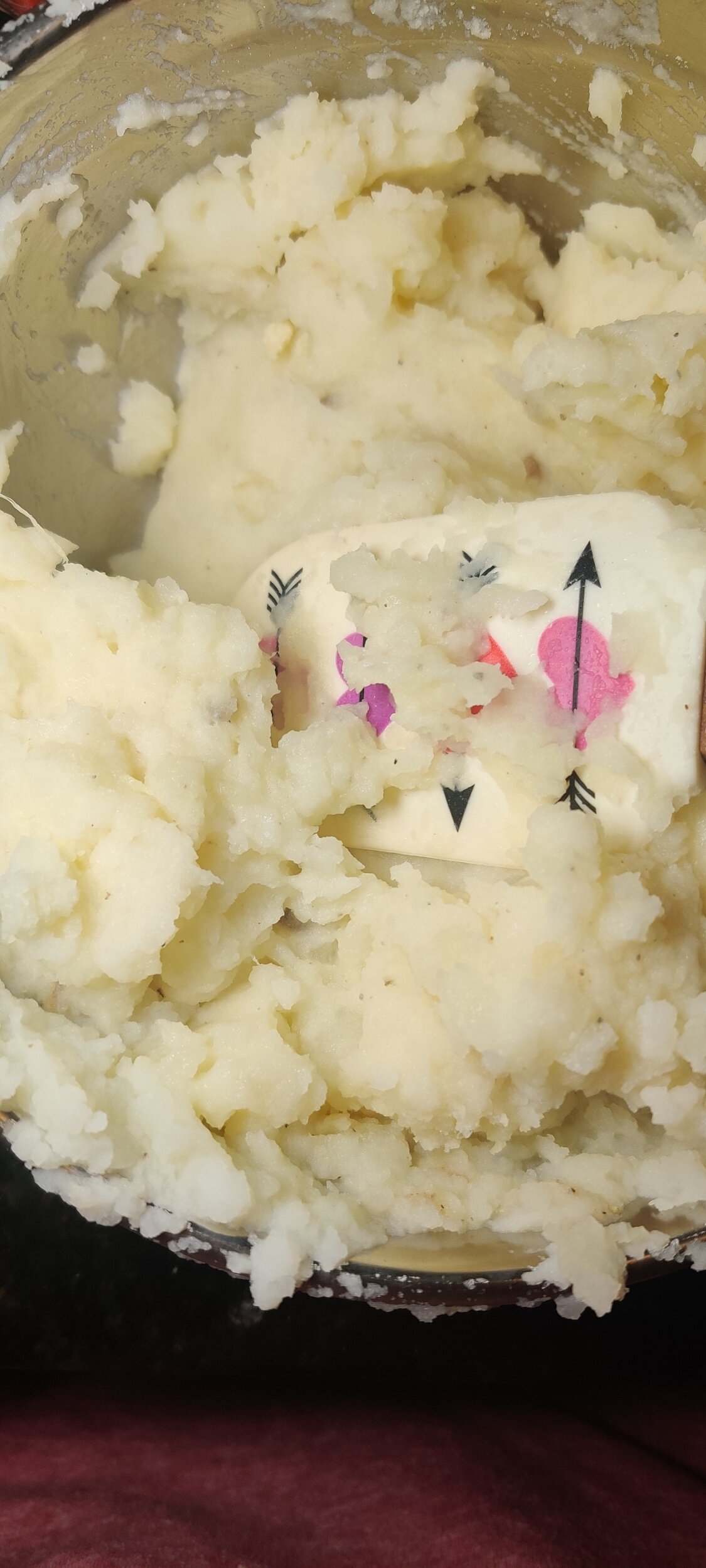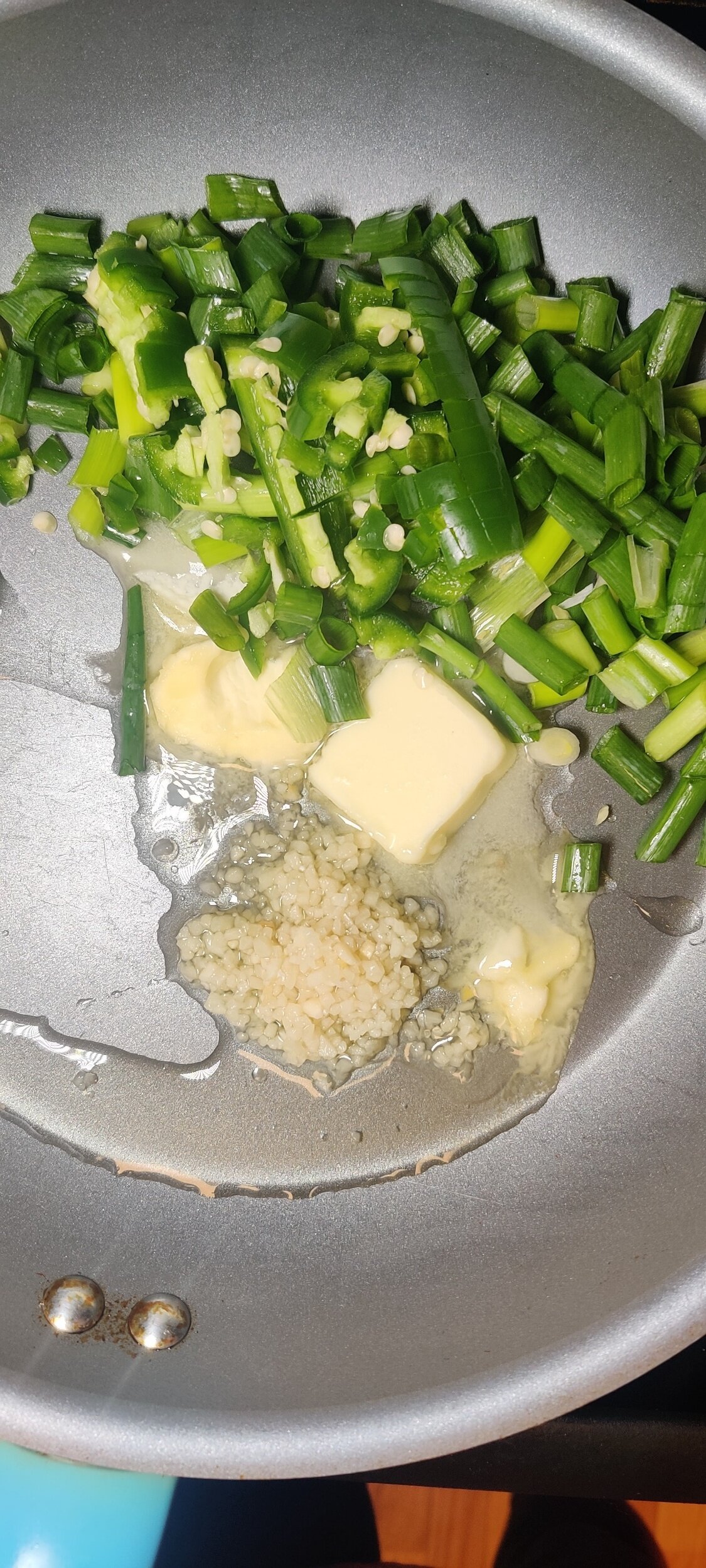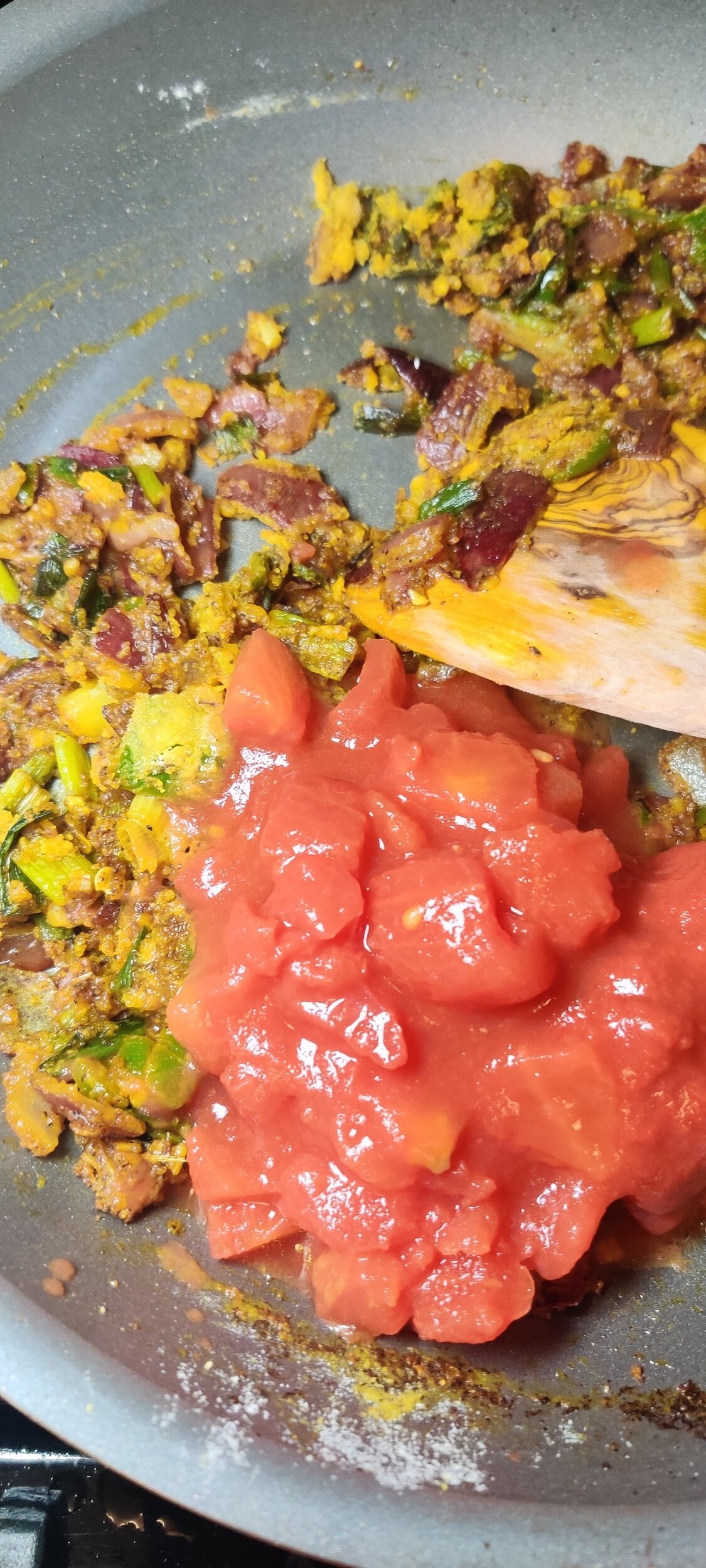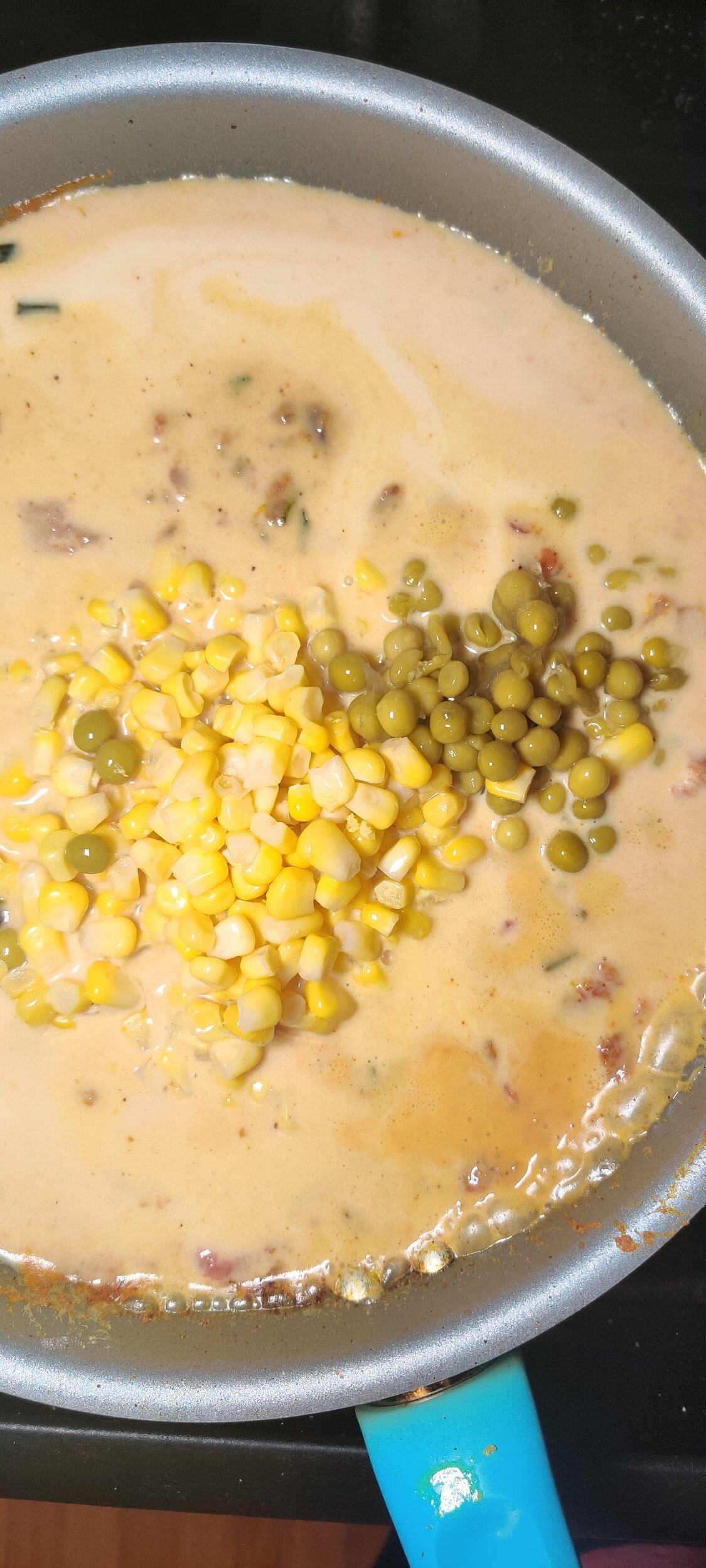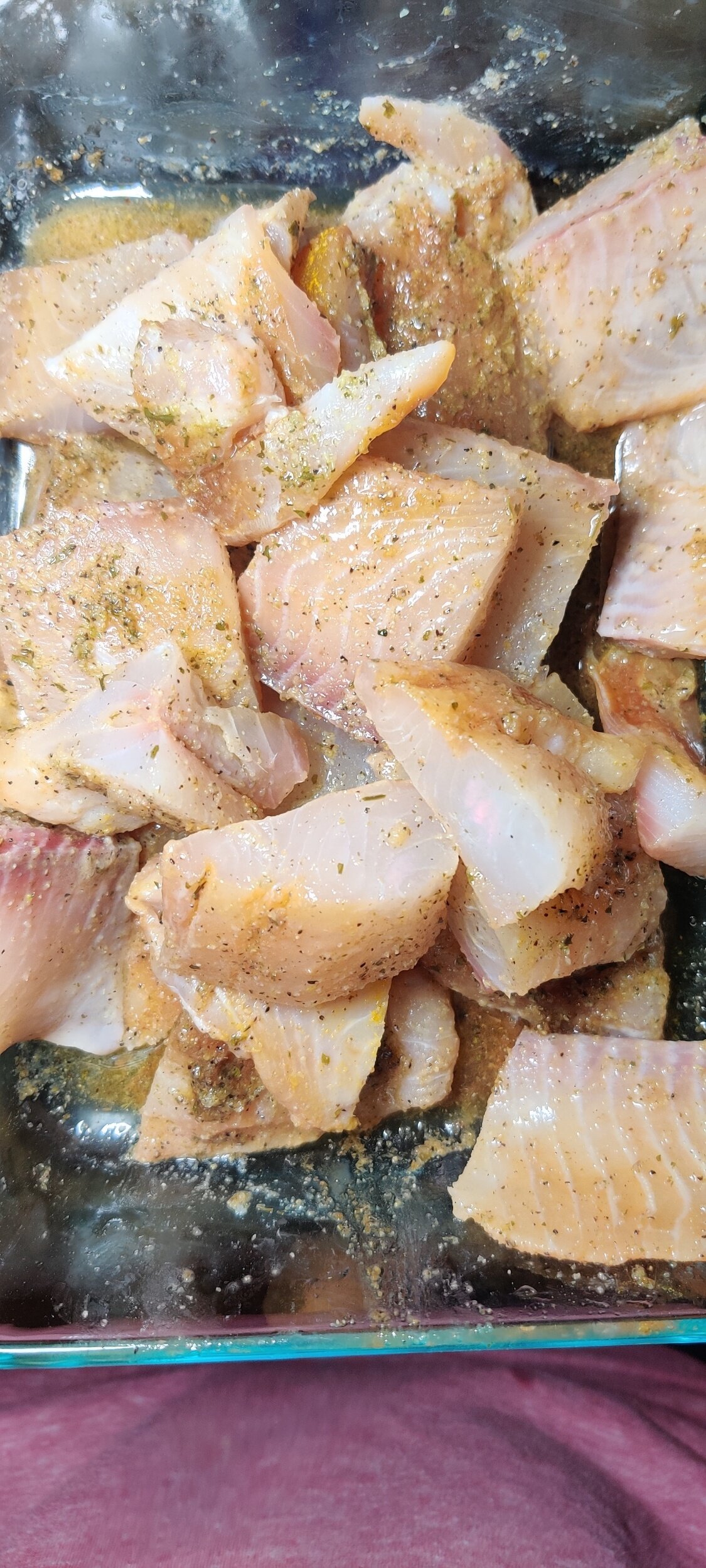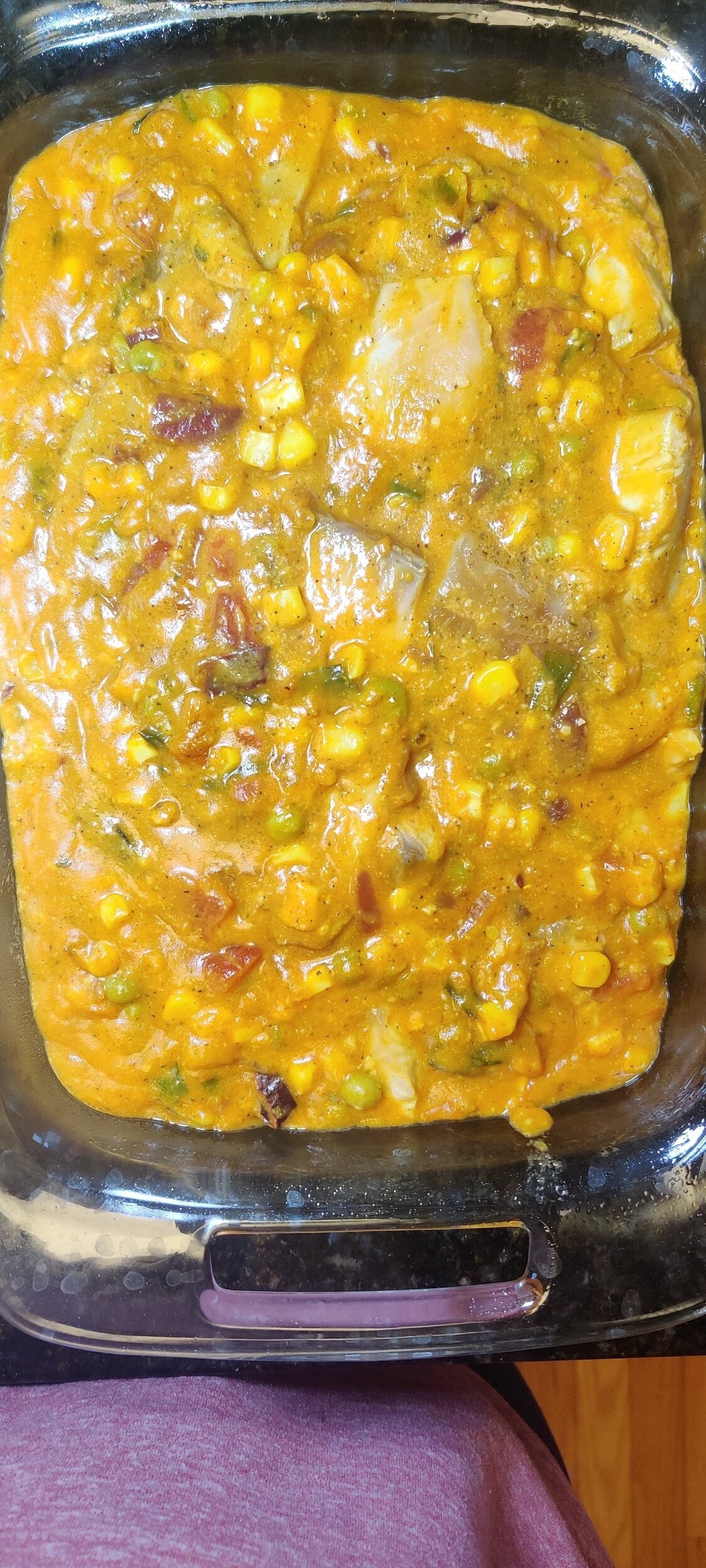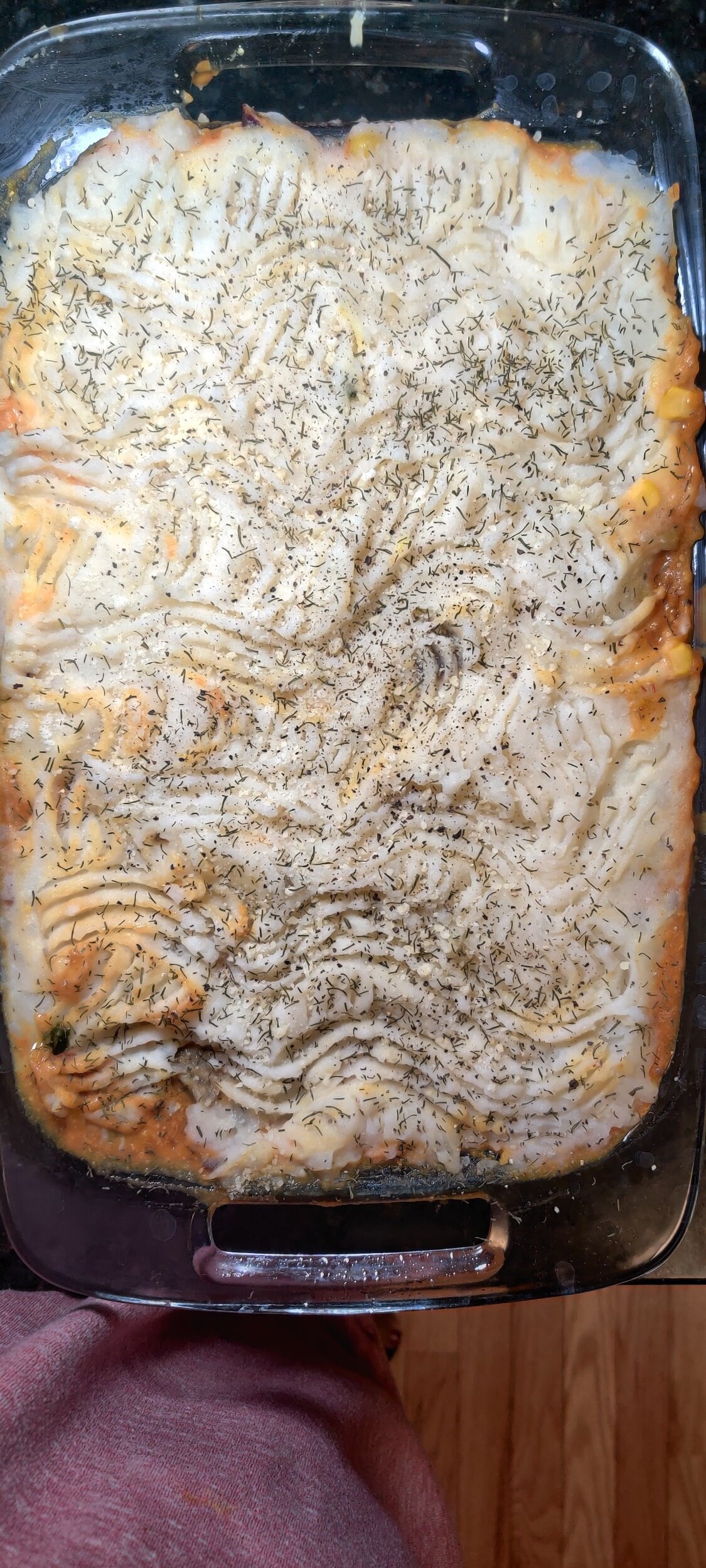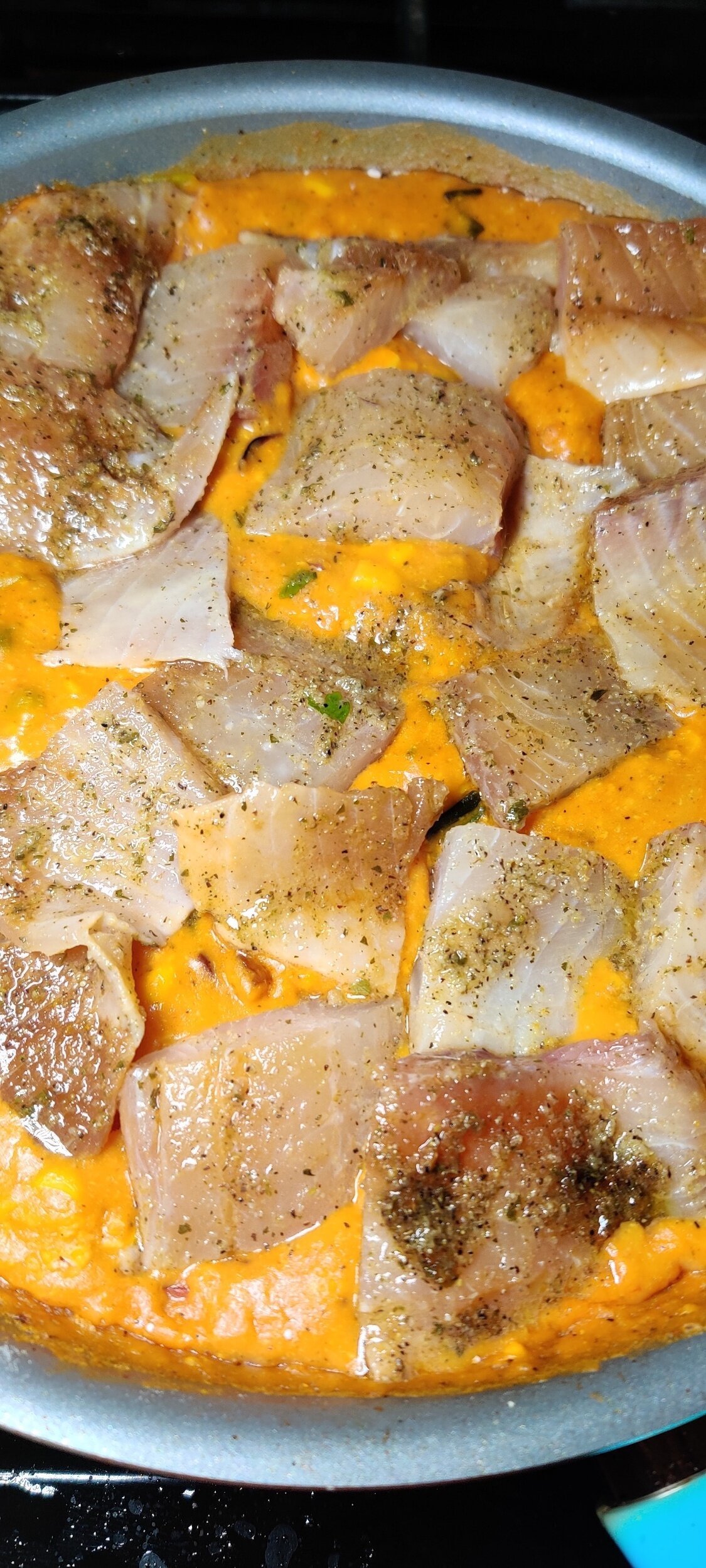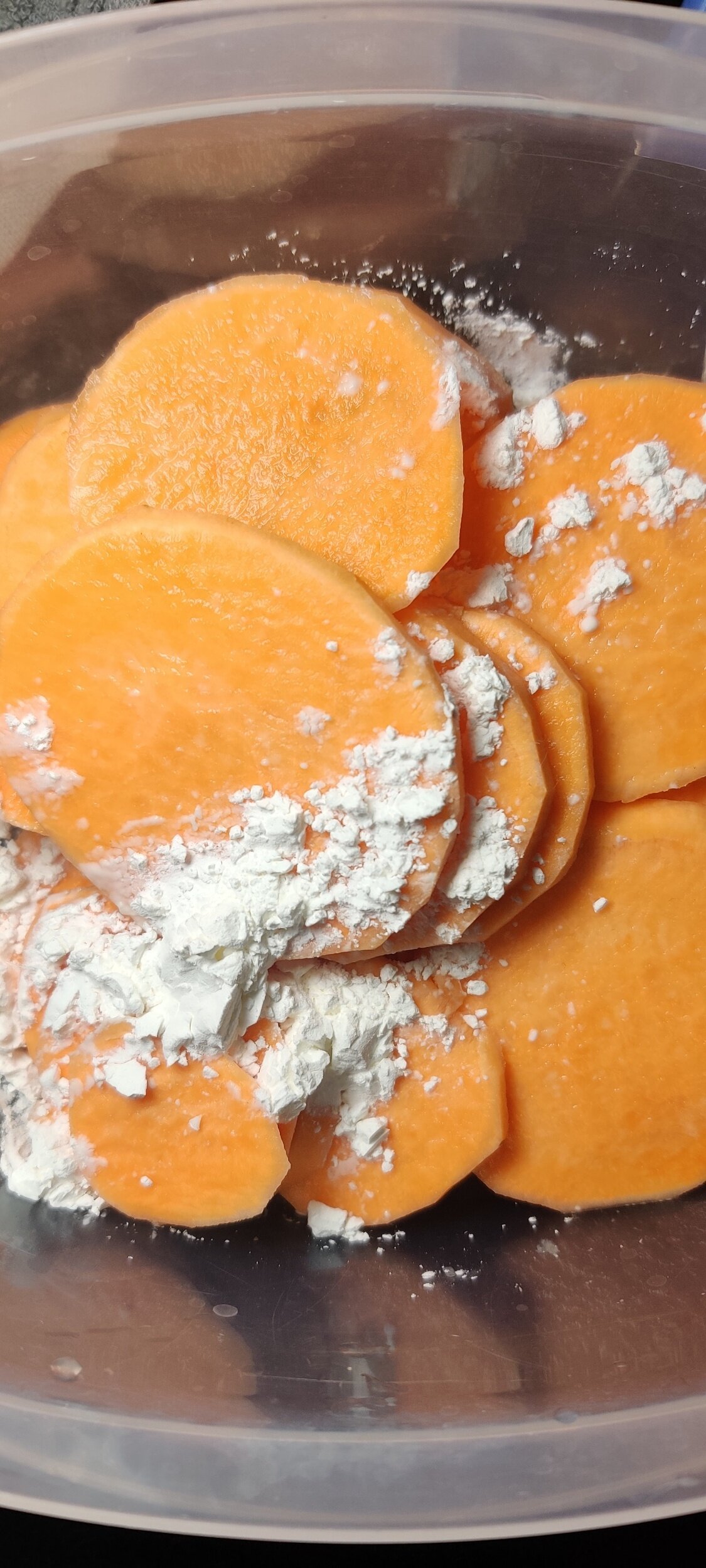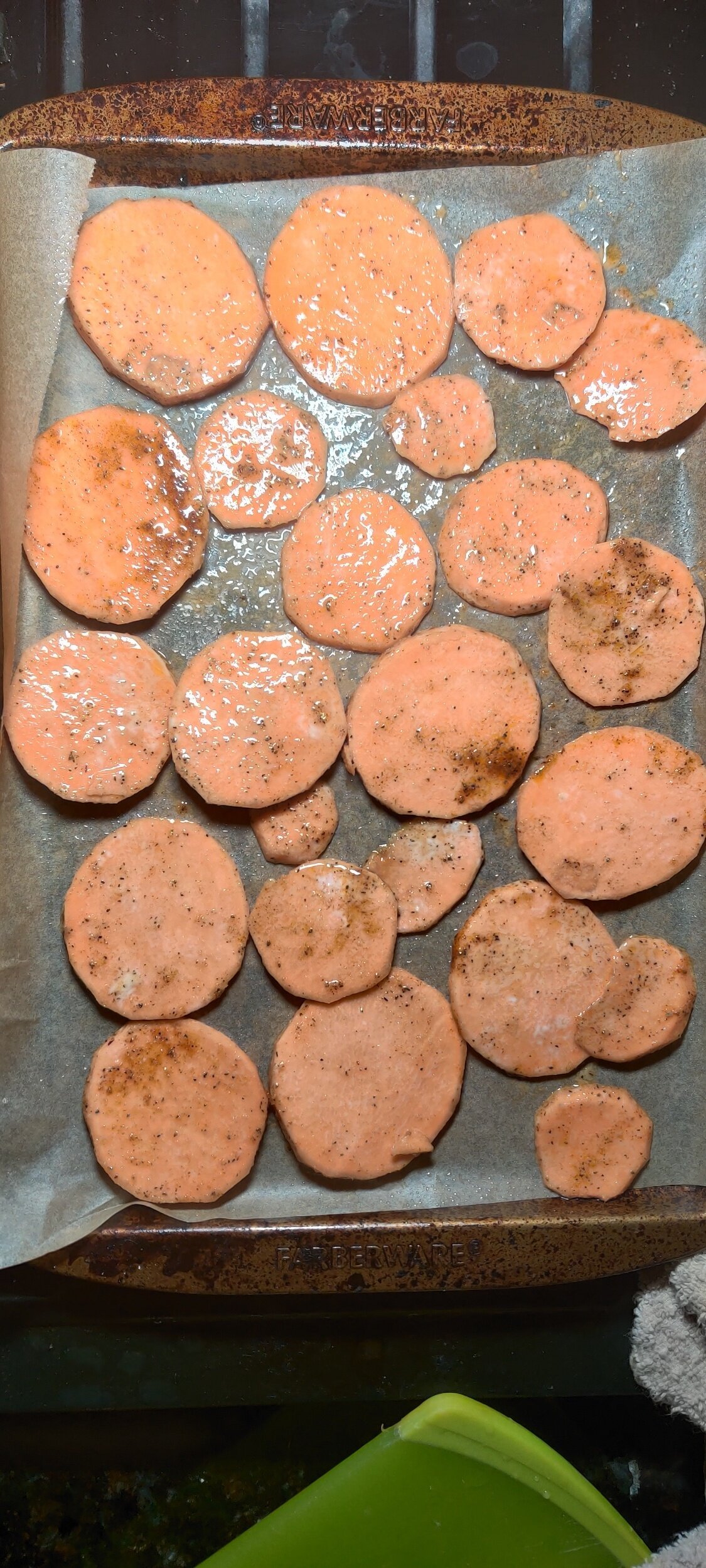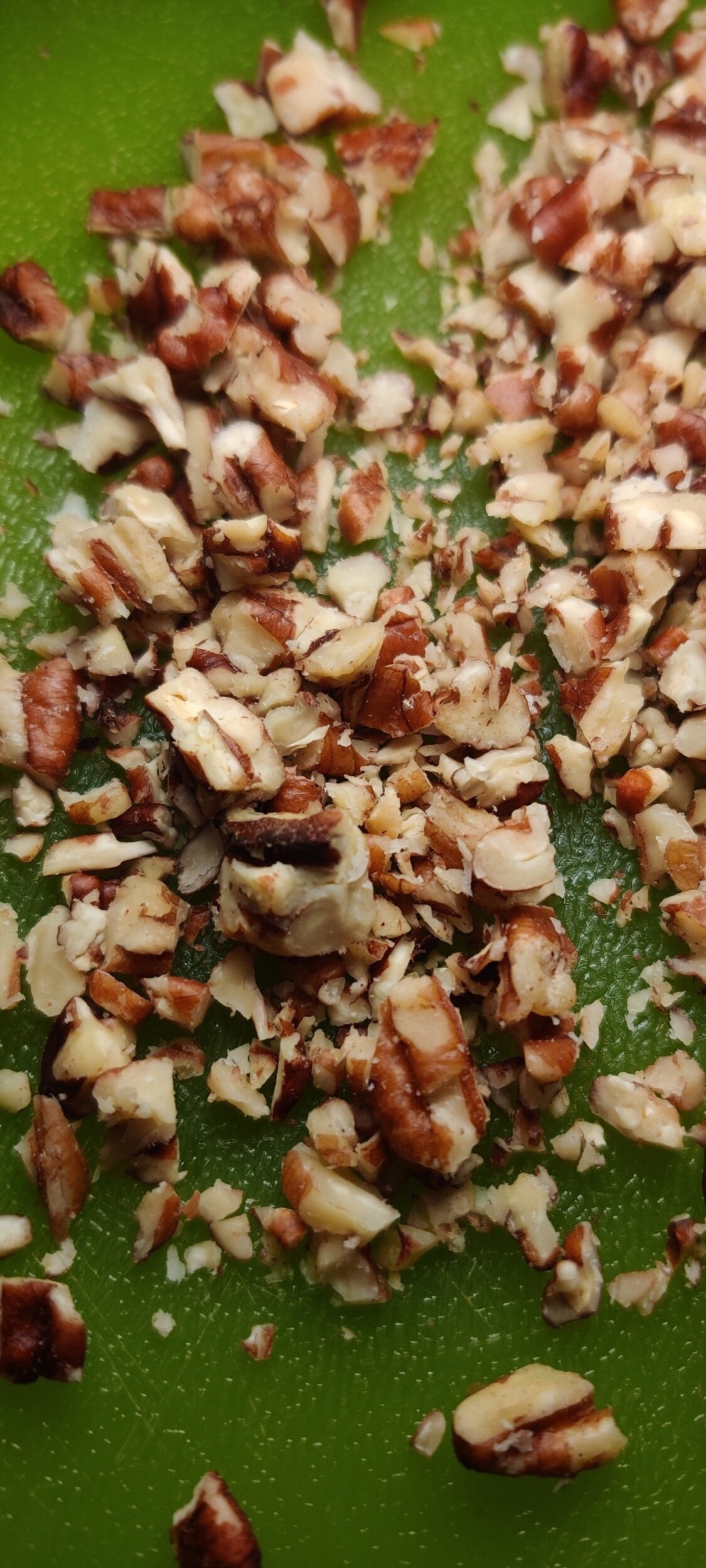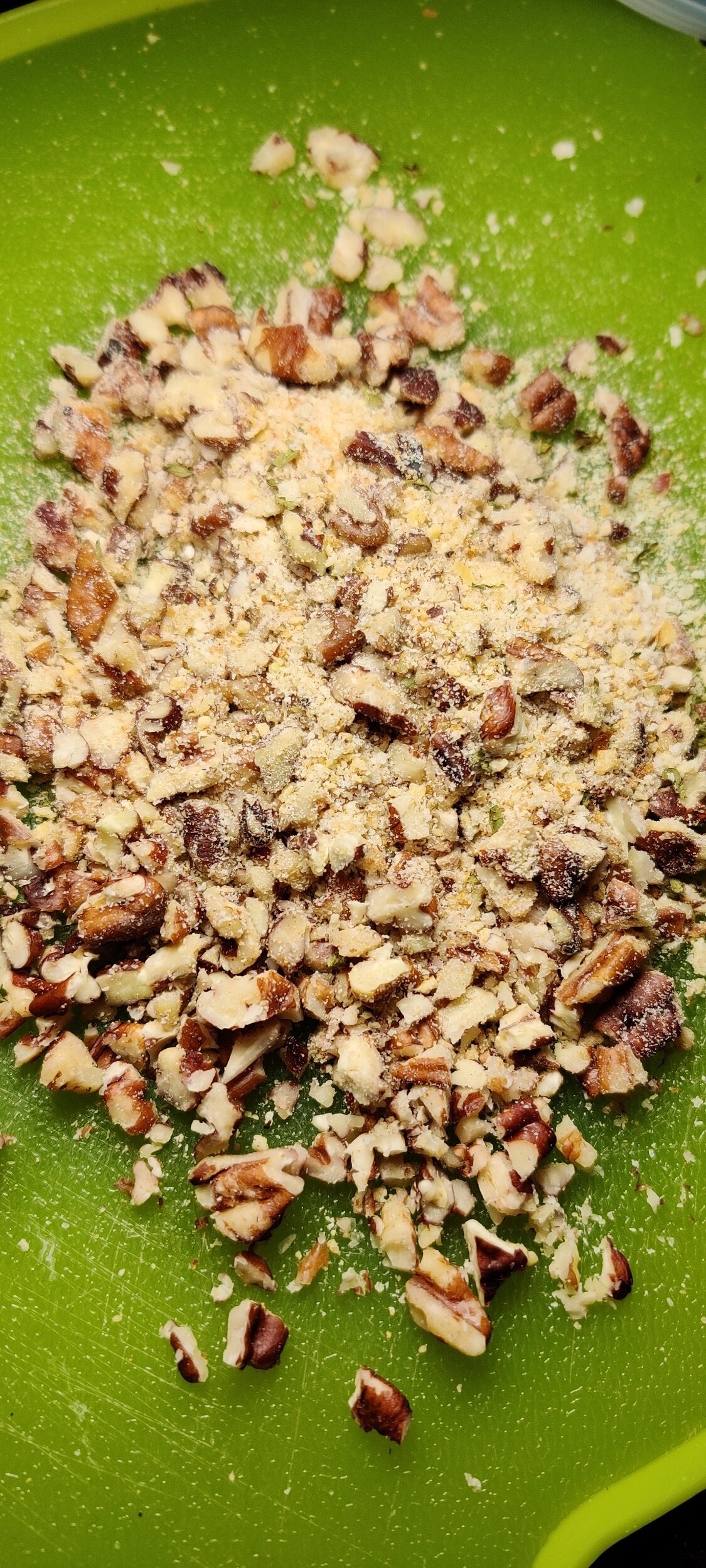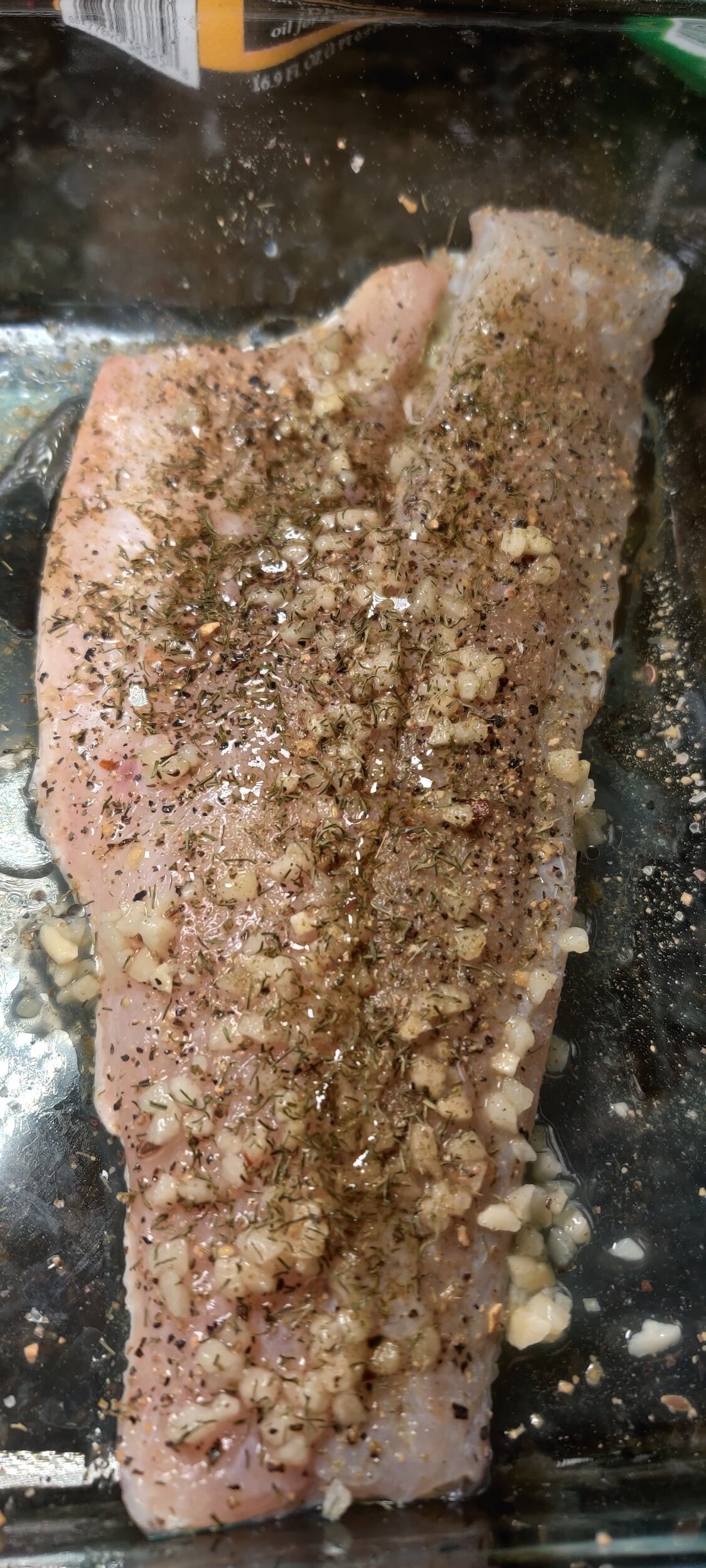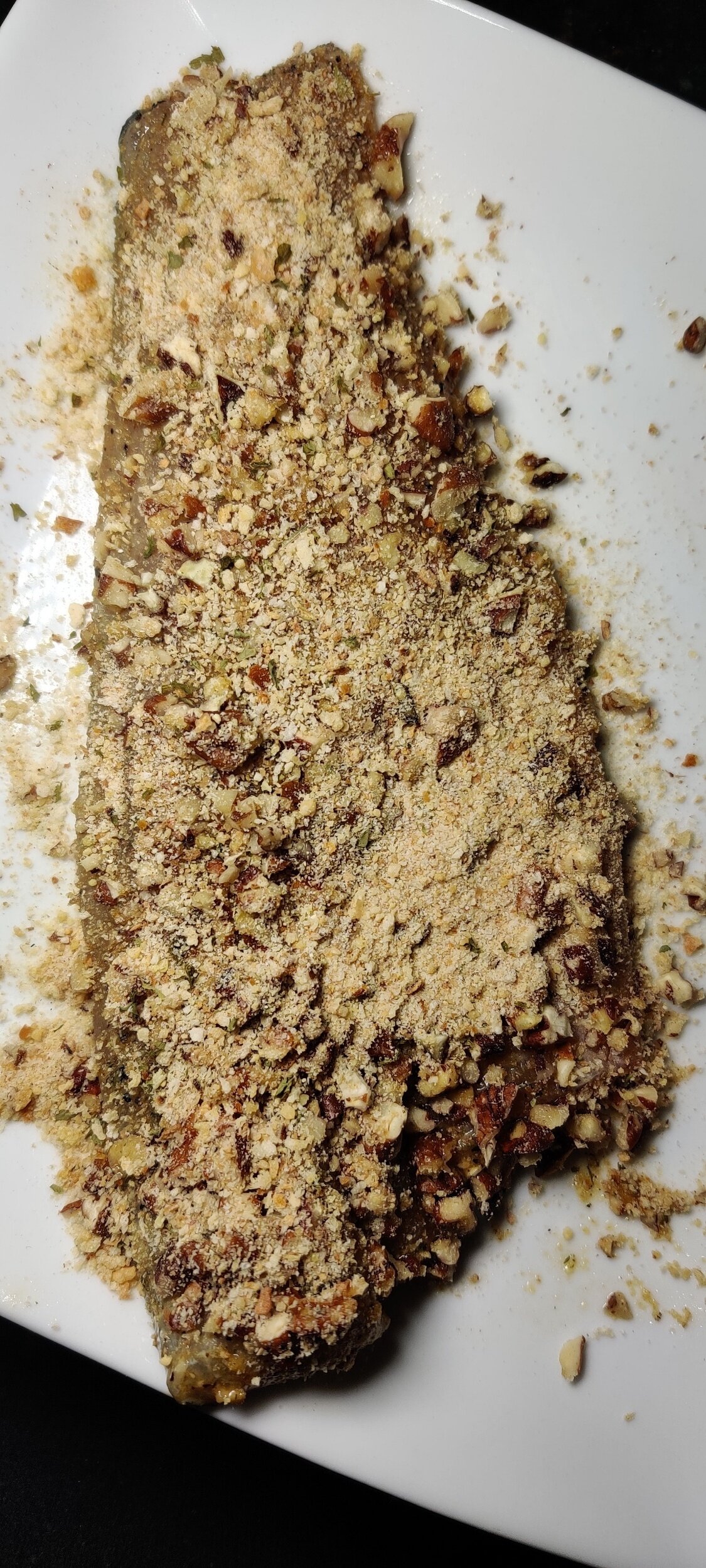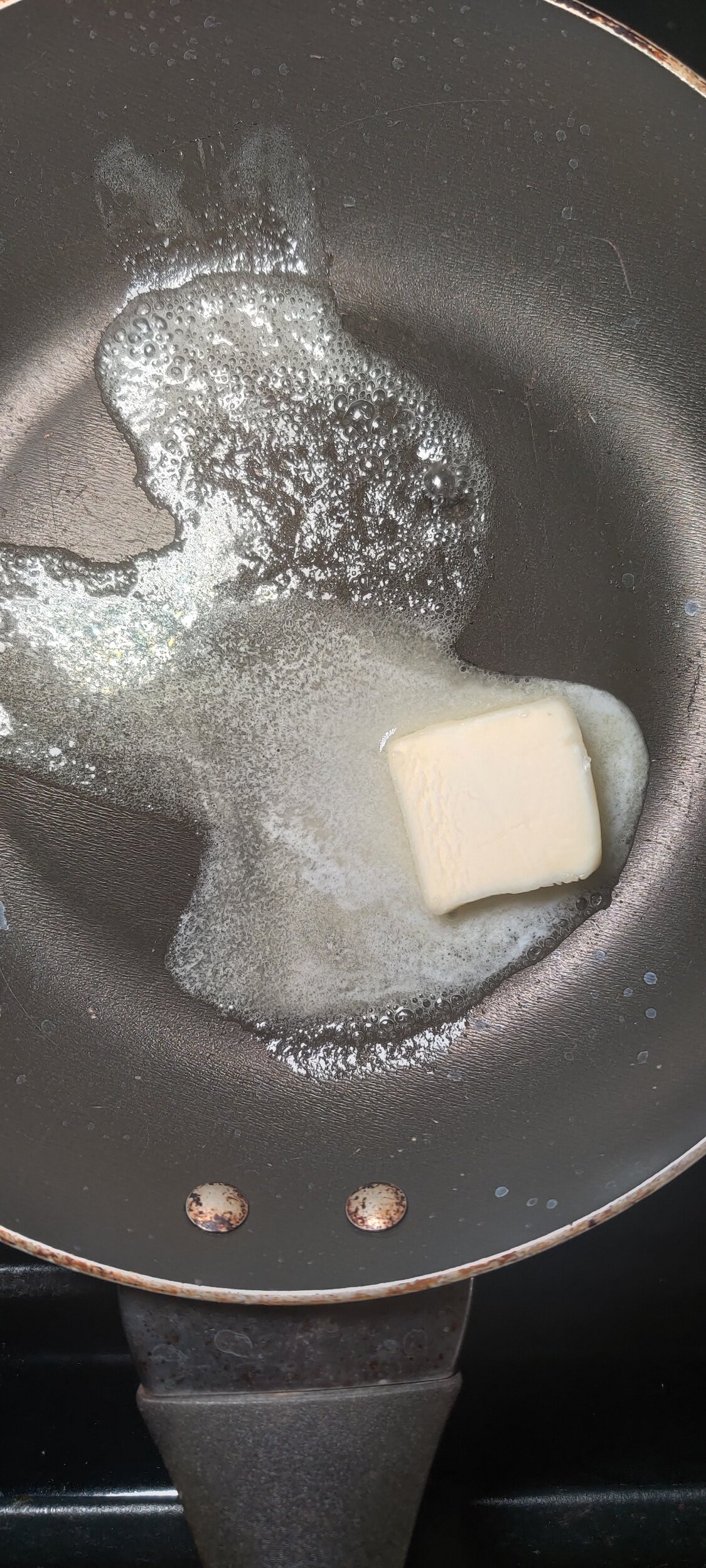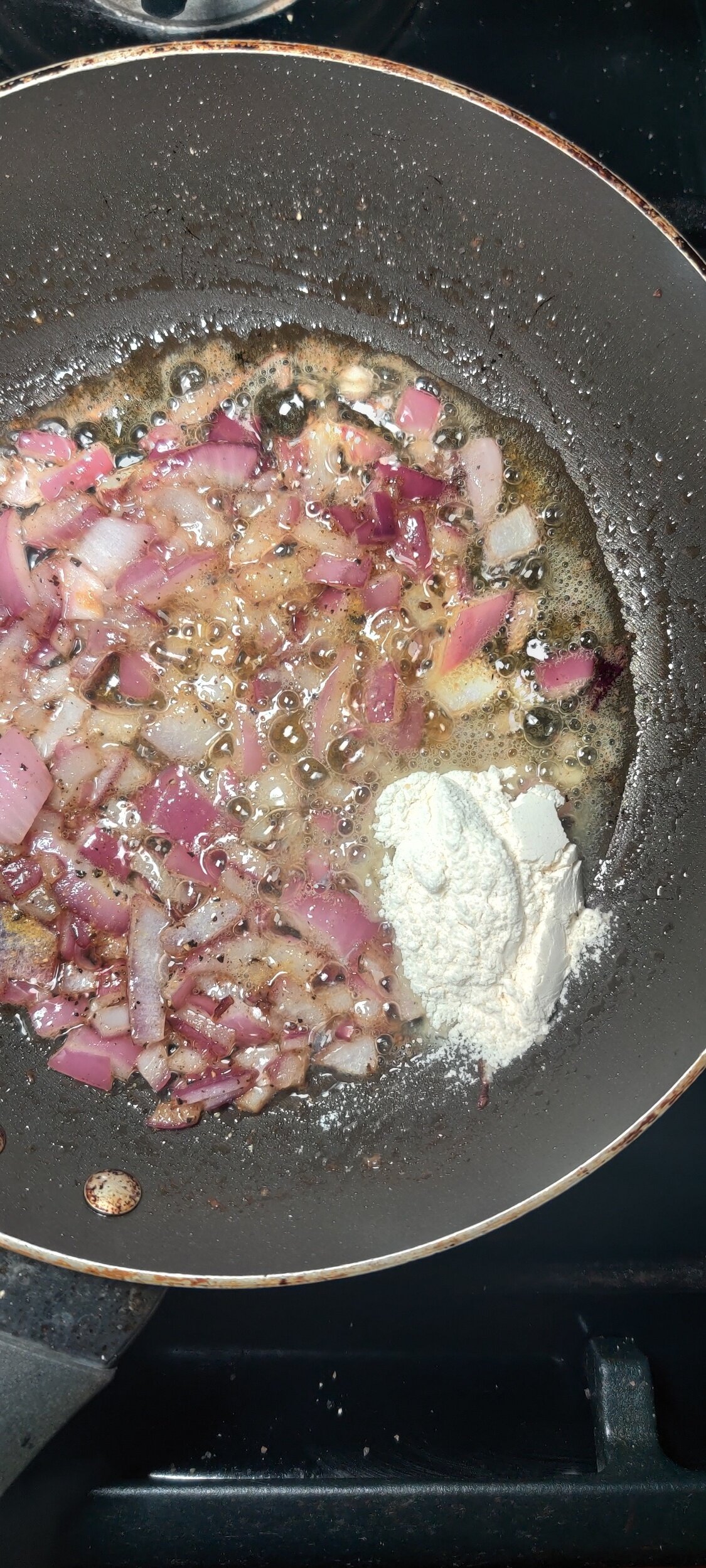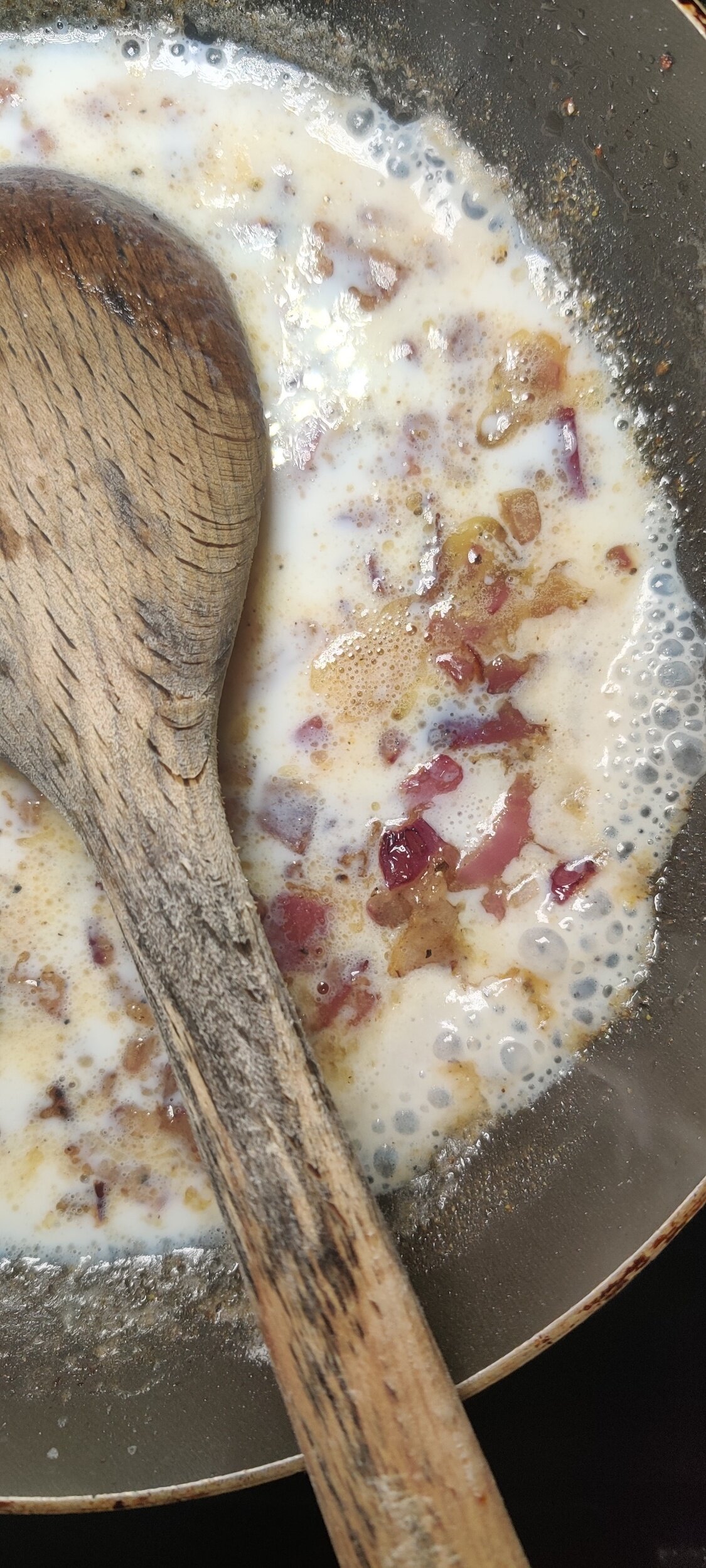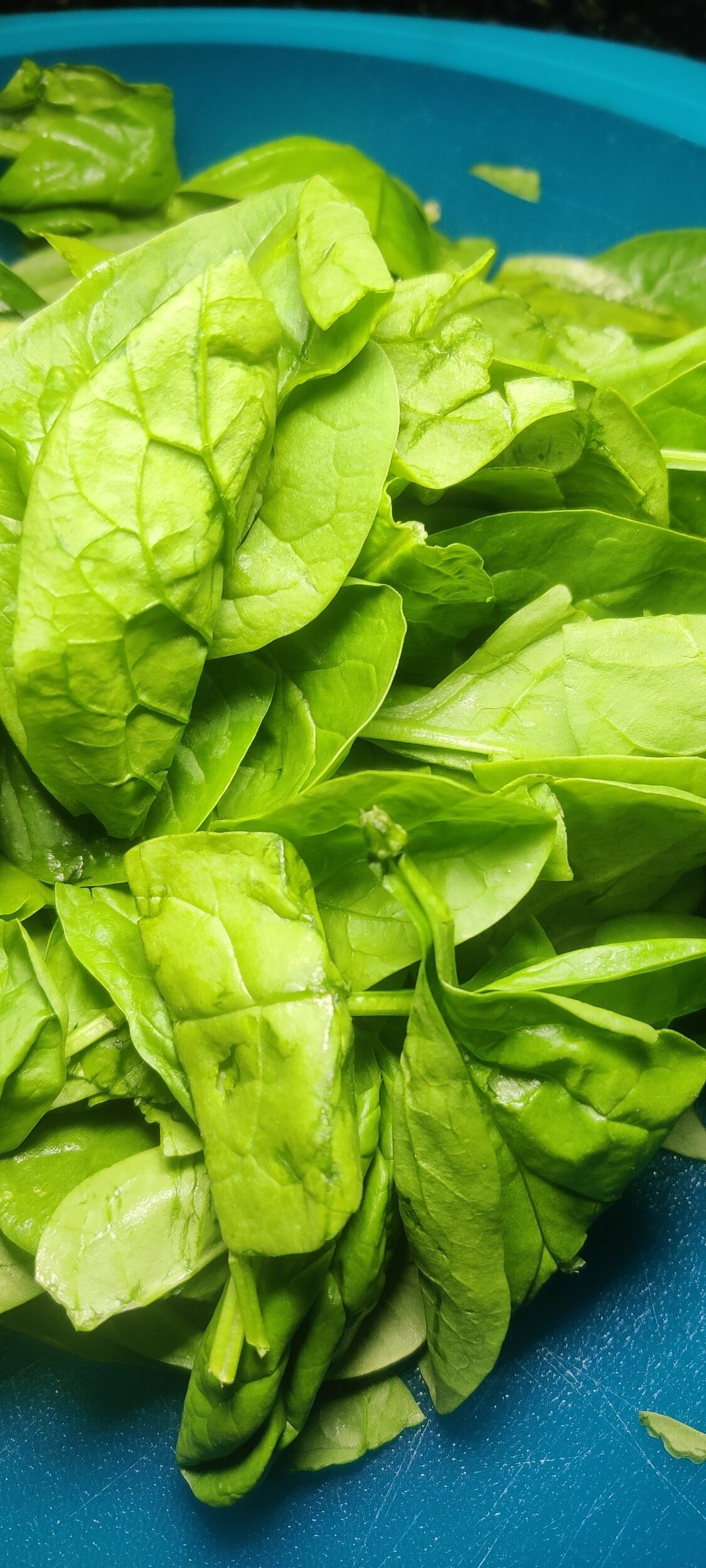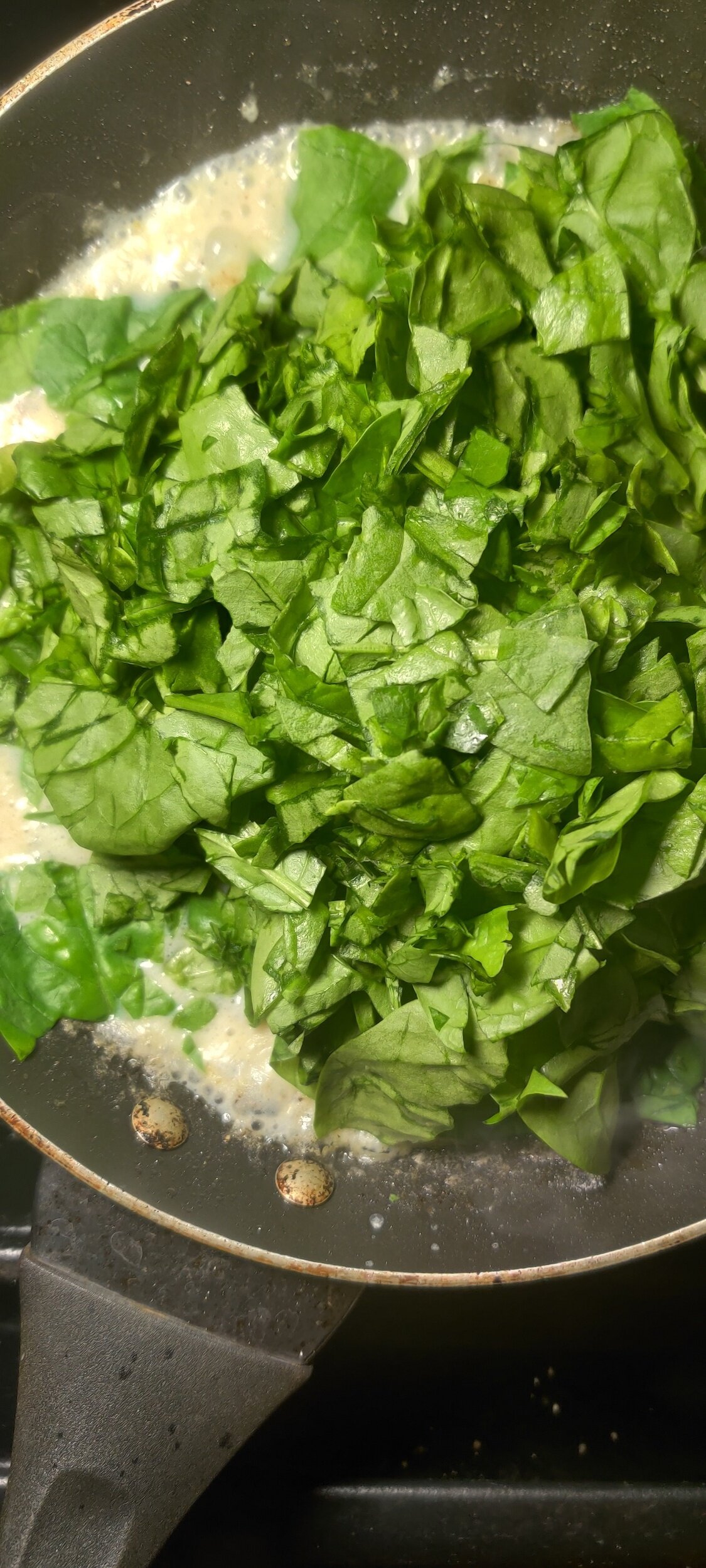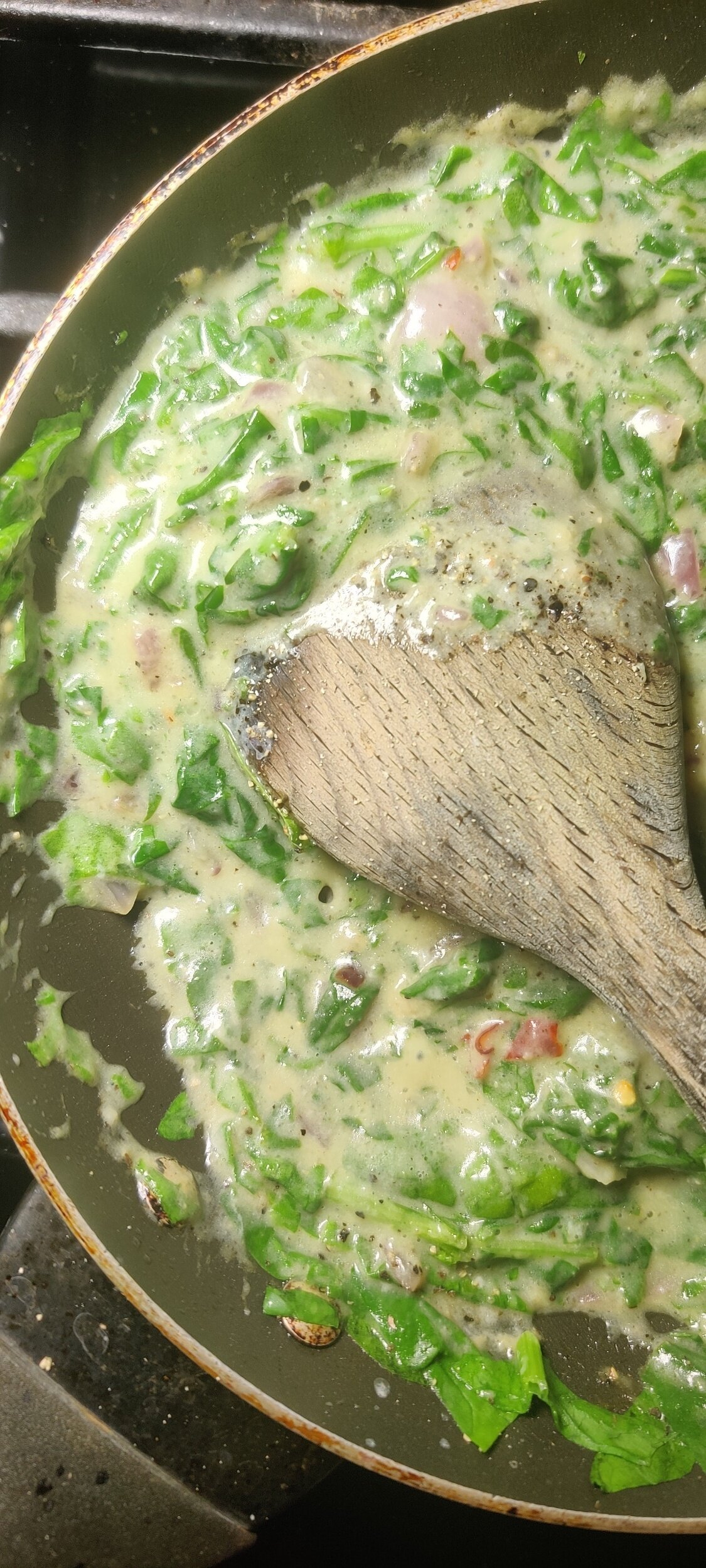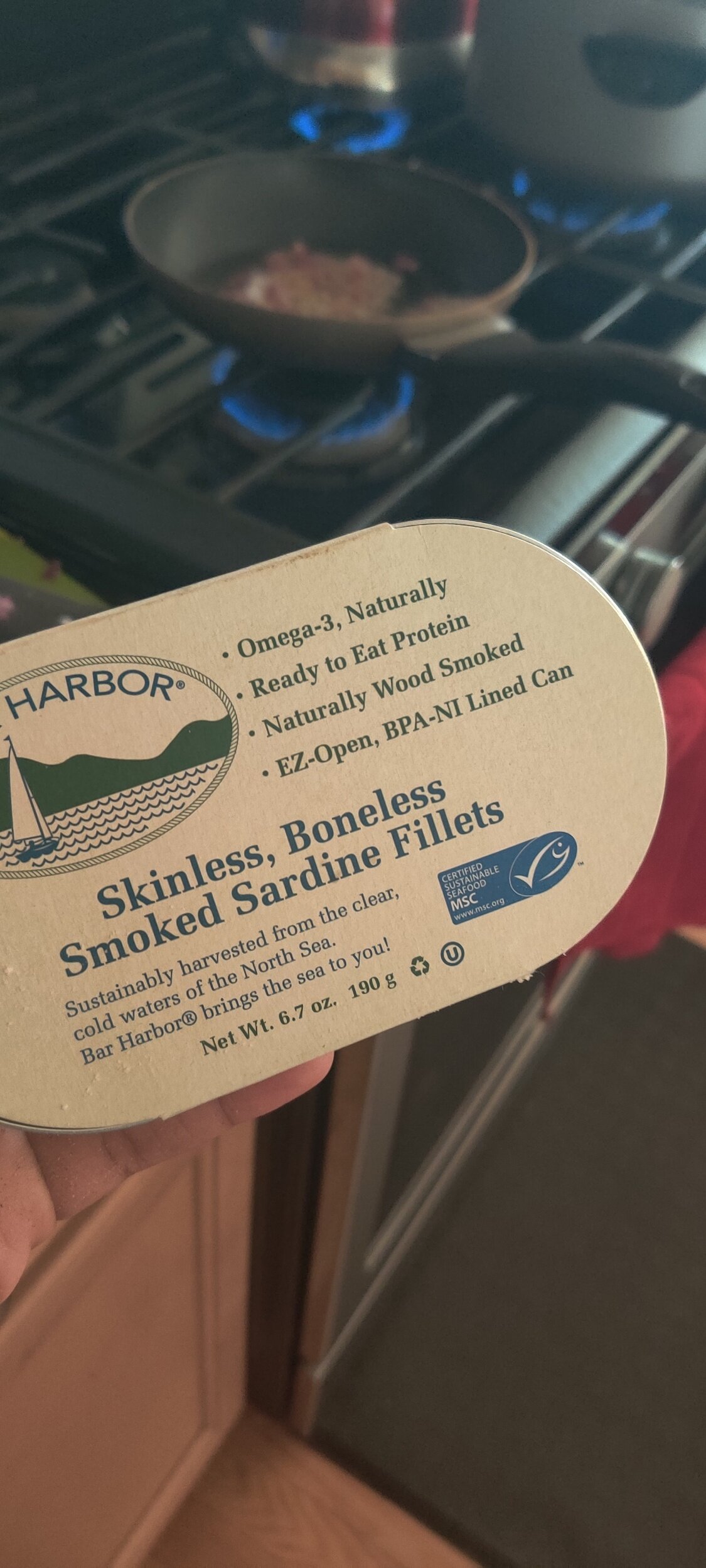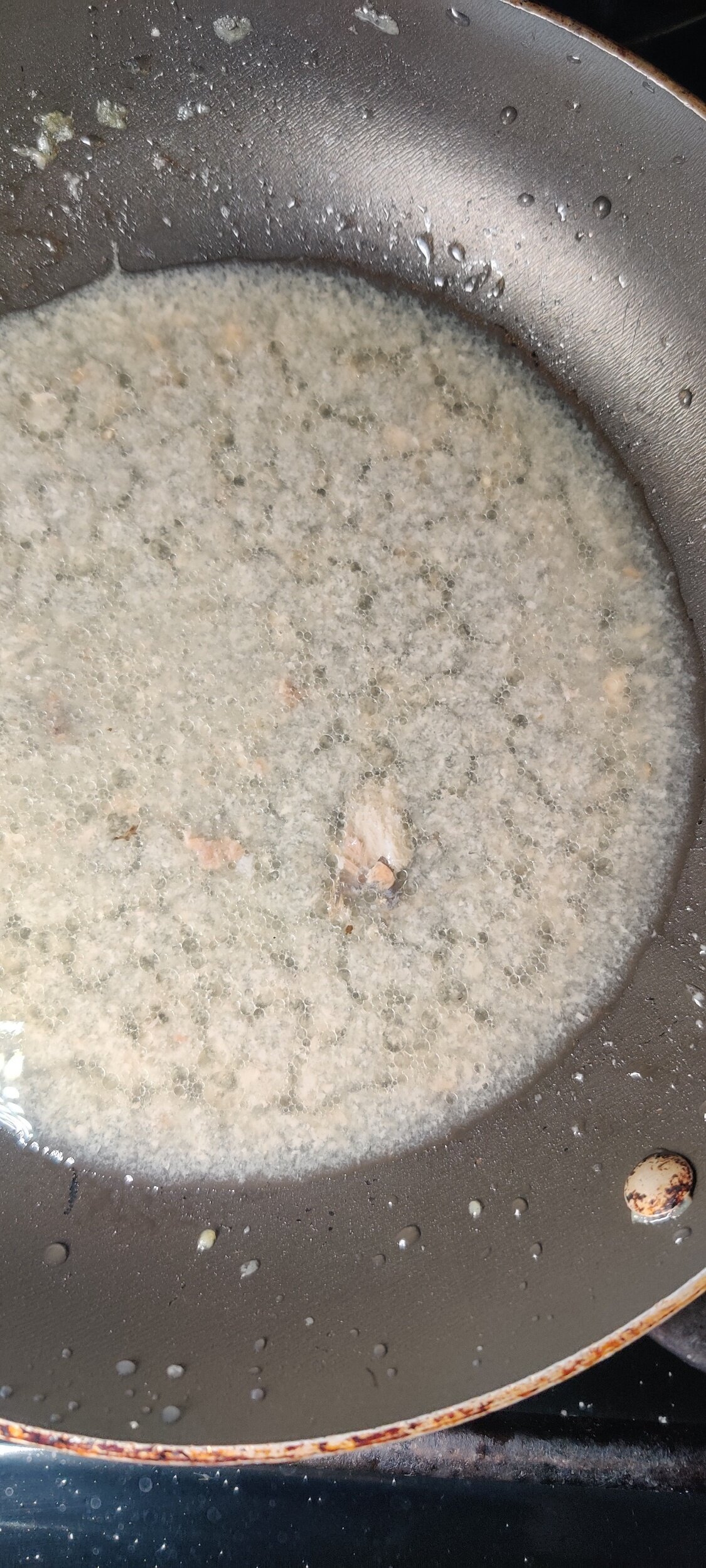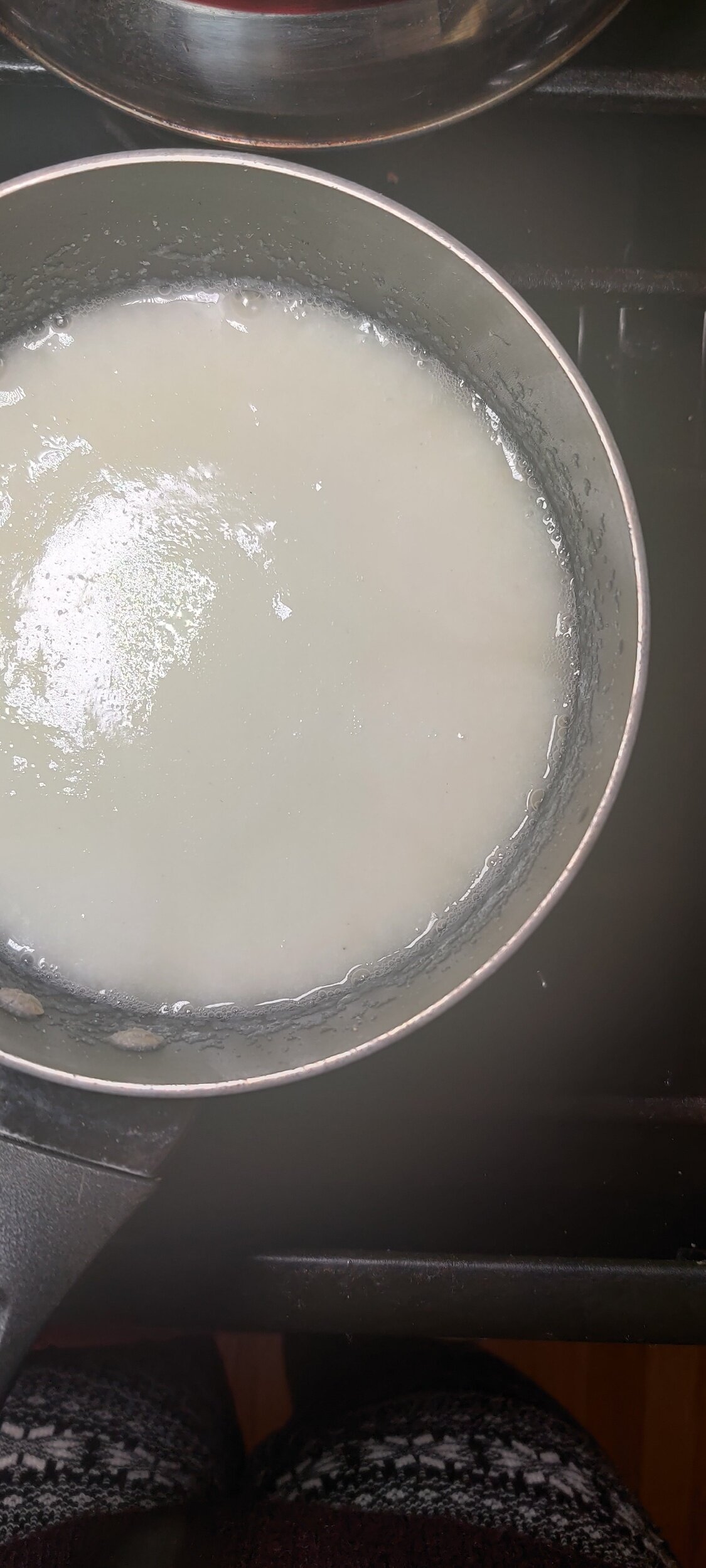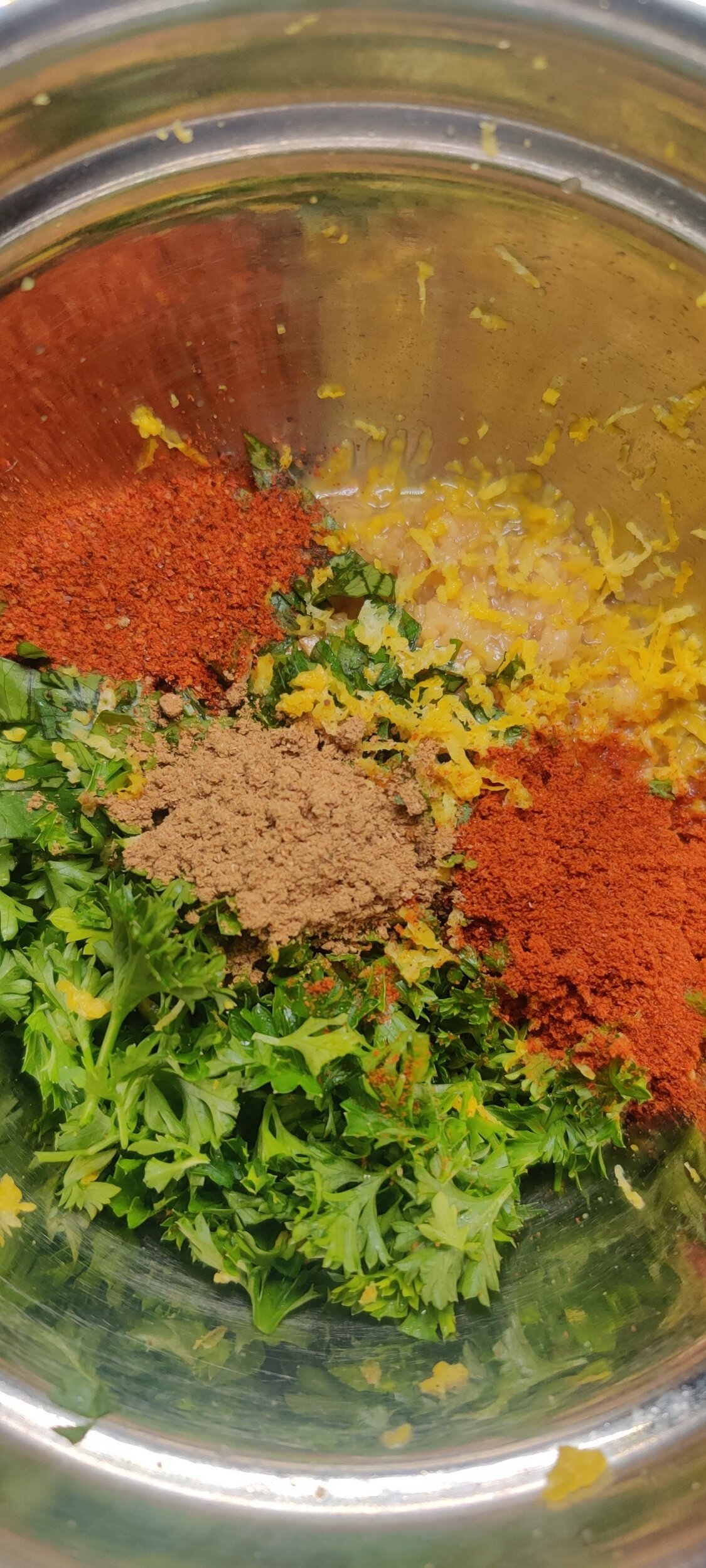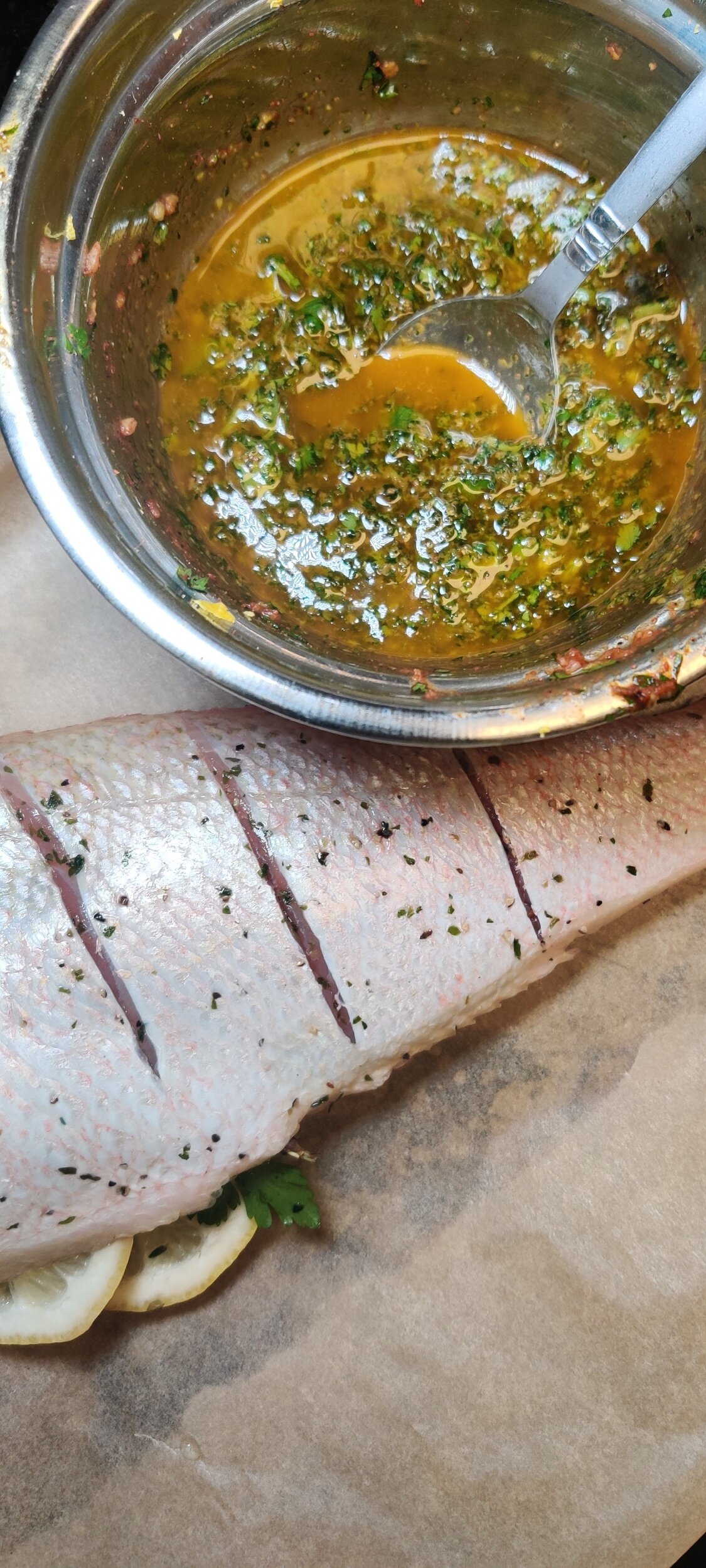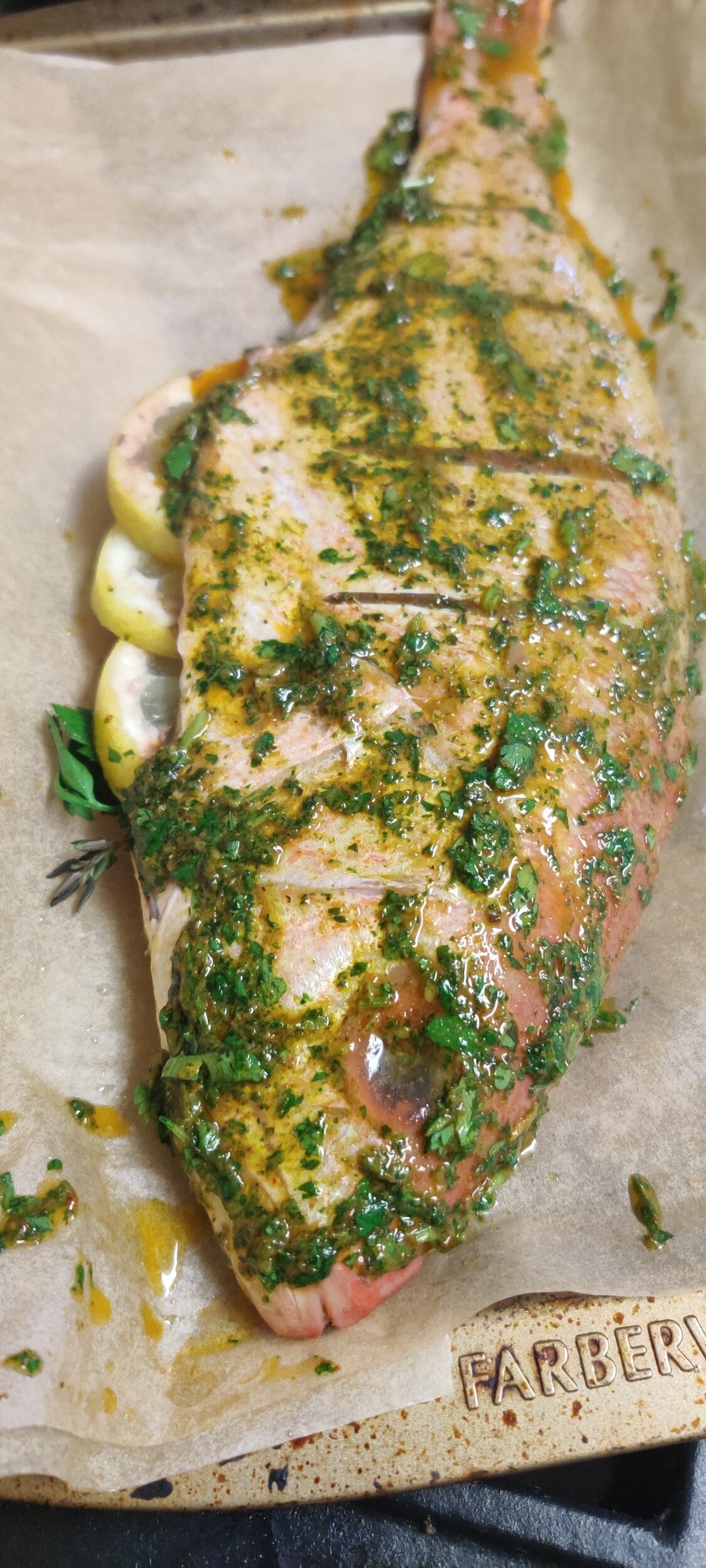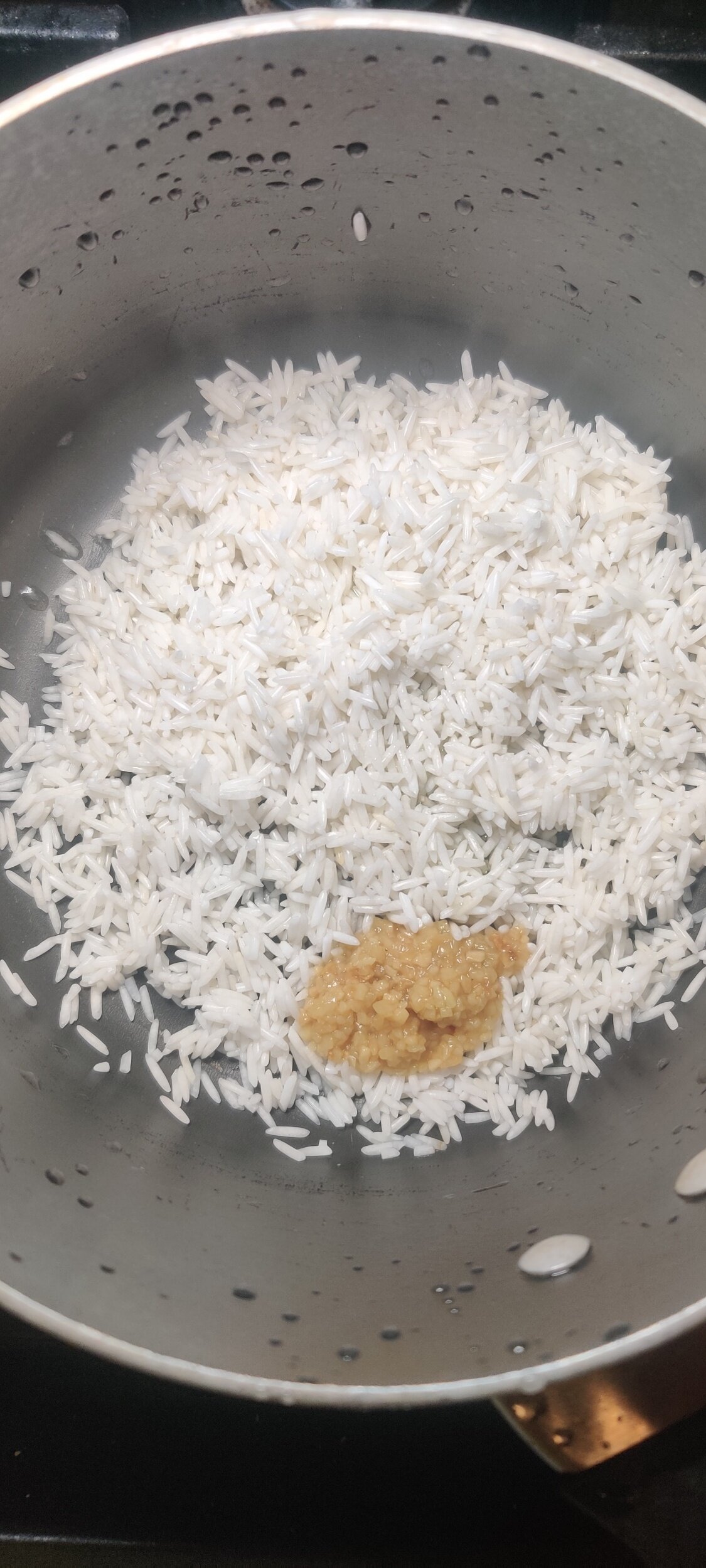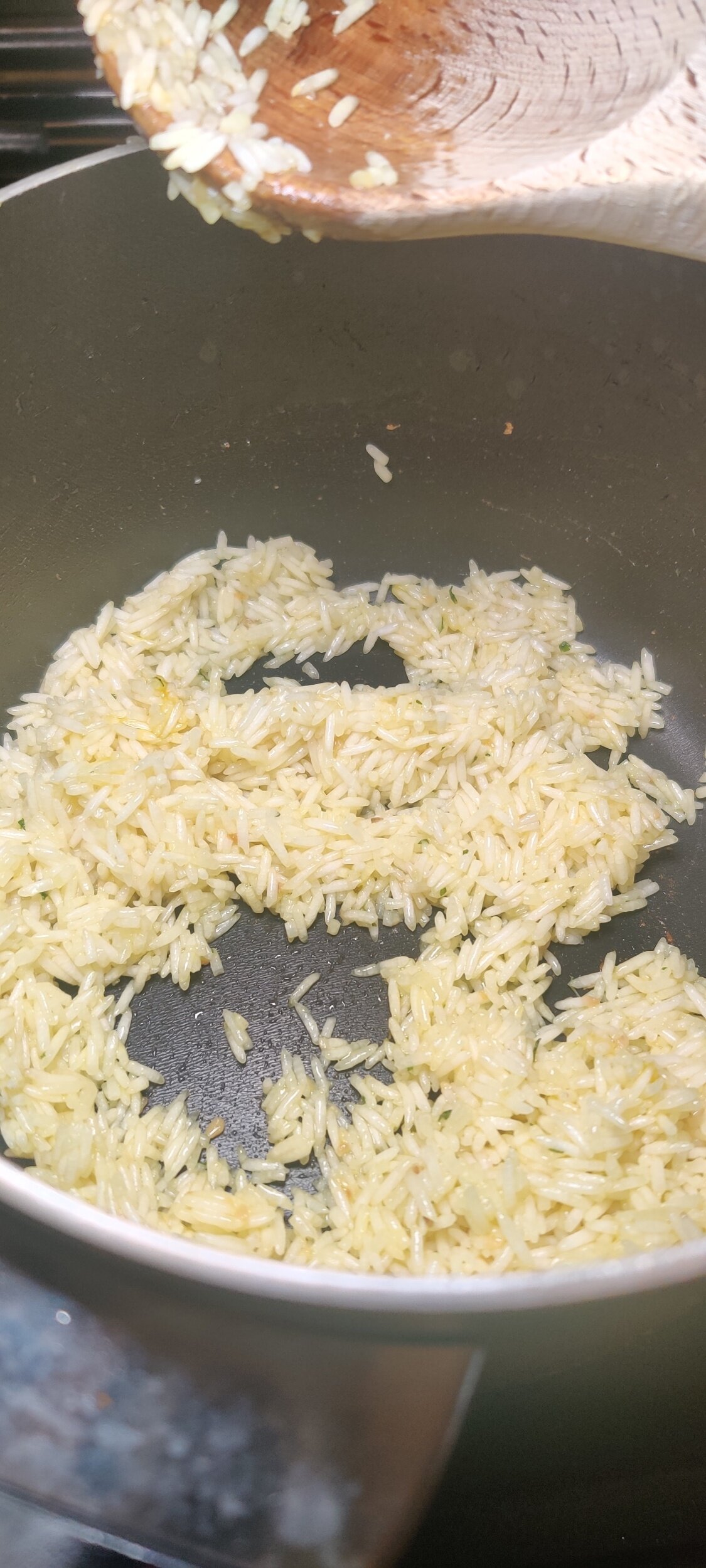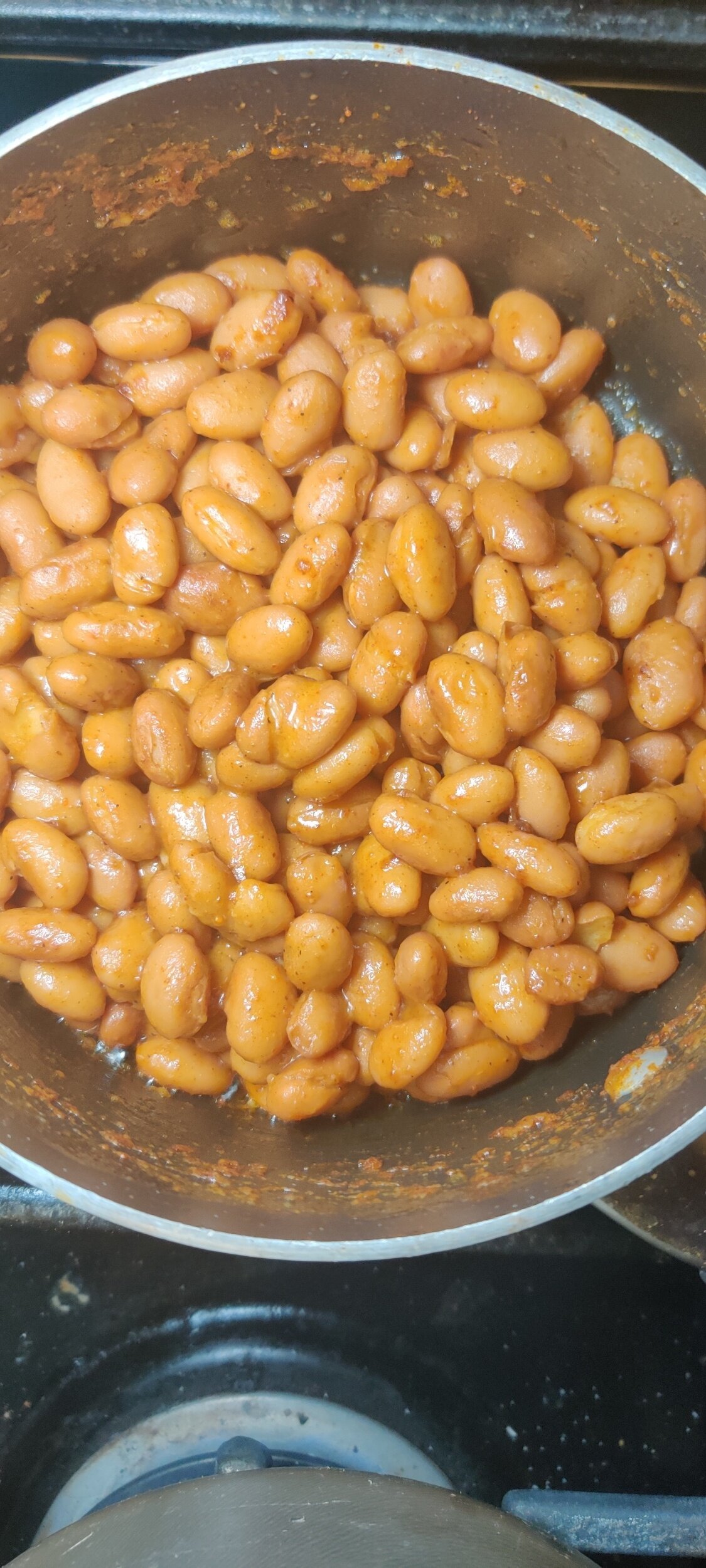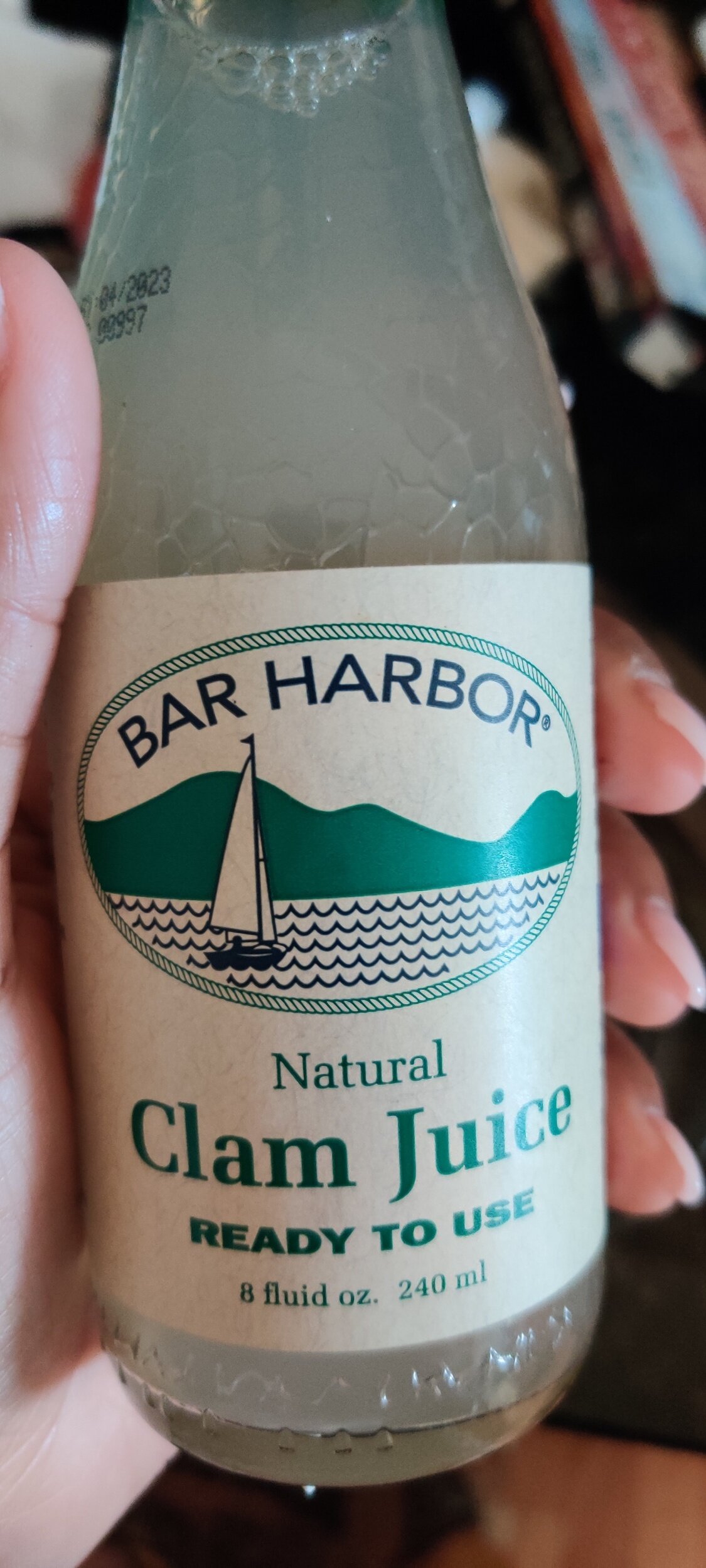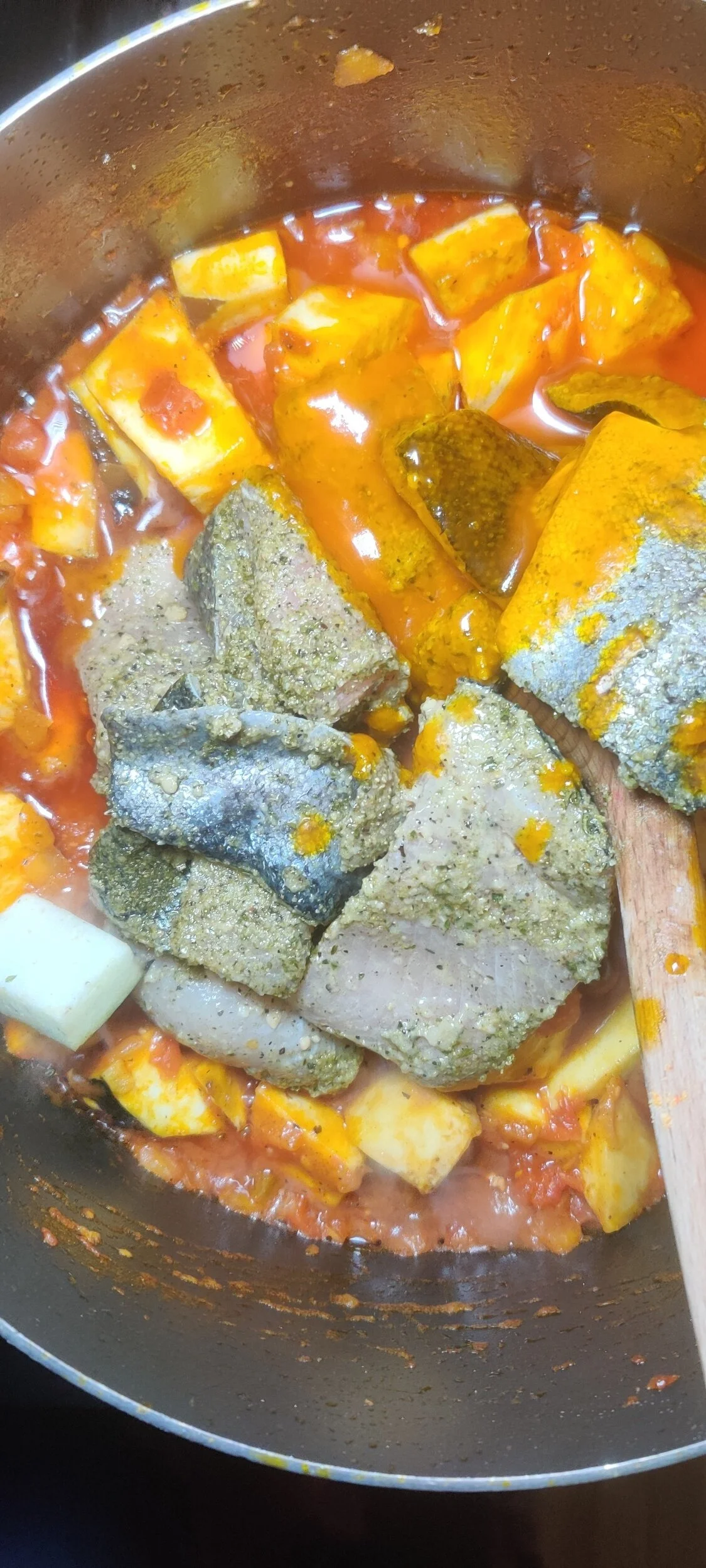Oven-Baked Whole Trout with Herbs and Lemon
Growing up in Zimbabwe, fishing wasn’t just a pastime, it was a way of life. Okay, maybe that’s a tad hyperbolic. It was more like something I had to do on holiday if there was a lake or river nearby. Still, there’s nothing I love more than the thrill of a nibble, the quick jerk of the rod, and that split second of hope that you haven’t been outsmarted by a wise-guy fish.
With that came a deep love for fish, especially the Kariba bream, but also others like trout. From casting lines into serene rivers to tasting the earthy, fresh flavors of fish straight from the water, I learned early on that a simple, whole fish can tell a beautiful story on the plate.
Whole fish is something I’ve always cherished, not only for its taste, but for the connection it creates between nature, tradition, and the kitchen. Over the years, whole fish (with chakalaka) has become one of my favorite meals, and even a signature dish of mine. Not necessarily trout, but this simple recipe is my ode to fish in general. Its tender, delicate flesh, paired with the right seasonings, has the power to transform a meal into a memorable experience.
It’s a tribute to both African flavors and the elegance of simple, fresh fish. I’ve combined aromatic herbs like dill and parsley with the bold warmth of berbere and Robertson’s spice-for-fish seasoning, finished with a splash of lemon for brightness. The method is simple: cook the trout gently, then broil it for five minutes at the end on parchment. The result? Tender, juicy flesh with perfectly crisp skin, a balance that’s hard to resist.
Tips for Perfect Trout:
Freshness is key: Choose trout with bright eyes, firm flesh, and a mild aroma. Fresh fish makes all the difference.
Pat dry thoroughly: Moisture is the enemy of crisp skin. Make sure the trout is well dried before applying your seasoning paste.
Herb and spice paste: Don’t skimp—it infuses flavor into every part of the fish. Rub generously inside the cavity and on the outside.
Watch the broil: Broiling is quick! Keep a close eye to avoid burning while achieving that golden, crispy skin.
Serving Suggestions:
Pair with lightly roasted vegetables like sweet potatoes, bell peppers, or zucchini to complement the spices.
A fresh, tangy salad with avocado, cucumber, and a citrus dressing balances the richness of the trout.
Just before serving, drizzle with a little extra olive oil and a squeeze of lemon for a burst of brightness.
Variations and Fusion Ideas:
Swap trout for other firm, white-fleshed fish like tilapia or bass if needed.
Add chopped chili or smoked paprika for a smoky, spicy kick.
Try a light yogurt drizzle on the side to introduce a creamy element that balances the spices.
This broiled trout is more than a meal, it’s a celebration of fresh ingredients, bold African flavors, and the simple joy of cooking whole fish. (As shown in the video, you can also fillet the fish before serving for a boneless option your family or guests will appreciate.)
Whether it’s a weeknight dinner or a special occasion, this dish shines in both flavor and presentation. By layering herbs and spices and finishing with a quick broil for that irresistible skin, you’ll create something that’s not only visually stunning but deeply satisfying.

Oven-Baked Whole Trout with Herbs and Lemon
A simple, flavorful oven-baked whole trout recipe with herbs, lemon, and a crisp finish, perfect for weeknight dinners or special occasions.
Ingredients
- 1 whole large trout
- 2 lemons
- 1/3 cup spring onions, chopped
- 1/3 cup fresh dill, chopped
- 1/3 cup fresh parsley, chopped
- 2 garlic cloves, minced
- 2 tablespoons berbere spice
- 2 tablespoons spice for fish
- 1 tablespoon butter
- Salt and black pepper to taste
- Chili flakes (optional)
- Olive oil
Instructions
- Preheat your oven to 200°C (4000°F).
- Clean and pat the trout dry. Make a few diagonal slashes on each side.
- In a small bowl, mix spring onions, dill, parsley, garlic, berbere spice, fish spice, salt, black pepper, and a drizzle of olive oil to form a paste.
- Rub the paste all over the trout, including inside the cavity. Slice one lemon and place the slices inside the fish cavity with a small knob of butter.
- Place the trout on parchment-lined baking sheet and cook in the oven until almost done, about 15–20 minutes depending on size.
- Switch the oven to broil and broil the trout for 5 minutes at the end to crisp the skin. Watch closely so it doesn’t burn.
- Serve hot with extra lemon wedges on the side and enjoy the fusion of African flavors with tender, juicy trout and perfectly crisp skin.
I am not a certified nutritionist and any nutritional information on dontmissmyplate.com should only be used as a general guideline.
Homemade Alfredo Sauce with Shrimp
Quick Weeknight Pasta Dishes
After a long day, there’s nothing more satisfying than a quick, comforting bowl of pasta. Whether you’re craving something creamy, hearty, or light and fresh, pasta is a go-to weeknight staple that can be customized to whatever ingredients you have on hand.
Shrimp Alfredo is the ultimate comfort dish—rich, creamy, and packed with flavor. But what takes it to the next level? A homemade Alfredo sauce that’s silky, cheesy, and far better than anything store-bought. Paired with tender shrimp and perfectly cooked pasta, this dish is indulgent yet surprisingly simple to make. Whether you're cooking for a cozy night in or impressing guests, this Shrimp Alfredo is guaranteed to be a hit!
This is the kind of dish most people would not turn down unless they were allergic or on a strict diet. Perfect for a weeknight dinner, the creamy, saucy, rich, flavorful sauce that coats the pasta and sits until the perfectly pan-seared, juicy shrimp is all you need, preferably with a giant helping of fresh vegetables on the side to balance your nutrition wheel out!
Making Alfredo Sauce From Scratch
At its core, Alfredo sauce is a simple yet indulgent blend of butter, heavy cream, and Parmesan cheese. The key to achieving that restaurant-quality richness is in the technique—slowly melting the cheese into the warm cream and butter to create a smooth, luscious sauce that clings perfectly to your pasta. A pinch of garlic, a dash of nutmeg, and freshly cracked black pepper elevate the flavors without overpowering the delicate balance.
One of the best things about Alfredo sauce is its versatility. It pairs beautifully with fettuccine, of course, but also works wonders with shrimp, chicken, or even roasted vegetables. Whether you're looking for a quick weeknight dinner or an impressive dish for guests, this classic sauce is always a winner.
Want to take your Alfredo to the next level? Try experimenting with different cheeses like Pecorino Romano for a sharper bite or adding a splash of white wine for extra depth. However you choose to customize it, homemade Alfredo sauce is a must-have recipe in any home cook’s repertoire.

Homemade Alfredo Sauce with Shrimp
Ingredients
- 1- 1 1/2 pounds jumbo shrimp, deveined with tail on
- 1 1/2 + 1 tablespoon Old Bay seasoning (for the shrimp and flour)
- 1 tablespoon oregano
- 1 teaspoon + 1 tablespoon garlic powder (for the shrimp and flour)
- 2 teaspoons black pepper (one each for the shrimp and flour)
- 1 tablespoon + 1 teaspoon onion powder (for the shrimp and flour)
- 1 cup flour
- 1/4 cup olive oil
- 1 container or packet fettuccine pasta (fresh is preferred)
- 1 teaspoon Royco Usavi Mix or all-purpose seasoning
- 1 tablespoon flour
- 1 1/2 cups grated parmesan cheese
- 3 garlic cloves, minced
- 2 cups heavy cream (you can also use milk or half and half)
- 1/2 cup butter
- 1 teaspoon Worcester sauce
- 1 tablespoon oregano
- 1 teaspoon black pepper
- 1 teaspoon salt
- 1 teaspoon onion powder
- 1 teaspoon cayenne power
- 1 teaspoon smoked paprika
- Chili flakes, cheese and parsley to garnish (optional)
Instructions
- Prepare the pasta according to the package instructions. Once cooked, drain the noodles and toss them in olive oil to prevent sticking. Set aside 1-2 cups of the pasta water for later.
- Prepare the shrimp by patting them dry. Peel and devein the tail-on shrimp, leaving the tails on for flavor and to prevent shrinking. Season the shrimp on both sides. You can keep the shells to make seafood broth, so consider sealing and freezing them for later.
- Season the flour with Old Bay, garlic powder, onion powder, and black pepper. Coat each shrimp in the flour, making sure to shake off any excess to prevent clumping when pan-searing.
- Heat oil in a non-stick pan or skillet, enough to cover at least half the surface of the shrimp. Cook the shrimp in batches for 2-3 minutes per side, ensuring you don’t overcrowd the pan or overheat it. Cook over medium to medium-high heat until the shrimp are golden brown and the coating is crispy. Remove from heat and set aside.
- In a separate pot, melt the butter and add the fresh garlic. Stir in the spices, then add the flour. Continue to mix, then gradually add the cream, remaining herbs, and Worcestershire sauce.
- As the sauce thickens, gradually add the pasta and Parmesan cheese to reach your desired ratio and sauciness. Season to taste, and add a little bit of the reserved pasta water to help bring the sauce together. Bring to a simmer and stir until the desired consistency is reached, but do not boil. This should take no longer than 5 minutes.
- Remove from heat and serve the pasta with the shrimp. Garnish as desired.
Nutrition Facts
Calories
1342Fat (grams)
55.6 gCarbs (grams)
144.7 gFiber (grams)
12.1 gSugar (grams)
15.8 gProtein (grams)
76.3 gI am not a certified nutritionist and any nutritional information on dontmissmyplate.com should only be used as a general guideline.
Baked Snapper with a Quick African Pepper Sauce
At least in its authentic glory, African pepper sauce is commonly served as a condiment, dip or cooking sauce to pair with grilled meats and vegetables or used in stews, giving your dish a perfect balance of heat and depth of flavour. It's most popular in West Africa, but you see other versions of this with other peppers taking centre stage across the Continent. The combination of peppers, herbs, and spices can enhance or top off almost any dish, and it is extremely versatile. I pick this over conventional hot sauce any day because it uses fresh vegetables, and you can make batches to freeze for future use.
This version provides a quick, easy and convenient way to add flavour to your fish. I used red snapper in this recipe, but you can also use halibut, sea bass, bream, tilapia, or any fish with a mild taste that will absorb all the flavours. For the pepper sauce, instead of cooking down and frying the blended vegetables on the stovetop as is typically done, I roasted the vegetables to bring the flavours out before blending them, then used the pepper mix to coat the fish while it baked.
One great thing about this sauce is that you can tailor it to your tastes and tolerance by adding more or fewer tomatoes and peppers. You can also remove the seeds from the hot peppers to take the heat down a notch. I prefer habanero peppers in terms of the heat and flavour, but you can use a range of peppers, from jalapenos to scotch bonnet. In any case, I recommend using the freshest ingredients possible. In addition, especially since peppers are part of the Dirty Dozen, try using organic peppers if you can afford them.
Baked Red Snapper with Quick African Pepper Sauce

Ingredients
- 1 large red snapper
- 1 tablespoon garlic powder
- 2-3 garlic cloves
- 2 lemon slices (optional)
- 1 sprig fresh thyme
- 1 sprig fresh parsley
- 2 teaspoons salt
- 2 teaspoons black pepper
- 2 teaspoon Royco Usavi Mix (optional)
- 2 teaspoons oregano
- 2 teaspoons basil
- 1/2 cup olive oil, and extra for roasting the peppers
- 1 teaspoon salt
- 1/2 teaspoon black pepper
- 1 chicken bouillon cube
- 1/4 cup parsley, stems removed
- 5 large basil leaves
- 1/3 large yellow onion
- 3-4 mini sweet peppers
- 2 small habanero peppers
- 1 1/2 - 2 Roma tomatoes
- 1 inch piece fresh ginger
- Salt and pepper to taste
Instructions
- Place your peppers, onion, tomato, and garlic on a baking sheet with parchment paper—season with salt and pepper to taste.
- Roast the vegetables for 25 minutes at 400F or until roasted to your desired doneness.
- Remove from the oven and allow to cool for 15 minutes, then transfer to a food processor or blender. Add the ginger, parsley, basil, bouillon cube, salt, and pepper. Blend until combined, and a paste forms. Add the olive oil during this process to help smoothen the mixture.
- Set aside while you prepare the fish.
- Make sure your fish is clean, and then pat it dry with paper towels. Add the salt, pepper, garlic, herbs, and optional Royco/all-purpose seasoning.
- Stuff the inside of the fish with the thyme, parsley, lemon and garlic.
- Place the fish inside some foil and place it on a baking tray. Spoon the pepper sauce over both sides of the fish, ensuring it is fully coated.
- Place the fish in the oven and bake at 350F for 30 minutes. After 15-20 minutes, remove the fish, open the foil (without burning yourself with the hot air) and baste the sauce over the fish.
- Leave the foil open and allow the cause to continue cooking. This will help thicken and caramelize the sauce, developing the flavours further.
- Remove from the oven and spoon some sauce into the serving dish, placing the fish on top and adding the rest of the sauce on top. Garnish with fresh parsley and serve!
Notes
- To avoid overcooking the fish, check the internal temperature after 15-20 minutes and use that to determine how much more time you need.
- If you want a thicker sauce, you can place it on the stovetop before covering the fish with it and baking.
- If you get fresh fish from the market, ensure it is cleaned and descaled.
Nutrition Facts
Calories
237Fat (grams)
13.3 gSat. Fat (grams)
1.9 gCarbs (grams)
24.9 gFiber (grams)
6 gProtein (grams)
10.9 gI am not a certified nutritionist and any nutritional information on dontmissmyplate.com should only be used as a general guideline.
Baked Pecan-Crusted Cod with Brussels Sprouts, Squash and Champagne Vinaigrette
Who doesn't love a juicy piece of crusted fish? Very few people, I would bet! More so when paired with the perfect vinaigrette or sauce. I'm a sucker for seafood, no matter the time of the year it is, and autumn is no exception. As I've done with fish and chips before, putting a seasonal spin on your fillets makes for a great addition to the table! Sitting some juicy fillets on a bed of vegetables makes for an easy and nutritious lunch or dinner solution. The pecan and parmesan crust in this recipe gives the fish some extra body and a nutty flair, and the complimentary champagne vinaigrette brings all the flavours together!
Cod Fish
Use boneless, thick white-fleshed fish fillets like cod. These will absorb flavour and can hold well when baked at high heat (or sauteed to crispen up the crust more). You also don't want fish too oily so that the crust remains a bit more intact!
Pecan Crust
Speaking of crust, what nut screams autumn or the impending holiday season more than pecans? Before or after pecan pie, this is always a great combo if you don't have a nut allergy! Particularly on fish and mingled with grated parmesan for some umami; this will add texture and some mouthwatering mildly sweet and nutty undertones.
Brussels Sprouts
Another seasonal vegetable towards the end of the year that is more versatile than people realize is Brussels sprouts! Typically roasted with bacon or garnished with candied pecans, simply tossing them in olive oil, salt, black pepper, and garlic powder on a baking sheet works just as well for a salad base. Peppered with a few pomegranate seeds, and you have your greens set. The shaved version will work the best in this case! You can get them store-bought or grate some whole ones yourself.
Delicata Squash
If anything screams autumn, it's squash. Roasted with a dusting of smoked paprika, ginger, basil and garlic, some delicata squash will complete the salad and add some substance and nutrients. What does it taste like? It's not called the 'sweet potato of the squash family' for nothing!
Dressing
Last but not least, to tie everything together, as with every good salad and quality piece of fish, I used a (champagne) dressing from Dress It Up. Champagne is not only compatible with fish when drinking, but it works well as a condiment or integrated into the recipe itself. Here, you can find out more about Dress It Up in another recipe I tried using their Sesame Tahini Dressing!
Ingredients
2 cod fillets
1 teaspoon salt
1 tablespoon black pepper
2 tablespoons seafood seasoning
1 egg
1 cup all-purpose flour
1 lemon (optional)
Crust:
1 cup pecans
1/2 cup grated parmesan cheese
2 tablespoons dried rosemary
1 tablespoon coarsely ground steak seasoning (equal parts salt and black pepper)
Salad:
12-ounces shaved Brussels sprouts
1/4 cup olive oil
1 teaspoon salt
1 tablespoon black pepper
1 tablespoon garlic powder
2 tablespoons pomegranate seeds
1 delicata squash, sliced into 1 inch half circles, then halved again
Delicata squash séeds (optional):
1 delicata squash’s worth of seeds
2 tablespoons olive oil
1/2 teaspoon salt
1 teaspoon black pepper
1 tablespoon smoked paprika
1 tablespoon garlic powder
1 tablespoon dried basil
1 teaspoon ginger powder
Instructions
In a large bowl, toss the Brussels sprouts with olive oil and seasoning. In another bowl, repeat the same with the cut-up, deseeded squash. Side by side, move both vegetables to a baking tray lined with parchment paper. Bake at 375F for 15 minutes until fragrant, softened and slightly crispy. You may cook the squash a bit longer than the sprouts if necessary.
While the sprouts and squash bake, prepare the seeds, wash and dry, the oil and season. Place them in the oven at 400F for 12-15 minutes until crispy. You can also use an air fryer and adjust the temperature and time accordingly!
In the meantime, take the fish out of the fridge to bring it closer to room temperature.
In a food processor, pulse the pecans, salt, pepper, and parmesan cheese until mostly fine (though you can leave it on the coarser side if you prefer). Set aside in a shallow container.
Season the fish with salt, pepper and seafood seasoning. Prepare two other shallow dishes with the egg (beaten) and the flour for dredging. Take turns and dip each fish in the egg, then the flour, then the pecan crust. You can coat the entire fillet or only the top and bottom of each piece.
In a skillet, melt the butter on medium-low heat. Cook the fillets on both sides until browned, about 4 minutes each. Carefully transfer with a spatula to the oven on a parchment-lined baking tray at 350F for 15-20 minutes, cooking until the fish's internal temperature is at least 180F. You can also skip to the baking once the fish is crusted.
In a large bowl, place the salad. Arrange the squash on top and sprinkle with pomegranate seeds and delicate seeds on top. Place the baked fish fillets on top and serve warm with the champagne vinaigrette.
Island Herb Coconut Pan-Seared Salmon
Whether it's for lunch or dinner, salmon works well for any time of the day or almost any occasion. It's also very versatile in regards to how one can prepare it. I typically bake my salmon, marinated and wrapped in foil for 36 minutes at 350F. That is a fail-safe way to get some juicy, flavourful fish. But what if you want it lightly seared? A thin coat of crispy crust fried in butter or olive oil? That's where this recipe comes in!
You cook the salmon in a nonstick pan, add some vegetables, and finish off in coconut milk and a sauce to add your desired flavour profile. In this case, I wanted a Caribbean flare. Or, more specifically, a herb blend with vinegar, onions, garlic, ginger from one of my favorite kitchen product lines Camella's Kitchen, a Trinidadian women-owned business that makes authentic sauces and blends with flavours from the islands. The Island Herb Blend makes for quite the melody with some help from the fish sauce, soy sauce, and Worcester to bring everything together. If still available, you can get the blend as part of the summer grilling kit; that includes the Spicy Mango Chutney, Trini Roasted Garlic, Hot Pepper Sauce, and Pineapple Chow Pepper sauces. I used two sauces to make this Pineapple Chow Black Seabass with Salsa and Goat Chorizo Samosas with Tomato Mango Chutney. Or, try the fall kit, which includes the Island Herb Blend plus some autumn flavours like pumpkin and apple spice, which I've also used to make this Spicy Pumpkin Mushroom Skillet Pot Pie and Spicy Apple Muffins with a Cider Glaze.
In a short space of time, you'll get some delicious flavours that can be absorbed with some rice/grain or enjoyed as is.
Ingredients
2 salmon filets with skin
1/2 cup cononut milk
1 tablespoon fish sauce
1 cup cherry tomatoes
1 teaspoon fresh ginger, grated
1 tablespoon Worchester sauce (optional)
2 tablespoons soy sauce
1/2 large red bell pepper
1/2 yellow onion
1/4 cup spring onion + extra tips for garnish
2 tablespoons butter
2 tablespoons seafood seasoning
1 tablespoon garlic powder
1 tablespoon salt and pepper (steak seasoning)
1 tablespoon dried basil
2 tablespoons fresh cilantro
2 tablespoons Island Herd Blend from Camella’s Kitchen
1 cup bok choy
3/4 cup brown mushrooms
Dried or fresh parsley
Lemon wedges
Add butter to a nonstick pan on medium-high heat and sear the salmon fillets skin side first for 4-5 minutes on each side. For thicker fillets, flip the fish on its sides and sear for about 2 minutes per side. Season the fish with one tablespoon seafood seasoning, salt and pepper, and garlic before flipping over.
While the fish cooks, remove the stems from the bok choy, roll, and chop the leaves into shreds. Chop the green onion, setting aside some tips for garnish.
Remove the fish and set it aside. Add the onion and pepper and sweat for about 2 minutes. Add one tablespoon seafood seasoning, basil, ginger, mushrooms, green onion, tomatoes, and cook for an additional 2 minutes.
Chop the cilantro and add to the pan and cook for another minute, mix well.
Nestle in the salmon, add the bok choy and coconut milk, mix everything around the fish, add the Island Herb Blend, soy sauce, and fish sauce, and make sure all the pan's contents are well combined.
Reduce heat and simmer for 15 minutes, stirring at regular intervals to ensure the sauce doesn't stick to the pan and cooks evenly. You can also check the temperature of the fish (salmon should be 145F to be safe to eat in the thickest part and firm when done).
Season to taste with extra salt, pepper and Worchester sauce if more umami is needed and cook for the appropriate additional time.
Garnish with green onion tips, parsley and lemon. Serve hot with rice or grain of choice.
Pineapple Chow Black Seabass with Salsa
Summer is all about enjoying fruit in all forms, folded into or layered between a cake, filling an open-face pie, grilling, or chopping into a flavourful salsa or chutney to accompany spicy fish!
Pineapple is high up on that list. I was inspired to put together this recipe not only because I love whole fish, whether baked, grilled, roasted, fried, or steamed, but because I got an excuse from Camella's Kitchen. I've raved about their products in the past. The small business is women-owned, operates in Maryland, and celebrates the bold flavours of the Caribbean, or more specifically, Trinidad. Their pineapple chow pepper sauce came just in time for the summer. I used it to marinate the fish and spice up the 'pineapple chow' salsa. This dish can be served with a healthy grain such as couscous or farro, grilled vegetables, or in this case, bean fritters. I wasn't familiar with pineapple chow until this point. It's pineapple spiced with chillies and/or chilli sauce, garlic and cilantro often enjoyed as a beach snack. Since fish goes well with salsa, this pairing made total sense with a few additions!
To add another layer of tropical flavour, I wrapped and baked the sea bass in banana leaves. This not only helps keep the fish moist, but it also adds to the presentation and imparts a herby flavour.
Ingredients
1 whole (black) sea bass, cleaned
1 long piece of banana leaf to wrap the fish (cut more sheets if you necessary)
4 slices lemon
1/4 cup Camella’s Kitchen pineapple chow pepper sauce
1 tablespoon minced garlic
2 tablespoon Worchester sauce
1 bouquet garni (bunch of fresh basil, thyme and sage)
1 cup olive oil
1/3 cup white wine vinegar
1/8 cup mirin or white wine
1/4 cup shallots, finely chopped
1/2 large yellow onion, sliced thinly
1 teaspoon all-purpose seasoning (I used Aromat)
1 teaspoon seafood seasoning
1 teaspoon black pepper
1 teaspoon lemon juice
1 teaspoon fresh ginger, grated
Salsa:
1 tablespoon Worcester sauce
1 teaspoon coconut sugar
1 teaspoon lemon juice
1 cup pineapples, diced
1/2 large red bell pepper, diced
1 teaspoon garlic, minced
1/3 cup red onion, diced
1 teaspoon Camella’s Kitchen pineapple chow pepper sauce (use more or less depending on heat tolerance)
1 teaspoon red wine vinegar
2 tablespoon cilantro or parsley, finely chopped
Instructions
Marinate your fish the day before. In a large bowl, whisk the shallots, garlic, olive oil, vinegar, mirin, lemon juice, ginger, lemon zest, Worchester sauce, pineapple chow pepper sauce, and seafood and all-purpose seasonings, mix well.
Season the fish with salt and pepper after making light, shallow scores along the skin (this will let in more flavour). Stuff the fish with two lemon slices, some onion slices, and the fresh herbs.
Place it in a shallow glass dish and pour the marinade over it, trying to make sure it is mostly submerged—refrigerate overnight or for at least four hours.
The next day, turn the oven on to 375F. Transfer the fish to a foil-lined baking tray on top of the banana leaf. Roll it over twice and allow the weight of the fish to hold it down. Bake the fish for 25 minutes or until the thickest section flakes easily, turning the tray halfway through the cooking time. You can also check the internal temperature with a kitchen thermometer - an internal temperature of at least 135F minimum is recommended for safety levels.
While the fish is baking, make your salsa. In a small bowl, mix all the ingredients, then chill for 10 minutes.
Remove the fish from the oven and serve with the salsa.
Coconut Salmon Chowder
Chowder is a considerable part of New England cuisine. Along the Northeast coast and beyond, from Maine (where I was inspired to make this recipe) to Rhode Island, which makes sense; of course, it's an affordable way to get filled up, and you can customize the soupy stew to be whatever you want it to be. But, most simply, a combination of vegetables and protein in a rich, creamy broth or milk-based mixture thickened with crackers and potatoes. If you are already a chowder fan, I have another version you can check out here with sweet potato and corn.
I used salmon, which is plentiful in our household, to make fish chowder for this version. When I visit Maine, clam chowder was the most prominent, but you can use almost any fish or ocean dweller for traditional seafood chowder.
Even with a creamy broth, there is a danger of chowder falling flat. So how do you prevent it?
Taste, taste, taste.
Make sure you add seasoning and taste constantly. Salt, pepper, fresh and dried herbs, whatever compliments your set of ingredients. In this case, salt and pepper and perhaps a little bit more Old bay should do.
Season the star of the show.
Whatever ingredients you want to highlight in your chowder, make sure it's seasoned! This step can make all the difference. In this case, it's the salmon which I pan-seared and seasoned it with salt, pepper, Old Bay, olive oil, and soy sauce. Even if you use canned salmon, taste and adjust before adding to the chowder.
It pays to use rich stock or broth.
Most importantly, use a good quality broth or stock! This will be a game-changer for your chowder. If possible, use a homemade helping. Consider adding some parmesan cheese when adding the cream or bacon with the carrots and celery for even more flavour. You could also use bouillon cubes as an alternative.
Enjoy this recipe as a starter or side, with some additional crackers or fresh, toasted bread.
Ingredients
2 tablespoons olive oil
2 tablespoons butter
2 tablespoons flour
1 1/2 cups pan-seared/cooked salmon
1 teaspoon salt
1 tablespoon black pepper
1 tablespoon Old Bay seasoning
1 cup chopped carrots
3 garlic, minced
1 cup chopped celery
1 cup chopped onion
1 QT seafood stock or broth
1/2 cup coconut cream
1/2 cup coconut milk
1 cup sweet corn kernels
1/4 cup + 2 tablespoons fresh dill
2 tablespoons cornstarch
4-5 crackers, roughly crushed
1 Russet potato, peeled and diced
Instructions
Prepare your salmon if you don’t have it set aside already.
In a large pot, melt the butter with olive oil. Saute the garlic until fragrant, for about 2 minutes. Bloom the seasoning for about 1 minute, stirring.
Add the onions and cook until transcalent, for about 3 minutes.
Add the carrots, celery, and dill, sweat out for about 4-5 minutes until the vegetables begin to soften. Add extra oil if necessary.
Mix in the diced potato and flour, cook for about 2 minutes. Pour in the stock or broth, coconut cream, and coconut milk. Bring to a boil, then simmer for 20 minutes. Make sure the potatoes are soft to the bite (but not falling apart).
Stir in the salmon, corn, and crackers, heat for about 1-2 minutes before serving hot with crackers or bread. You can add a dollop or splash of cream and fresh dill to garnish.
Roasted Veggie Sheet Pan with Pan Seared Salmon
This recipe is part of a two-part 3-course meal menu. Start off with this Avocado and Strawberry Salad.
It doesn't get any more classic for dinner than a sheet pan with roasted vegetables, served with protein. You can choose to bake your salmon, but I wanted mine pan-seared with butter sauce!
Vegetable sheet pans are great during the week or whenever you are in a hurry but want something quick and delicious. You can also customize them and throw in a combination of anything you like.
If you are looking to pair your veggies with a protein, nothing beats a juicy fish fillet, in my opinion.
As for the vegetable selection, I used a number of my favourites, but of course, included red for a romantic valentine's flare given the timing in this case. Either way, you are getting a healthy selection of vitamins, antioxidants, and protein. If you are worried you won't get filled up, trust me, you will! The best part of it is you won't feel bad about an indulgent dessert.
Ingredients
2 salmon fillets with skin on (if you want to make it 4, double up the recipe accordingly)
4 tablespoons butter plus extra for butter sauce
Fresh thyme sprigs
2 tablespoons fresh garlic, minced
1/2 teaspoon salt
1 tablespoon old bay seasoning
1 teaspoon fish spice
1 tablespoon black pepper
2-3 tablespoons olive oil
Vegetable sheet pan:
1/4 cup olive oil
1/2 head cauliflower, chopped
1 fennel bulb, sliced thinly lengthwise
1 bunch tomatoes on a vine
2-4 red potatoes, quartered
1/2 red onion, sliced thinly
4-6 red chilli peppers
2 red bell peppers, decored and sliced
2 tablespoon sherry
2 tablespoon Worchester sauce,
1 tablespoon coriander
1 teaspoon paprika
1 teaspoon fenugreek powder
1 tablespoon garlic powder
1 teaspoon cumin
Instructions
Get your vegetables cooking. Be sure to inspect and wash them, then remove excess water - you can use a salad spinner or a regular colander, then blot with some paper towels.
In a large bowel, add the prepare vegetables.
In a small bowl, combine the olive oil, sherry, Worchester sauce, garlic, salt, black pepper, coriander, paprika, fenugreek powder, and cumin. Whisk until evenly mixed, then pour over the vegetables. Toss and stir gently with a wooden spoon to evenly coat the veggies, then set aside for 10 minutes.
On a large baking pan lined with parchment and sprayed with cooking oil, layout your vegetables - colour coordinate to make it visually appealing! Bake in the oven at 350F for 30 minutes, checking periodically to turn over veggies to make sure they cook evenly on both sides and to the appropriate doneness - try not to overcook.
While your vegetable sheet pan is in the oven, cook your salmon. (If you decide to bake your salmon, you can out the fillets in the oven with the veggies).
Blot with paper towels to dry the surface to remove excess moisture - this will help you get a nice crispy sear. Season the fish with salt, pepper, garlic powder, fish spice, and old bay seasoning.
In a non-stick pan, add the oil and heat on medium heat. Place the salmon skin down, cooking 5-6 minutes. Add the thyme, but garlic, then turn over the fillets.
Cooking for 2 minutes, then get to spoon and baste with butter sauce to finish cooking it for another 3 minutes. Remove from heat when cooked to your preferred doneness - at least 145F or flaky when you open along the grain with a fork - be sure to check the thickest part of the fillets.
Add a little more butter to the pan once the fish is removed to make more sauce, pour over the fish when ready to eat.
Serve hot with the vegetables and the remaining butter sauce.
Cauliflower Kedgeree with Farro and Raisins
The funny thing about this dish is that I first head about it on the Netflix show The Crown in Season 4 when Margaret Thatcher was making dinner. The British dish is connected to its colonial past, inspired by an Indian/South Asian dish known as khichuri among other names, which is sometimes served with fried fish.
Typically the dish has curried rice, spices, smoked fish, heavy cream, fresh parsley, herbs, and boiled eggs - sometimes with peas and raisins added in.
Kedgeree is considered a brunch dish more than anything, but I ate mine both for lunch and dinner! It also makes for a great side dish for a table full of guests looking for something savoury.
Since khichuri is rice mixed with lentils, I decided to add in another grain - farro. It has plenty of health benefits, including fibre and protein. I also switched out the regular rice with cauliflower rice to make for a lower-calorie dish - but you can use regular rice if you prefer!
The smoked whitefish adds rich flavourful undertones that compliment the rice and are absorbed by the rice, and the butter and cream make it an undeniable comfort food of sorts.
Once you make it, it will likely become a quick and easy staple in your home, enjoy!
Ingredients
16 ounces frozen cauliflower rice
8 ounces uncooked farro
1/4 large yellow onion, diced
1 tablespoon fresh garlic, minced
2 tablespoons fresh parsley (keep half to garnish)
2 tablespoons rice seasoning (I used Roberston’s Spice for Rice - optional)
1 tablespoon Aromat spice (optional)
1 teaspoon salt
1 tablespoon black pepper
1 tablespoon coriander
1 teaspoon cumin
1/4 cup coconut cream or heavy cream
3 chicken broth sachets
2 tablespoons curry powder
1 teaspoon turmeric
1/4 cup raisins
1/2 lb. smoked white fish
3 tablespoons butter
1 tablespoon peanut oil
3 eggs
Instructions
Place the eggs in a medium pot submerged in water for about 10-12 minutes. Removed from heat and set aside with the lid on top. They should be hard-boiled after that, reduce the time for softer yolks.
In another pot, place the farro grains in boiling water with two sachets of broth. Follow the instructions on the box or boil the farro for about 30-35 minutes until softened and cooked through. Drain the water, set aside.
While the farro is cooking, soak the raisins to rehydrate them - they will go from being dry to plump and juicy.
In a large pan, sauté the chopped onion and garlic in the oil and butter until fragrant, and the onion begins to soften - about 2-3 minutes. Add all the spices and one tablespoon of the parsley. Cook for another minute to coax the flavours out - this is called blooming!
Prepare the cauliflower rice according to the package - you can also grate fresh cauliflower and lightly sauté in olive oil with salt and pepper. Close the pot or pan with a lid and allow the cauliflower rice to steam for about 5 minutes then set aside.
In a large bowl, mix the drained cauliflower rice, farro and raisins. Remove the bones from the smoked fish and break the fillet up into small pieces. Mix those in and save a bit for topping.
Add in the cream, and simmer the kedgeree for about 10 minutes with the lid on top. To prevent burning the bottom of the pot, add a little bit of water or broth.
Season to taste and transfer to a serving dish. Garnish with the halved or quartered eggs, fresh parsley and extra smoked whitefish.
Eat immediately, especially if using cauliflower rice - it’s best when used in the following day or two in a sealed container in the fridge, or frozen.
Tip: If reheating the eggs, make sure you cover them in the microwave, in case they explode.
Fish Tacos with Acorn Squash and Brussels Sprouts
Who doesn’t love tacos? Taco Tuesday is a huge thing in my household, and one of my favourite tacos are fish tacos. I don’t mean a bit bits of pieces coated in breadcrumbs, I’m talking a whole grilled or pan-seared fillet. This ensures you get a good dose of protein and makes the fish the star of the show along with anyother sauces you serve the tacos with. This is the second in a set of meals using MSC Bluefish certified hake. I got the fillets from Walmart in the frozen seafood section, but it’s wild-caught and sustainably fished. I made a recipe with the recipe fillet, here.
If you’re a conscious eater like myself and want to make the best decisions for your body and the environment, check out this shopper’s guide and check out my Instagram page!
I wanted to make these seasonal and so used fall vegetables to serve as a side along with the tacos or incorporate them into the taco as your plate.
Brussels sprouts are filling, delicious and nutritious and were my first choice for greens to add to the tacos. Make sure when you are preparing them that you cut them sprouts into quarters, this will make them easier to eat and help prevent breaking down the tacos.
As for the gourd, I used acorn squash because I like the mild taste to help focus on the fish and the shape, but you can use butternut squash diced into bite-sized pieces.
Is hope you enjoy these fall inspired tacos.
Ingredients
3 full hake fillets, thawed
2 tablespoon fish spice
1/2 teaspoon salt
1 tablespoon black pepper
1 tablespoon lemon or lime juice
2 tablespoons + 1/4 cup olive oil
1 teaspoon dried parsley
1 teaspoon Italian seasoning
1 tablespoon garlic powder
Cooking spray
Fall vegetables:
1 small acorn squash
1/4 cup dried cranberries
1 cup brussels sprouts
1 teaspoon salt
1 tablespoon black pepper
1 teaspoon fenugreek powder
1 teaspoon cumin
1 tablespoon garlic powder
1 teaspoon cinnamon
2 tablespoons cooking wine
2 tablespoons soy sauce
1/4 cup sweet potato nectar (or natural sweetener)
Herbed garlic butter sauce:
2 tablespoons fresh dill
2 tablespoons fresh cilantro
2 tablespoons butter
1/2 teaspoon salt
1 teaspoon black pepper
1 teaspoon garlic powder
Flour tacos
Instructions
Season your thawed fish fillets. Pat them dry with paper towels first, especially the skin to make sure you get a crispy texture when you fry them. Brush or drizzle with 2 tablespoons of olive oil and lemon juice on both sides of the fish.
In a small bowl mix your spices and season all the fillets evenly. You can rub on the blend with your hands.
While your fish soaks in the flavours, prepare your vegetables. Slice the acorn squash in half, and remove the seeds and fibres. Slice into 1 inches pieces.
Slice and quarter the Brussels sprouts, add both vegetables to a large bowl. Add all the seasoning, cranberries, soy sauce, cooking wine, sweet potato nectar and olive oil. Mix until everything is evenly coated.
Place the veggies on a baking sheet with parchment paper (cover entirely to prevent burning from the running juices). Bake at 400F for about 30 minutes, carefully turning over the pieces every 10 minutes until the acorn squash has softened and the Brussels sprouts are cooked through.
Heat the 1/4 cup olive oil and fry the hake fillets skin down for about 5 minutes. Flip over carefully and cook until the fish is opaque and white, with crispy skin, about 3 minutes. Remove the fillets from the pan, set aside.
Add the butter, salt, pepper, and chopped herbs to the pan to make your sauce with all the remaining bits and juices from the fish. Stir until everything is well mixed, set aside.
Char your flour tacos for about 15 seconds on each side Directly on the stovetop.
Assemble your tacos! Place the fish fillets and vegetable on top of your tacos and brush the hake with the butter sauce. Serve with fresh cilantro, remoulade sauce, feta, avocado and corn!
Seared Hake with Mofongo Irio (Mashed Plantains with Corn & Peas)
There's nothing like a crispy piece of fish, especially when it’s wild-caught. I was inspired to put this together by MSC Bluefish, a non-profit organization that seeks to protect the oceans by advocating for sustainable fishing practices and educating people on the importance of conscious consumption in a world where our food choices have a huge impact on the environment and food security.
To learn more visit their website, and download their new guide to help out when you are shopping! https://www.msc.org/en-us/what-you-can-do/blue-fish-guide
I got my hake fillets at Walmart, but you can find MSC Bluefish labelled products at several grocery stories - tinned, fresh, frozen, in a wide price range that can accommodate your budget.
I love hake, it’s a tasty but mild fish you can pair with almost anything. With the skin on, you can get some great flavours.
I paired the fish with a fusion side dish. One dish is considered Puerto Rican, the other Kenyan. If you're a stickler for traditional meals, this isn’t for you! Experimenting in the kitchen and trying new things can teach you a lot and greatly improves your cooking skills and overall knowledge. This worked out, so I wanted to share the recipe!
Mofongo is fried plantain mashed with garlic, salt and olive oil to be formed into a ball used to eat. Typically you add bacon bits or pork rinds crushed in with a pestle and mortar. I tried it for the first time in New York at a Cuban restaurant with shrimp, and it was delicious! It's origins link back to fufu which was brought by Africans to the Caribbean in the Spanish colonies.
As for irio, that’s a side dish popular in Kenya consisting of mashed potatoes, corn, and peas. I switched out the potatoes for mashed plantains, with the addition of the garlic and voila, a side dish to compliment the crispy-skinned hake! If you like mashed potatoes and as a side for your fish and favour the taste of plantains, the 'mofongo irio' will be a delightful side to your dish!
Ingredients
Seared hake:
2 whole hake filets, with skin on, thawed (I got the MSC Bluefish-certified frozen pack)
1/4 cup vegetable oil
1 teaspoon salt
1 tablespoon black pepper
1 tablespoon fish spice
2 tablespoons lemon juice
1 egg
1/3 cup breadcrumbs
Mofongo irio:
2 large plantains, ripe
1/4 cup green peas, frozen
1/4 cup sweet corn kernels, frozen
1 teaspoon salt
1 tablespoon black pepper
1 teaspoon fenugreek
1 tablespoon garlic, minced
1/3 cup olive oil
Sautéed greens:
1 cup kale, chopped
1 tablespoon olive oil
1/4 teaspoon salt
1/2 teaspoon black pepper
Instructions
Season the fish with the salt, pepper, fish spice and lemon, set aside. Slice the fillets in half for more manageable pieces, but be careful not to rip the skin.
Get two shallow dishes - add the beaten egg to one and the breadcrumbs to the others. Place the fillets skin side up first in the egg, then the breadcrumbs to add a light coating.
In a hot a skillet, cook the fish in the vegetable oil. Put the fillets skin down, and fry for 3-5 minutes until the skin is crispy, then turn over to finish cooking. Remove from the fish skillet but keep all the juices and bits in the pan, set aside.
Peel and slice your plantains about 1 inch in thickness. If your plantains are not so ripe, you can boil them until they start to soften. If they are quite ripe, they will be ready to fry immediately.
Add the olive oil and garlic to the skillet and fry the plantains. Season with salt, pepper and fenugreek powder on medium-low heat until the plantains have softened, and are slightly crispy and goldish, about 5 minutes. Place them on a paper towel to remove excess oil once they are done.
Return to the skillet, add the peas and sweet corn. Cook for another 3-5 minutes to get the peas and corn some flavour.
Remove from heat and using a potato masher, press down on the mixture until a mashed potatoes consistency forms - you can leave a few pieces partially whole for texture. If you have a pestle and mortar, you can also transfer the mixer and use that instead!
Prepare your kale. In a small saucepan, saute the leaves in the oil with salt and pepper until wilted, but don’t overcook.
You can also make some chermoula as a sauce for the fish, but the sauteed kale, juicy fish, and moist mofongo irio mash is enough. Find my recipe for the seafood accompaniment, here: https://www.dontmissmyplate.com/how-to-cook/2020/6/30/chermoula-red-snapper-peanut-butter-rice
Now time to plate your dishes! Using a measuring cup, shape the mofongo irio into a dome shape. Place about a tablespoon of the kale on top, then set your crispy, juicy hake on top. Repeat for the desired number of servings. Serve with avocado and lemon, enjoy!
Makai Paka Fish Pie
I’ve mentioned several times before that although I cut back on meat consumption with plans to be completely vegan, I still occasionally eat fish and seafood. What says fall better than a hot, flavourful stew pie? I grew up on both and wanted to share a delicious meal to celebrate them and keep you cozy.The recipe is a combination of two different dishes.
As the weather gets cooler many of us will be seeking out pie recipes. One of the most scrumptious in my humble opinion is fish or fisherman's pie. The flavours the white fish absorbs, muddled with vegetables and a white sauce, topped with creamy, baked mashed potatoes make for the ultimate, mouthwatering treat. Fish pie is similar to the well-known
shepherd's pie. Some classic renditions call for the addition of boiled eggs and shrimp. No need for pastry!
Why not spice things up to make your fish pie extra special?
For this, I turned to a Kenyan preparation of mealie Cobb, also known as makai paka, cooked in coconut milk and spices. Instead of whole mealies, of course, I used corn kernels. It's a popular dish in the South Asian community in Mombasa and across East Africa.
This makes for the kind of meal you'll be happy to serve your guests or present at the Family dinner table. I hope you enjoy it!
Ingredients
Fish stew:
1-2 pounds tilapia fillets (or any boneless white fish)
1/2 cup frozen corn kernels
2 tablespoons mustard
2 tablespoons lemon juice
2 tablespoons soy sauce
3 tablespoons olive oil
1/4 cup frozen peas
1/4 cup leeks, diced
1 can coconut milk
1 tablespoon tomato paste
1 tablespoon Madras curry powder
2 tablespoons black pepper
2 teaspoons salt
1 teaspoon turmeric
1 teaspoon coriander
1/4 cup parmesan cheese
1/3 cup scallions
2 tablespoons fish spice
1 tablespoon dill
1 tablespoon minced garlic
1/4 cup red onion, chopped
2 tablespoons butter
1 jalapeno, diced
1/3 cup crushed tomatoes
2 heaped tablespoons tomato paste
Mashed potatoes:
3 russet Potatoes
1/4 cup coconut cream
2 tablespoons butter
1/4 cup grated parmesan
Salt and pepper
Fresh coriander, scallions or chives to garnish
Instructions
Prepare the fish. In a shallow dish, season the fillets with 1 teaspoon salt, 1 tablespoon black pepper, 1 tablespoon olive oil, dill, lemon juice, soy, and 1 tablespoon fish spice. Set aside to marinate.
Prepare the mashed potatoes. Boil the potatoes in water until they are soft, about 20 minutes, fully submerged in a large pot. Using a potato masher, crush the potatoes with the butter, parmesan, and coconut cream until smooth. Season with salt and pepper and set aside.
In a large skillet or non-stick saucepan, sauté the jalapeno and green onions in the butter, garlic and olive oil for about 2 minutes, mix in the flour and cook for another minute. Add the red onion, leeks, and spices, cook for about 3 minutes, until fragrant.
Add the tomatoes and tomato paste, sauté for 2-3 minutes. Add the coconut milk, corn, mustard, and peas, reduce to simmer for about 5 minutes. Add the fish pieces, simmer for another 2-3 minutes before transferring to a sprayed baking dish.
Spoon the mashed potato on top and create a pattern with a fork if desired. Bake at 400F for 25-30 minutes. Rest for 5-10 minutes and serve hot with a side salad.
Pecan-Crusted Fish with Sweet Potato Chips & Apple Slaw
Fish and chips is one of my go-to dishes when I decide to be pescatarian for the day. I always find it interesting that most menus don’t offer a different take on the staple. It seems to me there are many ways you could serve fish and chips! I stuck to the traditional equation but made a few tweaks and additions to adhere to the current season - autumn.
Coleslaw, along with tartar sauce, is notably the most common side for fish and chips, but I grew up eating it with everything from roast chicken to grilled pork chops. I simplified the salad, adding apples to the mix I recently picked myself (yes, autumn in Maryland is all about visiting orchards). You can still add carrots and green cabbage. I prefer purple cabbage because it’s slightly softer and sweeter.
As for the chips, I used sweet potato. They are more nutritious than regular potatoes and taste better, in my opinion. As we move into the colder weather, sweet potato recipes will be featured more often, and I’m here for it!
For the fish, I used branzino, which, like cod, is mild and sweet. That means you can soak it up with some flavour. I like fried fish with some good old fashioned beer batter, but this recipe takes a detour! I used crushed pecans--another fall favourite--for texture and a nutty flavour for the crust after seasoning the fish.
This recipe is great for a filling, flavorful, lunch or light fare dinner depending on how hungry you are. If you are hosting a crowd, they will be most happy!
Ingredients
1 branzino fillet
1 tablespoon dill
1/3 cup + 1 tablespoon pecans, finely chopped
2 tablespoons olive oil + extra for chips
1 tablespoon fresh garlic
2 tablespoons salt
1 1/2 tablespoons black pepper
1 tablespoon soy sauce
1 1/2 tablespoons lemon juice
1/2 a large apple
1 cup shredded red cabbage
2-3 tablespoons mayonnaise
1 egg, beaten
2 tablespoons milk
2 tablespoons fish spice
1/8 cup bread crumbs
1 large sweet potato
2 tablespoons cornstarch
1 teaspoon brown sugar
1 tablespoon Old Bay seasoning
2 teaspoons garlic powder
Fresh thyme
Cream or tartar sauce
Instructions
Prepare your slaw. Chop your apple into thin match sticks and mix with the red cabbage in a medium-sized bowl. Add the mayonnaise, 1 tablespoon pecans, 1 tablespoon olive oil, 1 teaspoon lemon juice, 1/2 teaspoon salt, 1 teaspoon black pepper, and 1 teaspoon garlic powder. Toss until everything is evenly coated, set aside in the fridge.
Slice the potato thinly (not too thin or else they will burn easily). Soak the slices in water for at least 1 hour to remove excess starch and maximize crispiness. Drain and dry completely with a kitchen towel. In a bowl, toss the potatoes in the cornstarch, drizzle with some olive oil, then add the Old Bay, 1/2 teaspoon salt, 1 teaspoon black pepper, 1 teaspoon garlic powder, and brown sugar until evenly coated. On a parchment-lined baking tray, lay out the slices. Bake at 425F for 15 minutes, spray with some cooking oil then flip them over. Watch closely to make sure the chips don’t burn!
While the chips bake, season the fish with the fresh garlic, 1 teaspoon salt, 1 tablespoon lemon juice, the soy sauce, 1 tablespoon black pepper and fish spice, set aside.
Add the milk to the egg and beat well. Coat the fish, then press the fillet into the breadcrumbs and pecans in a shallow plate. In a skillet on low-medium heat, sear the fish. Start with skin side first (if present), then after about 6-8 minutes carefully flip over. Cook for another 5-7 minutes until the fish is flakey and opaque.
Garnish with fresh thyme and serve the fish immediately with the sweet potato chips, apple slaw and some cream of tartar sauce. Double the recipe per person.
Sadza and Creamed Spinach with Sardines
Autumn weather brings the need for comfort food, and I look no further than combos from home.Sardines were something eaten frequently in my household growing up. We often had pressed sardine sandwiches for lunch at school. Kapenta, the Tanganyika sardine or the more common Shona name matemba, are freshwater fish commonly eaten in southern Africa. Zimbabweans both in and outside fishing towns alike stew them and serve along with sadza (cornmeal) and greens, or as fried, crispy finger food.
I had the craving and whipped up something I thought would be as close as possible to the real thing. Even though I didn't use kapenta, the smoked sardines played a decent substitute.
Creamy spinach is a nice detour to handle your greens and doesn't have to be super fatty or bland either. I used milk instead of cream, and the flour helped thicken up everything just fine.
I would also recommend against throwing out the sauce the fillets come in. The liquid is richly flavoured, like perfectly seasoned broth. Just add the tomato, soy sauce and chilli flakes for additional depth of flavour.
In general, I wouldn't shy away from tinned fish! Though I have personally cut down on meat, I always say fish will be the last thing to go, and tinned fish is convenient. You can add it to soups, stews, sandwiches, salads, and other dishes; and as the weather gets colder and your grocery runs less, you'll appreciate the occasional tin.
Ingredients
2 cups spinach, roughly chopped
1/2 red onion, diced
2 tablespoons butter
1/2 teaspoon salt
1 tablespoon black pepper
2-4 large smoked sardine fillets (I used Bar Harbor, which is MSC certified/sustainably caught)
1 teaspoon chili flakes
1/3 cup milk
1 teaspoon soy sauce
2 teaspoons flour
1 teaspoon fenugreek powder
1/4 cup tomato, diced
Sadza:
1 1/3 cups white corn/maize meal
3/4 cup cold water
2 1/2 cups boiling water
Pinch of salt
Instructions
In a saucepan, melt the butter and saute the onion for about 3 minutes. Add the salt, pepper, and fenugreek and cook for another 2-3 minutes until the onion starts to brown and soften.
Stir in 1 teaspoon flour then whisk in the milk, make sure the flour dissolves. Add 1/2 teaspoon chilli flakes and simmer for about 1-2 minutes. Add the spinach and simmer the spinach for 5 minutes. Stir frequently until the leaves have wilted and are incorporated with the onion, set aside.
Prepare your sadza. In a pot, make a paste using the cold water and a 1/3 cup of maize meal, add the salt.
Place the pot over high heat and add 1/2 cup of boiling water. With a wooden spoon, stir quickly and get rid of any lumps. You want a smooth porridge to form. If you need to, use a whisk!
Add the rest of the hot water, still stirring to ensure you still have a smooth porridge. At this point, it will start to bubble. Reduce to medium heat and place a lid on top. Careful not to get burnt. Let the sadza cook for about 10 minutes.
Once cooked, fold in the rest of the corn/maize meal. You’ll want to use a twisting motion with your wooden spoon to make sure all the dry mix is incorporated. This is the final step to make it a thick, dough-like consistency. You can add more corn/maize meal depending on the texture you want.
Put the lid back on and sit on low heat to allow the sadza to rest for about 5 minutes. You might hear it 'breathing' or puffing at this point.
Drain the sardine fillets and keep the sauce. In a small saucepan, heat it and add 1 teaspoon flour, 1 teaspoon soy sauce, 1/2 teaspoon chilli flakes, and the tomato. Simmer until a gravy forms.
When ready to serve the sadza, dip your wooden spoon in some cold water to prevent too much sticking. Mould into a round shape and serve immediately with the creamed spinach, sardines, and gravy.
Tip: to smoothen your sadza use cling wrap as you shape it
Chermoula Red Snapper with Peanut Butter Rice
This dish is a combination of a lot of different influences. Meals like this that make me appreciate the exposure I've had to food from my background, visiting restaurants, reading, and exploring in the kitchen.
Let’s start with the peanut butter rice!
This is a favoured way of preparing rice in Zimbabwe. It’s an easy, affordable way to add protein to the rice when there is no meat, but even when there is adds an interesting dimension to rice. If you haven’t tried peanut butter rice, I encourage it of course!
The second most important thing, the fish and the marinade!
Chermoula is a herb marinade used to season fish and vegetables in Morocco, Tunisia, Libya, and other parts of North Africa. It adds a rich taste to even the mildest fish. Once you make it you will be using it forever.
As for the red snapper, once clean, stuff it with simple herbs and add some lemon slices for favour on the inside. You can also get it from the butcher prepared for you, but that doesn’t mean you can’t add seasoning!
Ingredients
Chermoula and fish:
1 red snapper, cleaned
1/2 cup parsley, chopped
1/4 cup cilantro, chopped
1 teaspoon cumin
1/2 teaspoon black pepper
Pinch of salt
1 teaspoon paprika
1/2 cup olive oil
1 tablespoon lemon zest
4 teaspoons garlic, minced
1 teaspoon chili powder
4 lemon slices
1 thyme sprig
1 parsley spring
Peanut butter rice:
1 cup white rice
1/3 cup peanut butter
1/2 teaspoon black pepper
1/4 teaspoon salt
1/4 hot cup water
1 3/4 cups water
1 vegetable sachet or bouillon
1 tablespoon olive oil
1 teaspoon garlic, minced
Beans:
1 teaspoon paprika
1 teaspoon chili powder
1 can pinto beans (sugar beans if you can get them, that was my first choice!)
1 teaspoon black pepper
1/2 teaspoon salt
1/2 cup water
1/2 vegetable bouillon, crushed
1 tablespoon Scotch bonnet pepper sauce
Instructions
Prepare the chermoula. In a blender or food processor, add the parsley, cilantro, lemon zest, paprika, cumin, and chilli powder. Mix on low while adding the olive oil to create a paste, so don’t blend until it turns into a liquid! If you accidentally do, add some more parsley to thicken.
For the red snapper, if it isn’t already, stuff the fish with the herb sprigs and lemon slices. Baste the fish on both sides with the chermoula and chill what remains for later. Bake the fish at 450F on each side for 10-15 minutes. When done, the fish should flake easily using a fork. You can also check the internal temperature and go by what’s recommended. Set aside to rest.
While the fish bakes, prepare your rice. Cook the rice with garlic and olive oil before adding the broth sachet. Follow up with 1 3/4 cups water (or whatever rice quantity you want according to the package) and simmer with a lid until the water has evaporated - you want your rice on the drier side because the peanut butter will be added.
Mix the hot water with the peanut butter to make a smooth paste and mix it into the rice. Steam with the lid on for 5 minutes, then remove from heat.
For the beans, sauté them in the oil, bouillon, and spices for about 3 minutes, then simmer in water for about 5-7 minutes. Since canned beans are cooked this should not take long otherwise the beans will break down into mush.
Use the chermoula to baste the cooked snapper and serve with the hot beans and peanut butter rice, feeds 2!
Herring and Salmon Toast with Pineapple Salsa
There's nothing like a crispy slice of toast with smoked or tinned fish on top. It's an elegant appetizer you can also serve as a light snack. My go-to has often been the Mediterranean-style Tapa de Sardinas (Spanish sardines), but herrings work just as well. They aren't as rich in calcium, but just as delicious and almost identical! I add salmon to the dish in the form of spread to mimic salmon cream cheese. You can get it store-bought but why not make your own version?
I used MSC-certificated products, sustainably caught fish as I did with my Cornmeal Tuna Cakes. As I've mentioned before, you can identify their products by a (clearly visible) little blue label!
Tinned fish is underrated but it's so versatile.
Pineapple always adds freshness to whatever you serve it with. It also adds a little bit of acidity which, in this case, helps cut through the oil from the fish. You also end up with a very colourful plate!
Ingredients
2 tablespoons sour cream
1 teaspoon garlic, minced
1/2 teaspoon mustard
1/2 teaspoon salt
1/2 teaspoon black pepper
1/2 teaspoon parsley
1/2 teaspoon dill
1 1/2 tablespoons Wild-caught pink salmon, boneless and skinless (Chicken of the Sea)
1/4 teaspoon chili flakes
2 slices whole grain bread
1 teaspoon clam juice
4 Kipper snack herring fillets (Crown Prince)
1/2 teaspoon olive oil
Salsa:
1 tablespoon tomato, finely chopped
2 tablespoons pineapple, finely chopped
1 teaspoon scotch bonnet hot sauce
1 tablespoon sweet corn
1/2 teaspoon parsley
1/2 teaspoon black pepper
Pinch of salt
Instructions
In a small bowl, mix the sour cream, garlic, mustard, dill, salt, chili flakes, pepper, olive oil, salmon, and clam juice until well combined.
In another bowl, mix the corn, salt, pineapple,tomato, parsely, pepper, and hot sauce.
Lightly toast your bread.
Spread the salmon cream over your toasts, top with the herring, followed by the pineapple salsa.
Serve at room temperature as or with a simple garden salad!
Cornmeal Tuna Cakes
People love going to relax at the beach. People love indulging in seafood from fresh oysters to grilled fish and curried shrimp. People love partying on yachts and competitively sailing boats. The question is, are people doing what it takes to protect the bodies of water that make these experiences possible? Not only do oceans provide beautiful beaches, delicious seafood and amazing memories, but they also provide food for millions of people. They provide oxygen in the air we breathe and hold 97% of the earth's water.
We need to protect the oceans from the pollution that kills ecosystems like the coral reef. We need to reduce the emissions that contribute to global warming, which raise sea levels and threaten natural habitats and coastal areas where people live. We need to reduce the amount of plastic that ends up in the stomachs of sea turtles and sea birds. We need to protect the oceans from overfishing and ensure food security for everyone.
June 8 marks World Oceans Day, and one of the key messages is that we can help the oceans by making more sustainable choices when we purchase seafood. How do you identify what’s sustainable? Buy MSC branded products marked with a little blue label. They are easy to spot as you can see below! The products are sustainably caught and you can trace back to the source. MSC is a science-based global nonprofit dedicated to the prevention of overfishing worldwide. You can read more about their work at www.msc.org.
Tinned fish is a versatile ingredient and one of many MSC-approved products. I was challenged to make something creative and decided to treat tinned tuna in a similar way to crab, and replace the breadcrumbs with cornmeal bread to give the cakes added sweetness and a soft but gritty texture.
Next time you need seafood, find the products in the grocery store with the MSC label! Make the right choice when you shop, your decision contributes to a #BigBlueFuture and a delicious meal.
Ingredients
3 (5-ounce) tuna cans
1/2 cup scallions, finely chopped
2 cups cornbread, crumbled
1/4 cup mayonnaise
2 eggs, beaten
1 teaspoon salt
1 teaspoon black pepper
1 tablespoon fish spice
1 tablespoon dill
1 tablespoon parsley
2 tablespoons olive oil
1 tablespoon Dijon mustard
2 tablespoons Worchester sauce
1 tablespoon sour cream
1 tablespoon garlic, minced
1 teaspoon Cajun seasoning
1/2 teaspoon lemon juice
1 tablespoon chili pepper, chopped
Cornmeal
Vegetable oil
Instructions
Add all the ingredients to a large bowl and mix everything with your hands until evenly incorporated.
Heat some vegetable oil in a pan on medium heat.
Coat your hands with cornmeal and shape the cakes, but don't make them too thick to ensure they cook through.
Fry the cakes in batches until each side is crispy and golden brown.
Serve hot with aioli and guacamole! Makes about 10-12 cakes.
Easy Shrimp and Grits
This is easily one of my favourite brunch options but I can eat it any time. It is certainly a crowd pleaser and the ultimate comfort food, one of many out of southern states like Louisiana and Georgia. Some of the best shrimp and grits I ever had was in New Orleans, you can read about it here. This dish has a lot of interesting history, borrowing from different cultures and cuisines. However, the bottom line is it’s delicious, and you can make a simple version in your kitchen!
One thing I will note is there are tomatoes in this dish, along with Cajun seasoning. Why is that worth mentioning? Well because technically that is one of the ways you tell the difference between Creole and Cajun dishes that come out of Louisiana - Creole dishes are the ones that typically use tomato. In this instance, you can ignore it unless you truly want to align with the essence of what is Cajun!
Video Tutorial
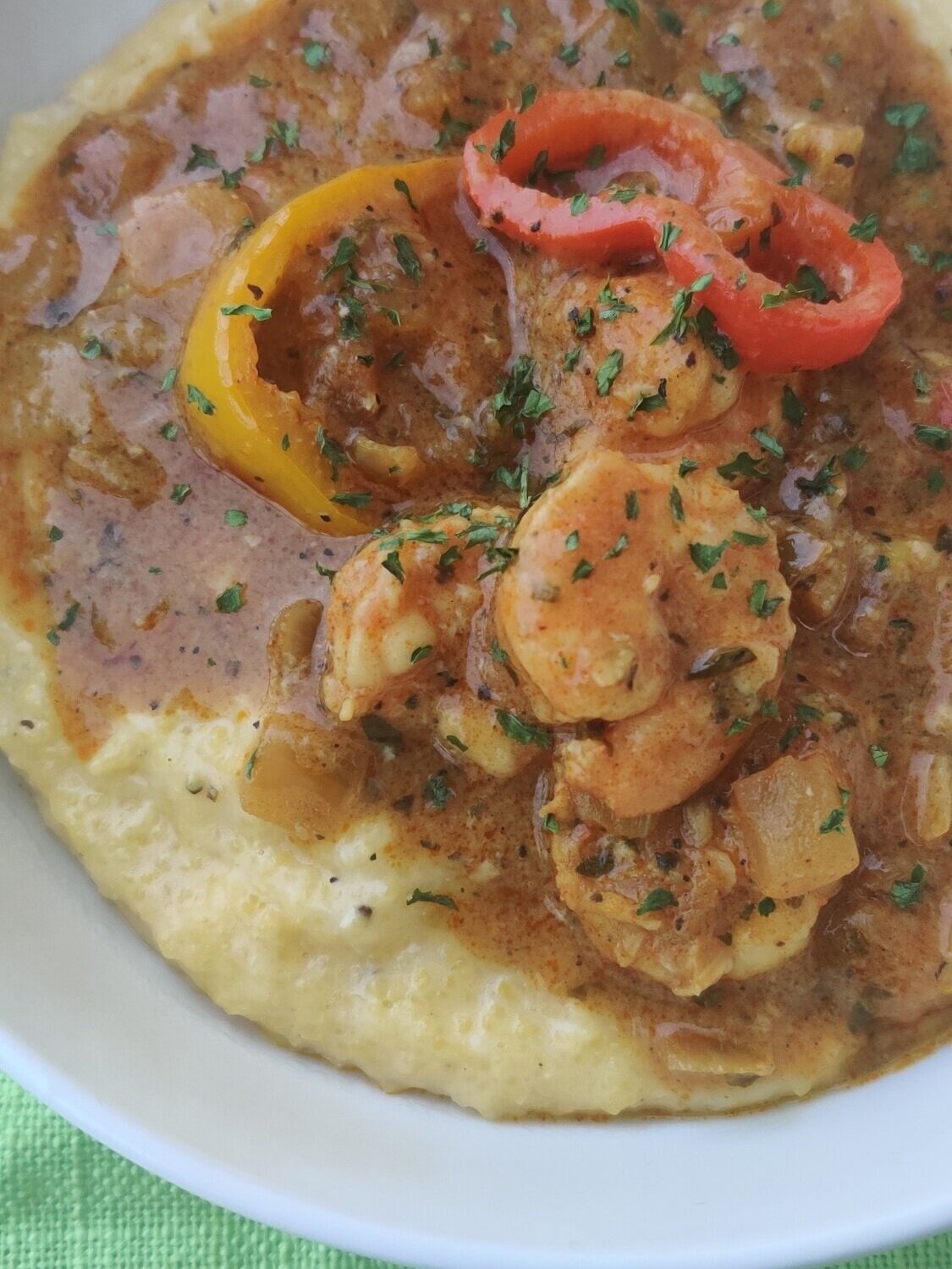
Easy Shrimp and Grits
Ingredients:
- 1/2 lb. raw large or medium shrimp (they may shrink/curl up when cooking so you may want them on the bigger side. You can also add a bit more if necessary)
- 1 tablespoon butter
- 1 tablespoon olive oil
- 1 tablespoon garlic, minced
- 1/2 teaspoon Cajun seasoning
- 1/2 teaspoon black pepper
- 1/2 teaspoon salt
- 1 teaspoon ginger
- 1 1/2 tablespoons lemon juice
- 1/2 cup tomato, diced
- 1/2 cup peppers, chopped
- 1/2 cup onion, chopped
- 1 tablespoon Worchester sauce
- 1 bouillon cube
- 1/2 - 1 cup water (add after bouillon cube)
- 1 cup broth
- 1 cup coarsely ground cornmeal
- 1 cup vegetable broth
- 1 cup milk
- 1 cup water
- 1/2 cup sharp cheddar
- 1/2 teaspoon black pepper
- 1 tablespoon butter
- Some cream or milk (optional)
Instructions:
- In a pan heat the butter and olive oil, add the garlic and seasoning for the shrimp and cook for about 1 minute.
- Add the onions and sweat them out for about 2 minutes. Then add the tomato and peppers and cook for another 2 minutes.
- Add the broth, Worchester sauce, bouillon cube, and water. Simmer for 5 minutes on medium-low heat.
- Add the lemon juice to the shrimp then add the shrimp to the pan. Cook for about 4 minutes, stirring sometimes. Turn over the shrimp if necessary to cook through, they are done when pink and no longer translucent.
- Prepare the grits. Boil the water, broth, and milk.
- Whisk a well in the middle of the pot and gradually pour in the cornmeal. Bring to a boil again but careful not to get hot cornmeal on you!
- Close the pot with a lid and simmer the cornmeal for about 20 minutes, periodically stirring and adding more water when necessary.
- Once the grits are done, whisk in the butter, cheese, and pepper. You can add some cream or milk to get them to your desired consistency.
- Serve hot with the shrimp on top! Garnish with parsley.
Calories
574Fat (grams)
28.02Carbs (grams)
55.08Protein (grams)
27.81Coconut Shrimp Po Boys
I love coconut and I think it's safe to say peoole either have a love or hate relationship with it. Not only do I like the taste, but the sheer vertility is just magical. You can use it in various forms in multiple ways - I'm talking coconut milk, oil, flour, water, cream, flakes you name it.
This recipe uses 3 of those forms - flour, cream and flakes to make one of the most famous sandwiches in the American South - the po boy! A delicious yet simple sandwich stuffed with fried shrimp, lettuce, tomato, pickles, and topped with an aioli, what more do you need? You can make them at home easy, with the infusion of some coconut to give a unique flavour. Try it out!
Ingredients
1/2 lb. shrimp, skin and tail removed, deveined
1/4 cup + 1-2 teaspoons old pay seasoning
3 eggs
1 cup coconut flour
2 cups shaved coconut
2 tablespoons coconut cream
1/2 cup mayonnaise (low sodium)
3-5 coco bread pockets/ sub rolls/ whatever bread rolls you have
1 cup lettuce, shredded
Video Tutorial
Instructions
Step 1
Pat your shrimp dry and season with old bay, set aside.
Step 2
Heat some oil to fry you shrimp ( the amount will depend on the size of your pot, use about 1 quart/ 4 cups to start). Watch carefully so it does not burn.
Step 3
While your oil heats up, prepare your shrimp. In 3 separate bowls, line up the coconut flour, the beaten eggs and the coconut flakes. Pat your shrimp dry, then systematically dip them in the flour, eggs, and coconut, set aside. Make sure as much of the surface is covered. ( You can use one hand for the eggs, the other for the flour and flakes to avoid clumping.)
Step 4
Once the oil is ready, get to frying! Do so in batches if necessary you don’t overcrowd the pot. Place the coated shrimp in the hot oil and cook for about 4-5 minutes. When browned, scoop out and place on a paper towel to soak excess oil. Turn off the heat.
Step 5
To prepare your sauce, whisk the mayonnaise and coconut cream. Add in the old bay tasting along the way, then set aside.
Step 6
Now you are ready to assemble your sandwich! Spread your sauce on the bread/roll. Lay on the lettuce, a few tomato slices, and the fried shrimp on top. Drizzle about a tablespoon of the coconut cream sauce on top.
Serve with pickles, fries, a salad, or whatever!
This recipe was developed as part of the Black Foodie Battle contest, a cooking challenge to make coconut a star of the dish. Check out the full episode and other contestants dishes at blackfoodie.co.
Eggplant and Fish Stew
Garden egg is another term for eggplant, and they lend themselves well to stews because they absorb like sponges. The traditional Ghanaian ‘garden egg stew’ - what inspired this recipe - uses a white eggplant different the type I have always known (the elongated, purple version). The palm oil adds a unique flavor and reddish colour to the dish, but if you don’t have any babassu or coconut oil should do! That said, with the palm oil, this is a dish you will want to make once in while since it's on the greasy side, but it’s super yummy!
Ingredients
1 cup onion, chopped
1 teaspoon butter
3 large eggplants (chopped and peeled)
1 can diced tomato (15oz)
1/2 jalapeno, chopped
1 teaspoon garlic
1/4 cup palm oil
2 tablespoon fish spice
1 tablespoon lemon juice
1 teaspoon lemongrass
1 tablespoon lemongrass spice
1 tablespoon + 1 teaspoon black pepper
1 tablespoon + 1 teaspoon salt
3 trout fillets or steaks with skin, halved
3 cups broth
2-3 boiled eggs (optional)
Instructions
Step 1
Marinate your fish in 1 teaspoon lemongrass, lemon juice, 1 teaspoon salt, and 1 teaspoon pepper. Put it in the fridge for about half an hour.
Step 2
Heat the butter, onions, jalapeno, and garlic in a large pot, sauté for 3 minutes.
Step 3
Add the can of tomatoes, broth, and palm oil, cook for 5 minutes.
Step 4
Add the fish, eggplant, fish spice, lemongrass, salt, and black pepper, simmer for about 20 minutes. Top with the boiled eggs and cook for another 2-3 minutes. Careful while cooking not to over stir and break down the fish.
Serve with mealie cobs, rice, plantains, or your starch of choice, enough for 3.


